Úton
Nyári Gyula - Úton
Köszönet
Úgy érzem, ezzel az albummal tartozom a roma társadalomnak, hogy az értékeit bemutassam az
egész világnak.
Legyen ez példa mindenki számára, hogy hova juthat el bárki, ha nagyon akar. A romákban óriási tehetség van mindenre.
Nem a szín, hanem a szív a fontos! Fogadjuk el egymást és éljünk boldogan!
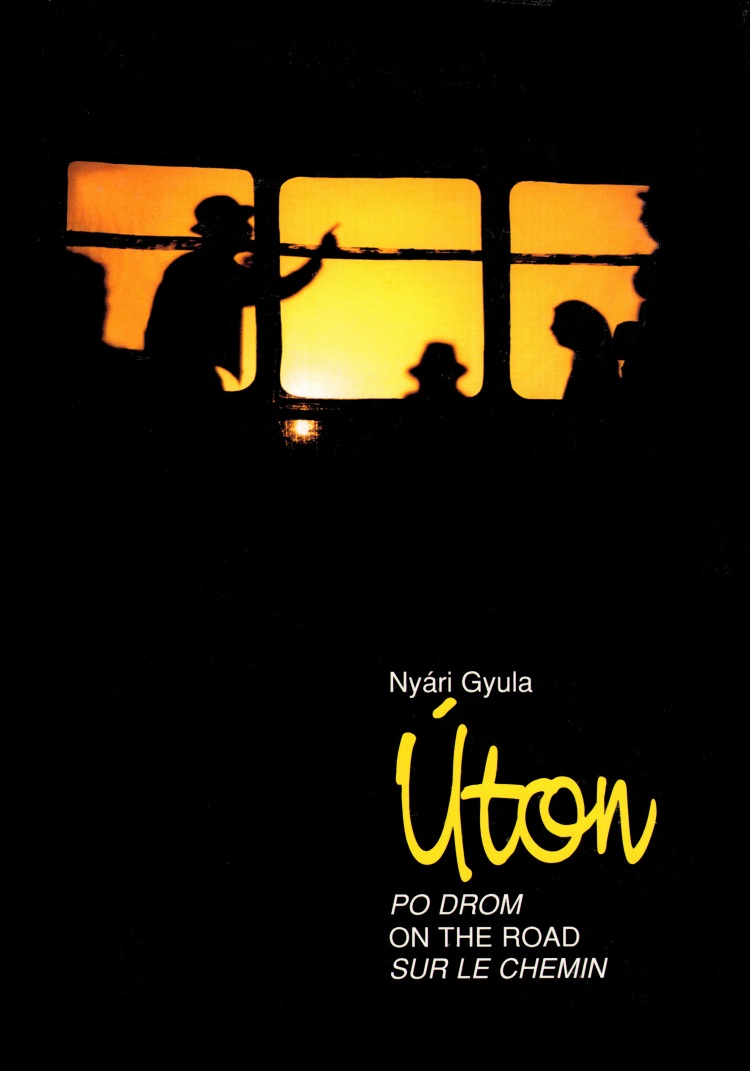
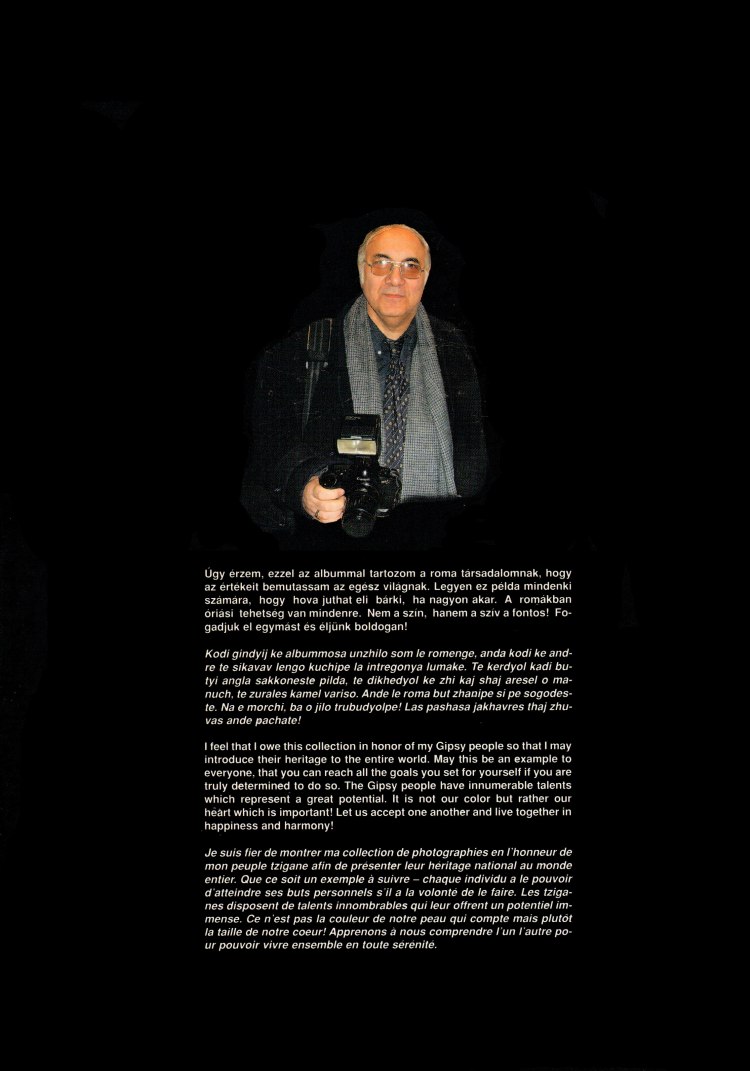
A borítón a „Cerhara" cigány táncszínház előadása látható.
Pej anglunyi rig si „le cerhara" romane teatrosko andresikavipe.
On the cover: The 'Cerhara' Gipsy Dance Theatre's performance.
Sur la jaquette: Le spectacle du théâtre de Danse Tzigane de l'ensemble 'Cerhara'.
Köszönetet mondunk mindenkinek, aki hozzájárult a könyvben való szerepléshez, büszkén vállalva cigány származását.
Najisipe phenas sakkoneske, kon ladadaspe andej ginadyi te ashelandre, thaj phuttyarimasa ladadas pesko romanyipe.
We would like to thank all of you who have graciously participated in this album and who are proud of their Gipsy heritage.
-
Nous désirons remercier tous ceux qui ont volontairement participés au succès de notre album et qui sont fiers de leur héritage tzigane.
Külön köszönet Keglevich Zsuzsannának és Choli Daróczi Józsefnek, akik önzetlenül vállalták a könyv fordítást.
Najisipe phenas la Keglevich Zhuzhake, thaj le Choli Daróczi Józsefoske, Kon biphutty ladade o boldyimato, hatyardes kodi, ke trubul te arakhvadyol kadi ginadyi.
We would like to express our appreciation to Ms. Zsuzsanna Keglevich who prepared the English and French translations as well as to Mr. József Choli Daróczi for his Gipsy language translations considering that they both donated their work to the benefit of this album's publication.
Nous désirons surtout remercier Mme Zsuzsanna Keglevich pour les traductions en anglaiset frangais et M József Choli Daróczi pour les traductions en langue tzigane.lls ont tous les deux offert leur oeuvre gratis à l'auteur.en ressentant l'importance de la parution de cet album.
Köszönjük a PENDOLA HOLDING KFT. és GARAY RT. (Budapest, Baross u. 42.) kiadáshoz nyújtott támogatását. -
Kiadó: QUINT Kft.
Felelős kiadó: Jászberényi Klára
Tartalomért felelős: Nyári Gyula
Budapest, Kálvária tér 18.
fotosgyula45@gmail.hu
Szerkesztette: Bugyi Sándor
Angol és francia fordítás: Keglevich Zsuzsanna
Cigányra fordítás: Choli Daróczi József
Nyomdai előkészítés: COLOR POINT Kft.
Műszaki szerkesztő: Schneemaier Péter Bence
Nyomdai munkák: Korrekt Kontakt Kft.
Nyári Gyula Budapestjei
A szociográfia eredetileg a magyar faluhoz kötődött. A két világháború közti írók legjobbjai a parasztság, a falu, az akkor még a lakosság jó felét kitévő földművesek életének, szegénységének írói ábrázolásával igyekeztek felrázni az országot. A hetvenes években újraéledő szociográfia a felbomlóban lévő hagyományos mezőgazdaságról, az újonnan formálódó városokról, és az új munkásságról írt látleleteteket, Ha jól tudom, a kialakult, vagy mozgásban lévő városi életformákról nem készült nagyobb lélegzetű szociografikus mű.
Nyári Gyula nem a szó, hanem a láttató kép eszközeivel „írta meg" ezt a hiányzó városi szociográfiát. Nem szakmám a képek értő értékelése - de azt hiszem, sugárzóan szép, sokszor eredeti beállítású, az igazságkeresés szenvedélyével készített műveket látunk. A művek tárgya pedig a mai sokarcú, örök és változó város, s annak fókuszában a cigányok, akik akarva-akaratlan ide készültek, vagy ide sodródtak. Készültek, mert többet-jobbat akartak annál a helynél, amelyet egy sorsszerűséget tükröző statisztikában elfoglaltak volna, s ez - mérhetetlen erőfeszítésekkel- sikerült is. Nem sokat akartak, csak annyit, mint „mindenki". Hogy orvos legyen, aki ehhez érez tehetséget, tanító, szakmunkás, műkereskedő, színész, aki ahhoz. Az akaratlan sodródás áldozatai is megjelennek előttünk, akik alól kicsúszott a talaj, akik hiába hagyták el a faluszéli putrit, a városban is csak az az életforma jutott mára nekik, mert elvesztettek munkát, lakást, elvesztették a sorsuk jobbításába, és az önmagukba vetett hitet. Nyári Gyula egyforma empátiával, ember-és társadalomismerettel ad hírt mindőjükről, a városi romák ezerféle sorsáról, legyenek ők befutott tanárok, vagy hajléktalanságra, esetleg börtönre ítélt számkivetettek. Ebben a sugárzásban a csúnya is szép lesz, a szép mögött meg kitapinthatjuk a keservesen megtett utat.
A képek azonban nem csak Nyári Gyula sokarcú Budapestjét mutatják, hanem a sokrétű embert is. Akinek a képei mögött ott van büszkén vállalt cigánysága, magyarsága, még a józsefvárosi budapestisége is. Átsüt rajtuk a muzsikához való bensőséges viszonya, hiszen ő maga is, családja is zenében és zenével élnek. Ez a számtalan identitás, s a sokakkal való azonosulás egyszerre jelenik meg e kötet lapjain. Semmi emberi nem idegen Nyári Gyulától. S talán ettől olyan emberi és emberséges ez a művészi munka.
Ferge Zsuzsa
Magunkat jöttem megmutatni...!
Nyári Gyula albumáról
Magyarország a világranglista élvonalába tartozik a cigányokról készített szociofotók készítése, megjelentetése tekintetében és szempontjából. Örömmel, jó érzéssel tapasztalom, végre e nagyon fontos és nagyon is tudatformáló területén a művészetnek, változást hoz az új évezred. Azt gondolom Nyári Gyula albuma (is) bizonyító erejű lesz abban a folyamatban, amelyben cigány művészek egy csoportja másként látja-, és másként láttatja a cigányokat, mint kívülálló társai tették és teszik. A kuriózum, az extrém helyett a valós cigány-világ bemutatása. Itt, és most is mondanom kell: ezért szükségeltetik Magyarországon, Európában a cigány származású alkotóművészek munkáinak közreadása, terjesztése. Azért, mert csak ők tudják, ők képesek az érem nem csak fonák oldalát megmutatni; meglátni és láttatni a szépet, az európai mércével is mérhető jót, a helyeset, mert csak ennek alapján lehet bennünket mérni, értékelni, minősíteni, elfogadni.
Örömmel és elsősorban kellemes meglepetéssel tapasztaltam, Nyári Gyula fotóművész először és elsőként mutatja be a hazai cigányságot a pozitív tulajdonságok oldaláról. „Úgy érzem, hogy ezzel az albummal tartozom a Roma Társadalomnak, hogy értékeit bemutassam az egész világnak."- írja Ars Poetica című írásában. Igaz! Tartozik! Tartozik, mint valódi és igaz művész, és tartozik, mint cigány ember is.
Gratulálok, és kérem az Istent, tartsa meg művészi törekvéseiben, tartsa meg és adjon erőt, hogy népe valódi híradósa legyen.
Choli Daróczi József
LE NYÁRI GYULASKI BUDAPESHTA
E sociografija majanglal karing le ungrika gava phandyolaspe. Mashkar le duj bare, lumake maripe zhude literaturarenge majlashe le prostongo, le gavenge, atunchi inke le themeske manushenge kam dopash zhenen avri shute phuvake butyarenge trajos, lenge chorripes sikavnas andre la literaturake chokajesnca, kadalasa sidyarnas opre te mishkin le themes. Ande le eftavardeshti bersha pale opre trezolaspe e sociografija aba le opre phu-terdyile phuvake butyaren, le nyevardyle foron thaj pa le nyeve fortune butyaren sikavlas andre. Te mishto zhanav, pa le nyeve, vaj inke feri ande mishkimaste kerdylel nyeve foronge trajos khonyik chi sikadas andre ande ekh majbari sociografija.
O Nyári Gyula na la vorbasa, le jakhenca thaj kiponca „iskirisardas" tele kadi foroski sociógrafija. Naj muri butyi le kipongo hatyaripo- ba kodi gindyij, fimlymasa shukar, butivar chache andre ashajipesa, le chachpes rode dukhimsa kerde butya dikhas. Le butyangi materija pale le adyesutne, bute mosko, punejluma ashinde thajsa sakattyivar kaver foros, thaj ande kodolesko mashkar le rom, kon kamles vaj na kamles kathe gotosajle, vaj feri kathe pele. Getosajle, ke majbut-majlasho kamnas sar so pe kodo than maj majanglal besh-nas, sos ekh chorripeske trajos sikadya glindasa sikadyi shtatistika dinosas len, thaj kadi-zurales bara zorasa vi zhangle te keren. Na but kammnas kadal manusha ,feri kattyi, sar so „sakko manush" kamel. Sastyari te shaj avel, kodo kon karing hatyarel ande peste zor, sitt-yari, butyari, puranyimatongo kupco, aktori, kon karing kodi hatyarel ande peste zor. Vi le lashimasko tele pelyipe sikadyol angla amede, tela kaste avre naslas e phuv, kodol, kon iva mukhle kothe pe le gavesko agor e kolyiba, vi ando foro numa kodo trajo pelasoe lenge, k epe adyesteste aba xasarde pengi butyi, pengo kher, xasarde pege trajoske lasarimasko, thaj von ande pende zurardyi paty. O Nyári Gyula jekhutnya empatijasa, manushes- thaj sociote-toske pinzharimasa del sirma pa lende, pa sakkonende. Pa le foroske romengo mija falo trajo shaj sile von opre vazde sittyara, vaj pe bikhereske, kam robijake avri pizde zhene. Ande kadi raza vi zhungalo, vi shukar avla, ba pala o shukarimo sama shaj las le pharimasa tele shuto lungo drom.
Ba le kipura na feri le Nyári Gyulaska Budapeshta sikaven, ba vi le bute monge manushes. Pala kaske kipura kothe ashel le phuttyarimas pes romeske phendo, pes ungroske phendo, inke vi le józsefvároseskireske pes phendo zheno. Pherdal pekel pa kadal kipura kodi ke kon kerdasle zurales pashe ashel karing le lavutara, ta haj ke vi voj thaj lesko nyepeto andej lavutarija, la lavutasa zhuven. Kado butfalo identiteto, le bute zhenenca jekhkerdyipe jokharsa sikadyol pe kadala ginadyake lila. Khanchi, so manushanoj naj strejino kathar o Nyári Gyula. Dore kathar kadij kasavi manusheski thaj manushanyi kadi artisticko butyi.
Ferge Zsuzsa
Amen avilom te sikavav...!
Pa le Nyári Gyula-sko albummo
O Ungriko them mashkar le majanglune thema inkrelpes maskar kodol kon societutnyi kipura den avri pa le roma. Bara loshasa thaj jilesa lav sama, ake, pe kadal zurales trubultne thaj zurales phari butyi la artistikake nyevo fundo anel kado nyevo bish taj jekto mijato shel bersh. Kodi gindyij ke le Nyári Gyulasko albummo chachimasa zhanela andre te sika-vel kodol trabi, kodol butya save romane artistikake manushake unyi zhene kaversar dikhen-thaj kaversar sikaven andre le romen, sar kodol gazhe kerde, thaj keren vi akanak, kon pa kadi traba keren penge kipura. Kodol, feri o extremo thaj o bipinzharimo sikade thaj sikaven andre pa e chachi romanyi luma: anda kadi trubul po Ungriko them, ande e Europa andre te sikaven le romane artistikake manushenge butya. Anda kodi, keferi von zhanen, ferivon shaj andre ti sikaven pa le roma lengi majbaxtalyi „kaver" rig; te dikhen thaj te dik-haven o shukar, vi la Europaka cirdinyasa shaj cirdino lashipe thaj shukaripe, ke feri pala kadal shaj zhanen amen pe kodo than te shon kaj amaro thaj si, amaro than shaj avel ando Ungro thaj andej Europa. Pala kadal but-but lashe trabi zhanna te lename mashkar pende le gazhe.
Loshasa, thaj majanglal shukar chudimasa lom sama ke o Nyári Gyula kiputno artistiko anglunes thaj majanglal sikavel andre amare themeske romen pa pengi lashi thaj shukar rig. „Kodi gindyij ke kadale albummesa unzhilo som le romenge, savesa andre trubul te sikavav lengo kuchipo la intregonya lumake." Ramol pe peste ande ande peski Arsh poetica. Cha-chej! Unzhiloj, sar sakko romano artistiko unzhiloj. Sar sakkop chacho thaj chachikano ar-tisto kon mashkar le rom avel. Thaj unzhiloj sar sakko rom.
Te zhutil les o Del o Svunto ande peske artistikane gindura, te inkrel les o Del, thaj te del les zor, te shaj kerel peski shukar butyi anda pesko nipo: chacho sirmar i te ashel.
Choli Daróczi József
THE MANY FACES OF BUDAPEST
Sociography originally was linked to the rustic Hungarian village life. Between the two world wars, some of the best Hungarian writers actively wrote about the dismal poverty in which peasants lived in their countryside villages, whose number made up half of the country's population at the time. These writers attempted to heighten people's awareness of the conditions in which these hard-working peasants lived. The seventies brought on a renewal in the branch of sociography and reporters began documenting what they witnessed through the disintegration of tradiţional farming methods, the newly established towns as well as the upcoming working class' presence in the society. If I am not mistaken, no extensive documentation was produced on the developing cities' lives of that period.
The photographs of Mr. Gyula Nyári have brought to light the visual side of this missing urban sociography. I am not an expert in this art field but I believe that his photos truly reflect those realistic images, the beauty in his original compositions and the seeking of the Truth in a most passionate manner. His works bring us the faces of the urban dwellers in the ever-changing city life among whom we find a special focus on the Gipsy people whose fate lured them to these locations, often by sheer chance. Their journeys led them to these places in the hope of finding better living conditions and new opportunities they did not have in their places of origin. They weren't asking for much but only as much as others got. To become a doctor, if he or she so desired, or a teacher, skilled worker, art dealer, actor, which ever profession suited the individual. Destiny played into their lives and willingly or not, the rug was often pulled out from under them, eventhough they left their countryside hovels for a better life in the city. This move often resulted in the same kind of strife as their earlier Situation brought upon them . . . having lost their jobs, their hearths, the chance for improving their living conditions and even the belief in themselves. Mr. Gyula Nyári's photographs exude a kind of humanistic empathy woven through with the social awareness necessary for introducing the viewer to the multitude of Gipsy destinies present in urban life today, should they be famous professors, homeless persons or possibly outcasts from prison. In this vein, ugliness turns beautiful and behind this beauty is the tangible bitter road taken along the way.
The photographs of Mr. Gyula Nyári not only show us the various faces of Budapest but also the diversity in the social classes. He proudly affirms his ties to the Gipsy and Hungarian peoples as well as to his 'Józsefváros' district in Pest. His works offer a transparent view of his undeniable and inherent musical being since he works and lives in music, together with his family. Mr. Nyári's rich cultural identity transcends throughout his artistic work which has resulted in the Publishing of this beautifully unique album. There is nothing 'human' which is 'unknown' to Gyula Nyári and that is why his artistic endeavor is truly human and humanistic.
Ferge Zsuzsa
I HAVE COME TO INTRODUCE OURSELVES....!
COMMENTARY on MR. GYULA NYÁRI's PHOTO ALBUM
Hungary stands as the forerunner in its Publishing of sociographic photos depicting the lives of Hungarian Gipsies. It is with great joy that I experience a very significant change in the attitude and conceptualization represented by artists brought on by the turn of the 21st Century. I believe that Mr. Gyula Nyári's photo collection reinforces the new perspective with which the viewer can have a better look at the true lives of Gipsies in Hungary -rather than seeing this depiction in photos prepared by those outside the Gipsy community. The novelty in his point of view is bringing to light their true lives instead of extreme images. This is why I feel that it is high time for those artists of Gipsy origin in Hungary and Europe to propagate the fruits of their work. Since these artists are the ones who have the capability of showing 'the other side of the coin', so to speak, they can deliver the viewer the 'good' and the 'beauty', which can also be measured by European standards. This is the only way in which our culture can be evaluated in order to gain true acceptance from society.
It is a pleasant surprise to see Mr. Nyári's artistic photography which is a novelty within itself: projecting the positive side of the lives of Gipsies, here at home in Hungary. „I feel that I owe this collection in honor of my Gipsy people so that I may present their heritage to the entire world", writes Mr. Nyári in his 'Ars Poetica'.
True! He does have an obligation as a real and qualified artist and as a Gipsy as well. I congratulate him and pray to God that he be further inspired in his artistic endeavors, that he be blessed with strength and determination in order to be a true messenger for his People.
Choli Daróczi József
LES DIVERS VISAGES DE BUDAPEST
Dès son début, la sociographie a toujours été reliée á la vie rustique de la Campagne des villages hongrois. Entre les deux guerres mondiales, plusieurs des grands écrivains hon-grois, ont écris sur la dure vie des paysans pauvres qui habitaient la Campagne, et qui com-posaient 50% de la population de cette époque. Ces écrivains avaient l' intention ferme d'at-tirer la conscience collective des citoyens à l'égard des conditions qui dominaient la vie de ces paysans travailleurs. Les années soixante ont apporté un renouvellement dans le domaine de la sociographie et c' est à cette époque que les journalistes ont commencé une documentation de leurs témoignages personnels - sur la défaite progressive des méthodes agricoles traditionnelles, la nouvelle formation des petites villes ainsi que la présence de la nouvelle classe ouvriére dans la société. Si je ne me trompe pas, aucun reportage n'a été réalisé sur le développement de la vie urbaine de cette époque.
Les photos de monsieur Gyula Nyári illuminent le cȏté visuel de cette sociographie urbaine. Je ne suis pas spécialisée dans le domaine de la photographie, mais je pense que ses photos sont un reflet de ces images réalistes, de la beauté dans sa composition originale et de sa recherche de la Vérité avec grande passion. Son oeuvre nous place face-à-face avec les résidents d'une viile en constante transition: nous nous trouvons devant le peuple tzigane qui s' est rendu, par hasard en pleine viile dans les quartiers de Budapest. Leurs trajets les ont menés á la capitale afin de trouver un bon travail et de construire une meilleure vie, ce que ce peuple n'a pas pu achever sur sa terre natale. La seule chose qu' ils souhaitaient, c'était d'avoir autant de chance que les autres citoyens. Devenir peut-étre médecin, si possible, ou instructeur, ouvrier spécialisé ou antiquaire, acteur ou actrice, selon la profession qui conviendrait le mieux à chacun. Le destin a toujours joué un grand rȏle dans leur vie. Ils ont fréquemment trouvé des obstacles sur leurs chemins et la vie urbaine leur a souvent causés de grands chagrins comme dans le temps passé: ayant perdu leur gagne-pain et leur foyer - leur chance d' améliorer leur vie était de regagner le courage et de garder l'espoir. C' est à travers les photos de Monsieur Nyári que les spectateurs se sentent les plus proches des nombreux destins des tziganes qui font leurs vies dans la capitale d'aujourd'hui, comme professeurs reconnus, personnes sans abri ou exclues. De cette facon, la laideur se transforme en beauté et sous la beauté on découvre le chemin amer et tangible qu'ils ont pour-suivi tout au long de la vie.
Les photos de Monsieur Gyula Nyári reflètent aussi les divers caractéristiques des classes sociales. II déclare avec fierte son alliance aux peuples tzigane et hongrois ainsi qu' à son arrondissement de 'Józsefváros' dans la ville de Pest. Son oeuvre se lie incontestablement à son étre musical puisqu'il vit depuis ses débuts une carrière de musicien, comme toute sa familie. Cette identité culturelle si riche ressort à travers ses photos publiées dans cet album unique. Pour Monsieur Nyári, ce qui résulte dans l'achèvement de cette oeuvre à la fois artistique et humaniste c'est qu'il n'y a rien d'humain qui lui soit étrange.
Ferge Zsuzsa
„Je suis venu pour nous présenter. .. !"
~ Réflections sur l'album photographique de monsieur Gyula Nyári ~ écrit par monsieur József Choli Daróczi
La Hongrie fait une première en publiant des photographies sociographiques sur la vie des tziganes hongrois. C'est avec grand plaisir que je constate un changement fondamental dans l'attitude et le concept représentés par les artistes depuis le début du 21eme siècle. Je crois que les photos de monsieur Nyári soulignent cette nouvelle perspective. Elle permet aux spectateurs de mieux comprendre la vie actuelle des tziganes de Hongrie - à travers la lentille d'un photographe issu de la communauté tzigane. La nouveauté de son expression invite le spectateur à voir la réalité de leurs vies et pas seulement les images extrêmes.
C' est pourquoi je pense qu'il est temps pour les artistes hongrois et européens d'origine tzigane de représenter leur 'récolte' au monde entier. Puisque ces artistes ont le pouvoir de faire connaître l'autre côté de leur histoire, ils peuvent présenter ce qu il y a de beau et de bon, ainsi que ce qui peut être mesuré par les valeurs européennes. Nos dons artistiques et culturels sont les meilleurs atouts pour gagner le respect de la société dans laquelle nous vivons.
Quelle surprise agréable de voir les photos de monsieur Nyári qui nous présentent l'aspect positif de la vie des tziganes, chez eux en Hongrie. Comme l'écrit le photographe dans son 'Credo' . . . „Je suis fier de montrer ma collection de photographies en l'honneur de mon peuple tzigane afin de présenter leur héritage national au monde entier."
C'est vrai! 'Noblesse oblige' dans le cas de cet artiste d'origine tzigane bien qualifié. Je le félicite et demande au bon Dieu qu'il soit de plus en plus inspiré dans ses épreuves artistiques et qu'il soit bénit de bonne santé et de détermination pour qu'il puisse devenir un vrai messager de son Peuple.
Choli Daróczi József
Nyári Gyula - Úton
Nagyvárosi életképek
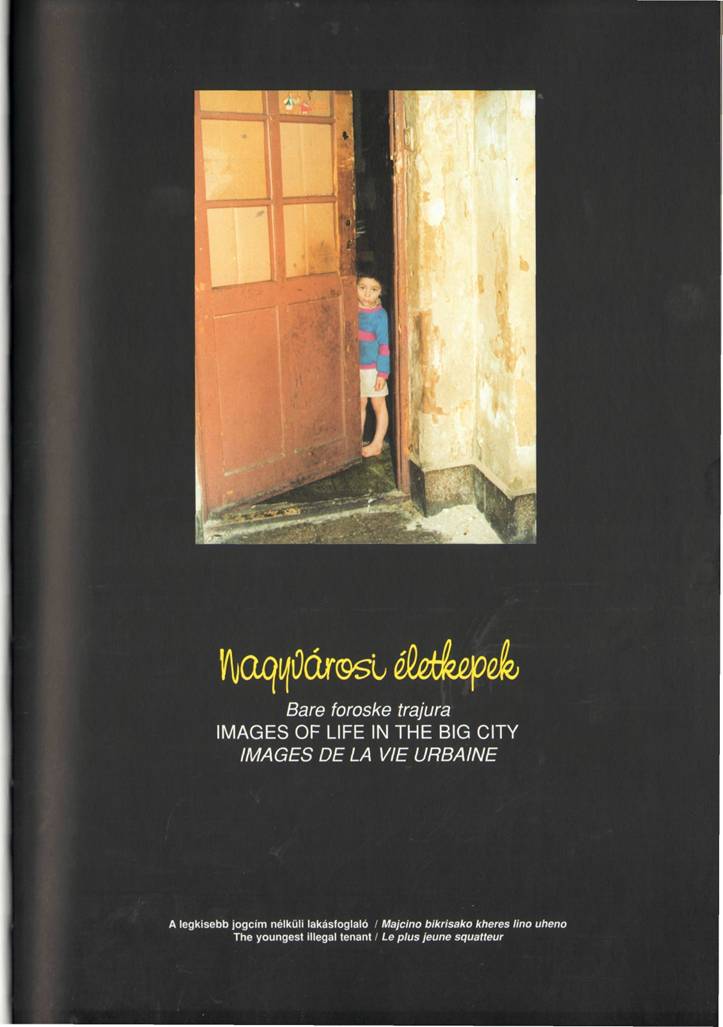

- Budapesten, a VIII. kerületben, az 1750-es évek közepétől áll itt, a Tavaszmező és Koszorú utca sarkán ez a pléhkrisztus.
- Budapeshta, VIII. krujo pe la Tavaszmező- thaj pe la Koszoru vulyicako kolco la pulnijako trushul, savo de kathar le 1750-to shela bershengo mashkar ashel pe kado than.
- Tin statue of Christ, standing on the corner of Tavaszmező and Koszorú streets since the 1750s, in the 8th district of Pest.
- Statue du Christ en tôle, située au coin des rues Tavaszmező et Koszorú depuis les années 1750, dans le 8éme arrond. de Pest.
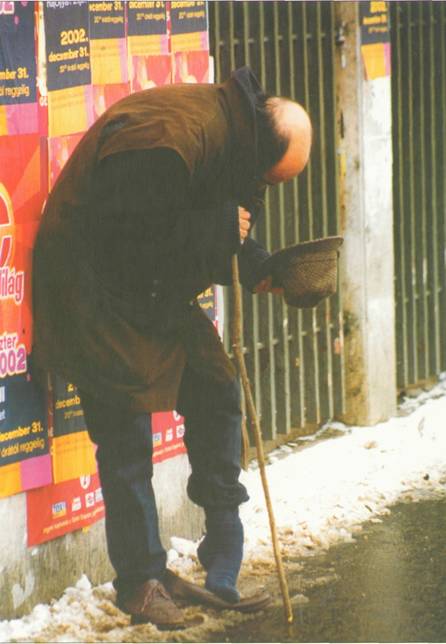
- Koldus a Blaha Lujza téren (Budapest, VIII. kerület).
- Budapeshta, VIII. krujo la Blaha Lujza placco - mangari
- A street beggar on Blaha Lujza square in the 8th district of Pest.
- Un mendiant sur la place Blaha Lujza du 8éme arrond. de Pest.
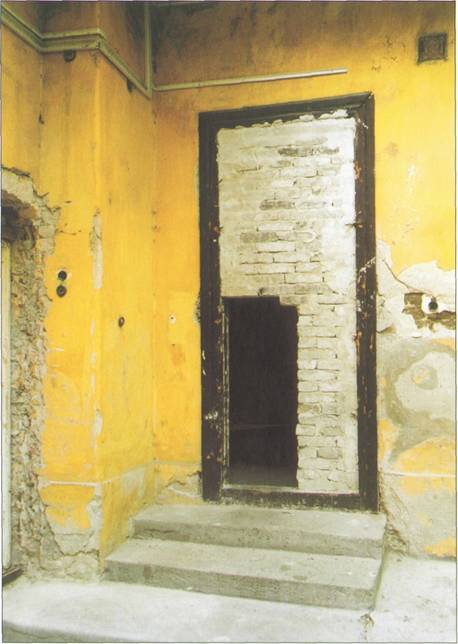
- Budapest, VIII. kerület, Magdolna utca. Falbontással jutottak be az önkényes lakásfoglalók. Azóta a házat lebontották.
- Budapeshta, VIII. krujo Magdolna vulyica, kaj le zidoske burdimasa gele andre le bikrisake khereske line zhene. De atunchi o kher teleburdisarde.
- Arbitrary tenants demolish the entryway to a condemned apartment building on Magdolna street in the 8th district of Pest. . . the building has since been razed.
- Des squatteurs ont démoli l'entrée d'une maison inhabitable dans la rue Magdolna du 8éme arrond. de Pest. . . depuis le bâtiment a été démoli
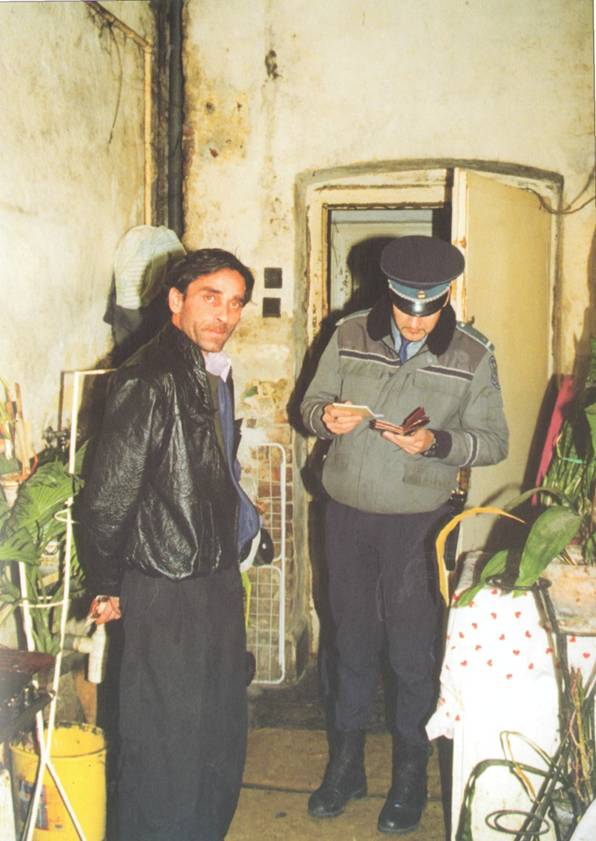
- Budapest, VIII. kerület, Baross utca. Önkényes lakásfoglaló igazoltatása.
- Budapeshte VIII. krujo Baross vulyica bikrisake kheres lino zhene financisaripo.
- Police verifying arbitrary tenants' papers on Baross street in the 8th district of Pest.
- La police vérifiant l'identité des squatteurs dans la rue Baross du 8éme arrond. de Pest.
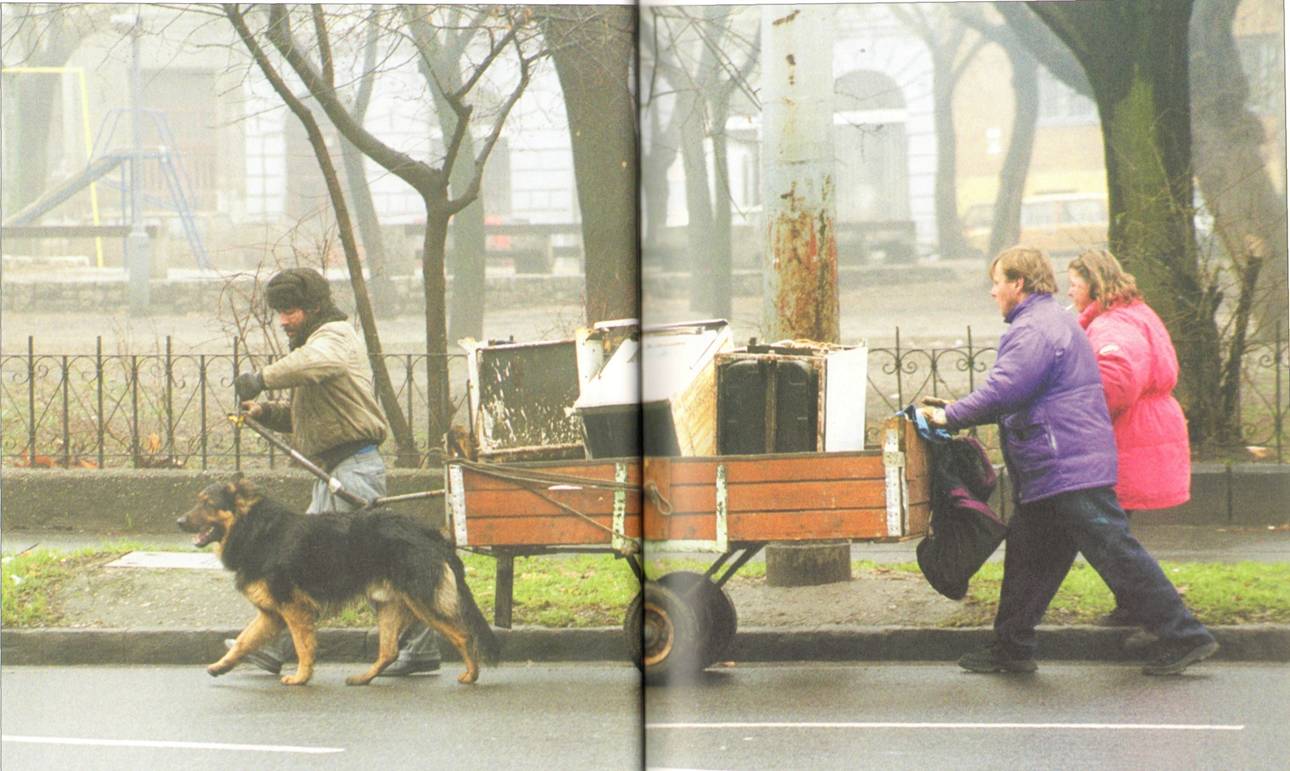
- Budapest, VIII. kerület, Kálvária tér. — Vasgyűjtők, avagy úton Európába.
- Budapeshta, VIII. krujo Kalvariako placco -Sastri kidara, vajso, po drom karing e Europa.
- Scrap-iron collectors ... in other words, heading for Europe on Kálvária square in the 8th district of Pest.
- Récupération d'objets de fer.. . sur le soi-disant chemin qui mène en Europe, sur la place Kálvária du 8éme arrond. de Pest.
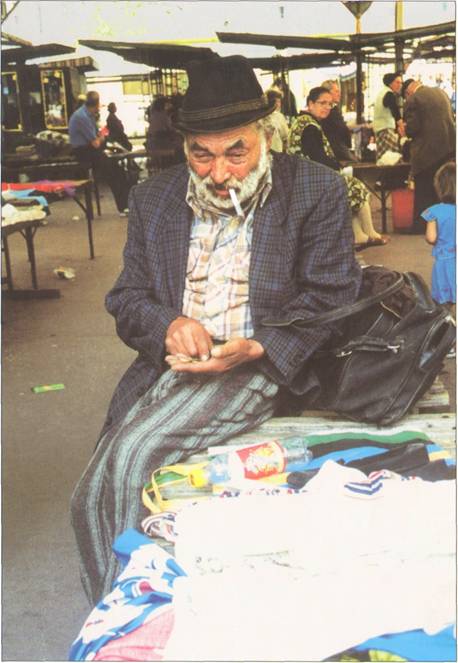
- Budapest, VIII. kerület. — Teleki téri árus.
- Budapeshta, VIII. Bikinari pe o Teleki placco.
- Vendor on Teleki square in the 8th district of Pest.
- Vendeur sur la place Teleki du 8émearrond. de Pest.
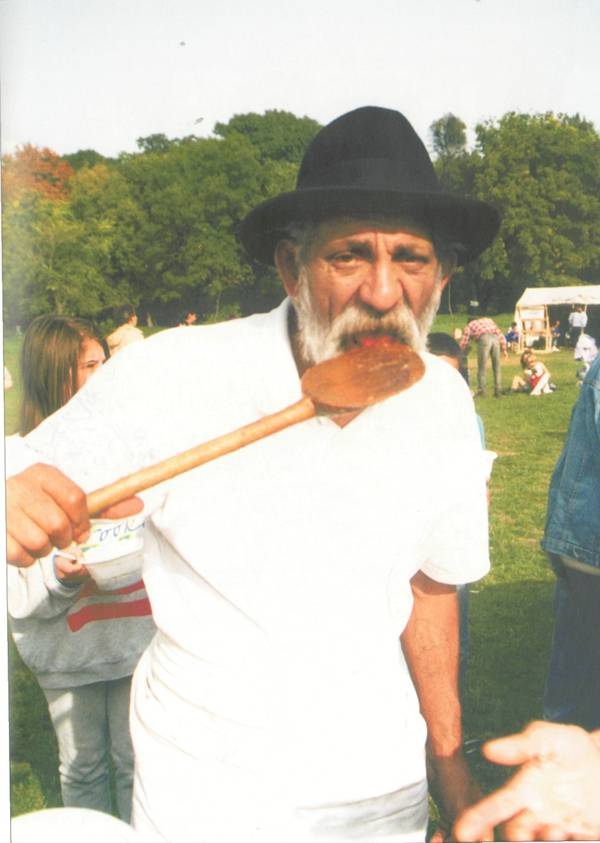
- Choli Daróczi József pörköltfőző versenyen.
- Choli Daróczi József maskirajimasko zhanipo
- Mr. József Choli Daróczi ... a Hungarian stew-making competition.
- M. József Choli Daróczi... à un concours culinaire de ragoût à la hongroise.
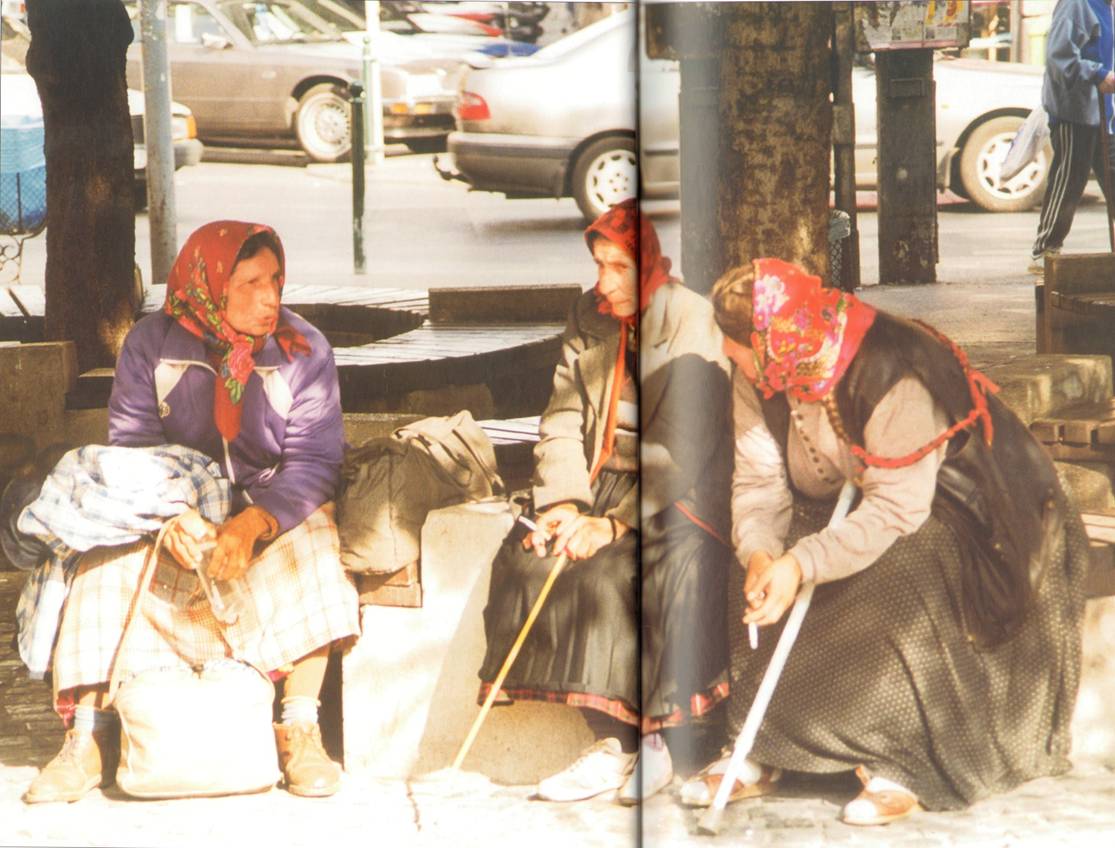
- Erzsébet körút: cigányasszonyok a nagyvárosban.
- Erzhebatako krujodrom - romane zhuvlya ando baro foro.
- Gipsy women in the big city on Erzsébet Boulevard in Pest.
- Femmes tziganes en grande ville sur le boulevard Erzsébet à Pest.
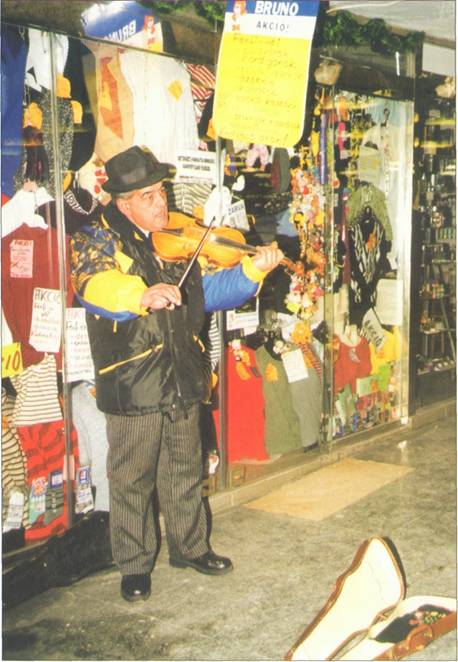
- Budapest, VIII. kerület. — Karácsony másnapja a Keleti pályaudvar aluljárójában.
- Budapeshta, VIII. krujo le Orientoske zibanoski gara - telel phirdyimasko drom Krechunesko dujto dyes.
- Underpass at the Keleti train station the day after Christmas in the 8th district of Pest.
- Le passage souterrain de la gare Keleti le lendemain de Noël dans le 8ème arrond. de Pest.
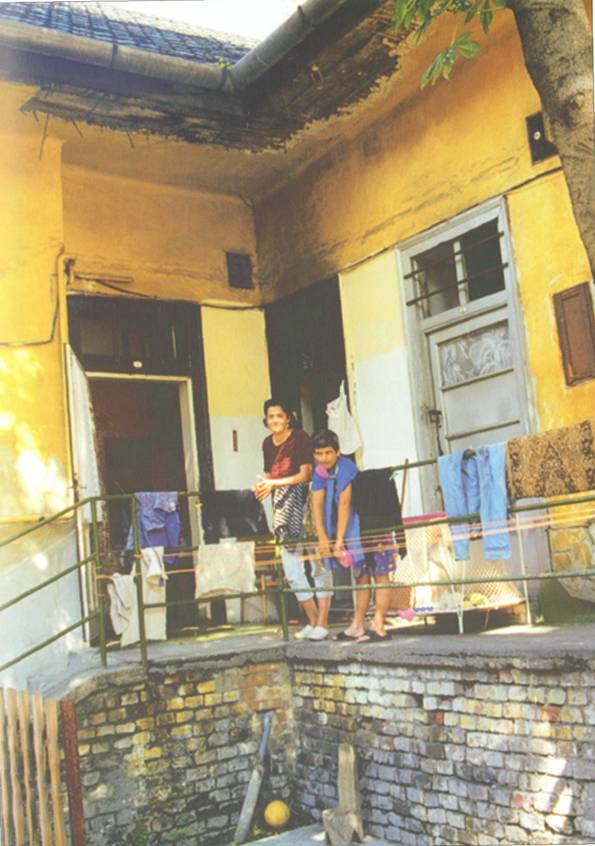
- Budapest, VIII. kerület, Illés utca. — Kívül romos, belül tiszta.
- Budapeshta, VIII. krujo andej Illesh vulyica. Avral burdime, andral uzho.
- In ruins on the exterior with an orderly interior. Illés street in the 8th district of Pest.
- Maison en ruine de l'extérieur, mais en règle à l'intérieur dans la rue Illés du 8éme arrond. de Pest.
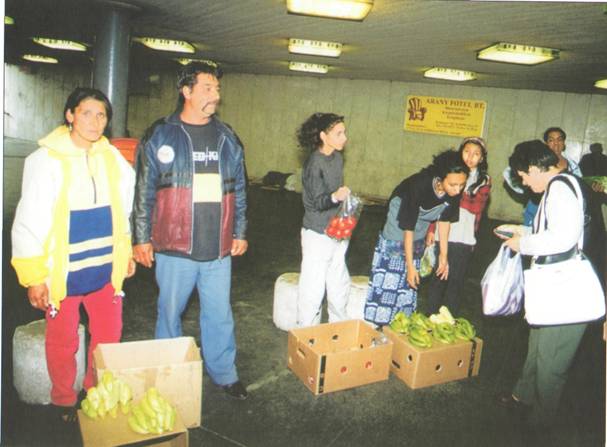
- Keleti pályaudvar - engedély nélküli árusok.
- Le Orient zibanoski gara - bilileske bikinara.
- Illegal vendors at the Keleti train station.
- Vendeurs illégaux à la gare Keleti.
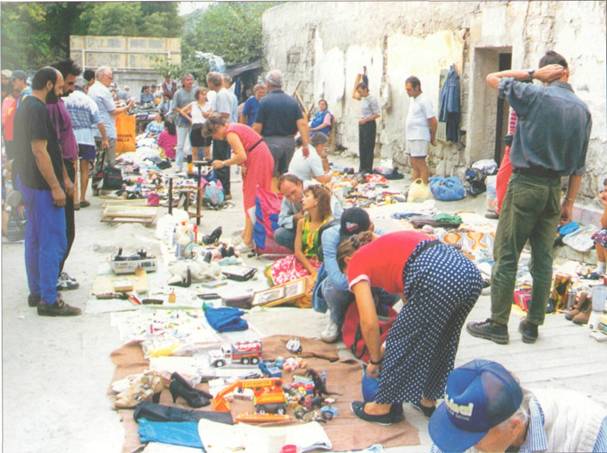
- A Teleki téri bazár. Azóta társasház épült a helyén.
- Le Teleki placcosko bazari - d'atunchara ucho kher vazde opre pe lesko than.
- Open-air market on Teleki square . . .a condominium has taken its place since.
- Marché en plein air sur la place Teleki... où se trouve actuellement un immeuble collectif.
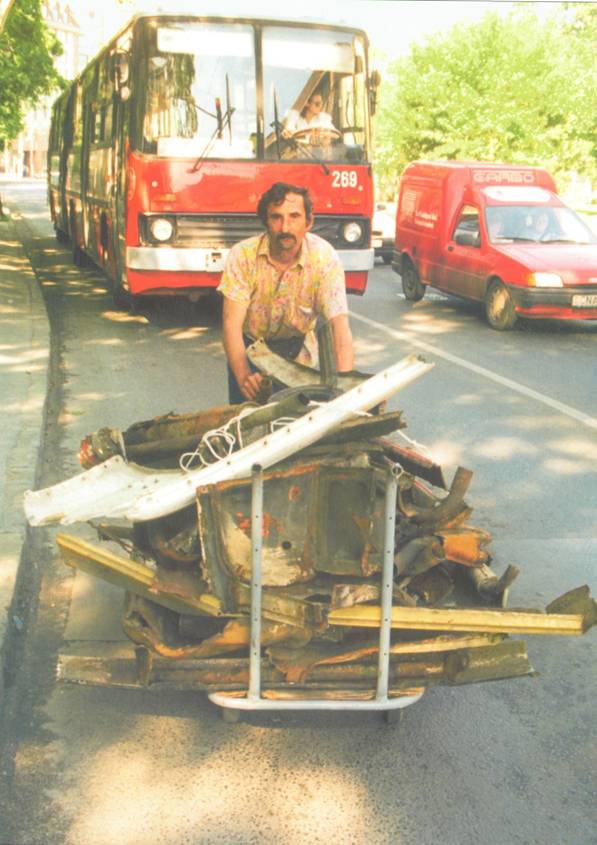
- Budapest, VIII. kerület, Kálvária tér. — Hulladékgyűjtő.
- Budapeshta, VIII. krujo Kalvarija placo - Mashkar le shudime trabi o rodari zheno.
- Refuse collector on Kálvária square in the 8th district of Pest.
- Décharge publique sur la place Kálvária dans le 8éme arrond. de Pest.
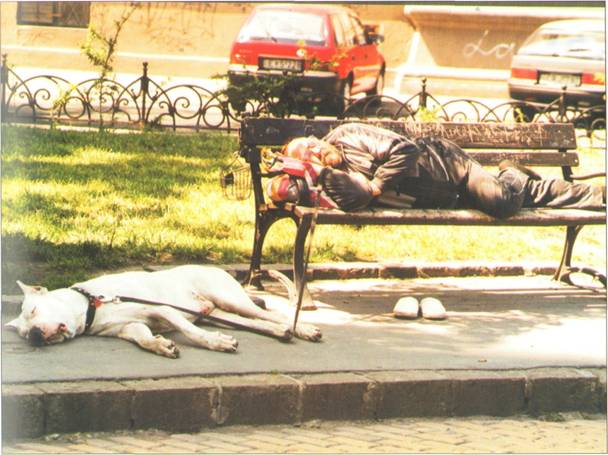
- Budapest, VII. kerület, Rózsák tere. — 35 fok árnyékban.
- Budapeshta, VII. krujo Ruzhengo placco - 35-celzius tatyimo ande e ushalyin.
- In the shade, at 35° celsius on Rózsák square in the 7th district.
- 35°á l'ombre sur la place Rózsák du 7éme arrond.
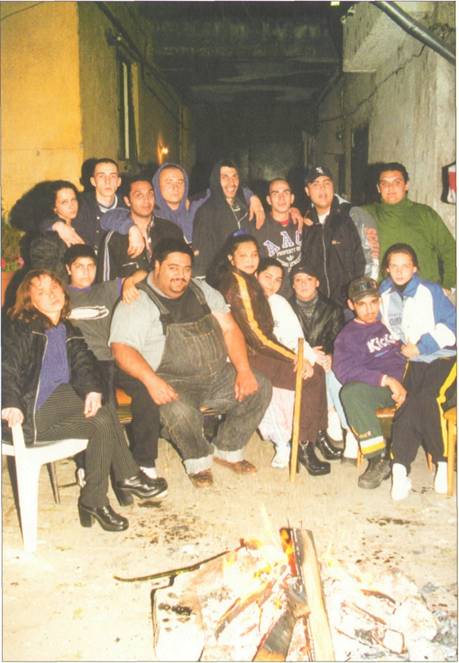
- Budapest, VIII. Karácsony Sándor utca 6. - Oláh József a pincéjében klubhelyiséget alakított ki. A környék fiataljai ezentúl nem csellengtek az utcán.
- Budapeshta, VIII. krujo le Karachony San-doreski vulyica 6-to kher - O Oláh József klubosko than kerdas ande le khereski pevnyica, kaj le terne sa kothe phirnas.na horajconisarnaspe (phirkernas pe'l vulyivi.
- Youth clubhouse in a cellar on Karácsony street established by Mr. József Oláh in order to keep young people off the streets in the 8th district of Pest.
- Un club de jeunesse établi dans un sous-sol de la rue Karácsony par M. József Oláh afin de les protéger des dangers de la rue, situé dans le 8éme arrond. de Pest.
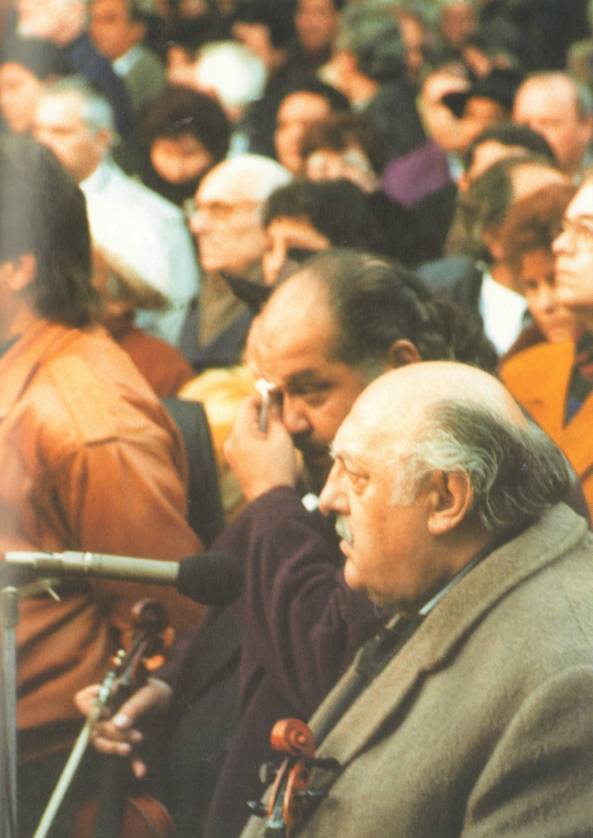
- Temetés... egy barát elvesztése.
- Praxosaripe... ekhe lashe amalesko xasaripe.
- Funeral...losing an old friend.
- Enterrement... la perte d'un bon ami.
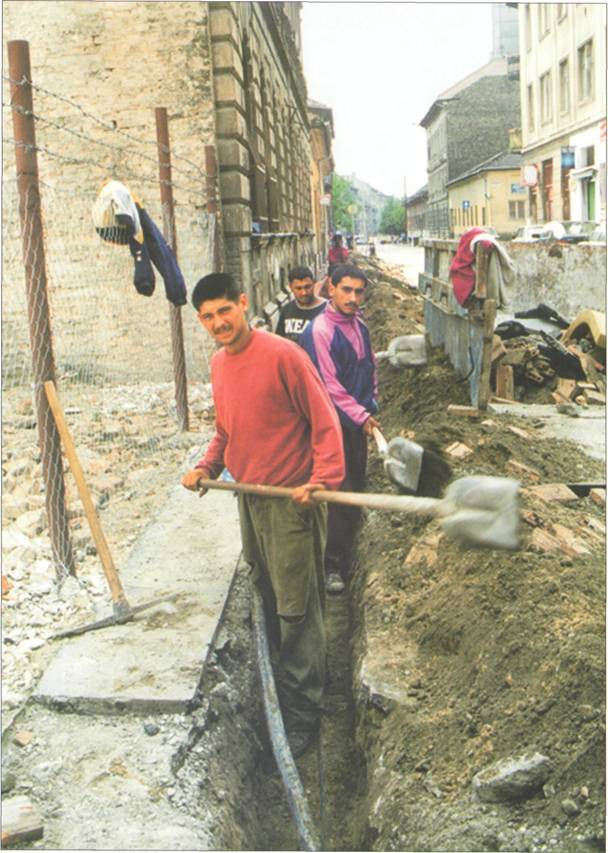
- Budapest, VIII. kerület, Kőris utca. — Kábelfektetők.
- Budapeshta, VIII. krujo pej Kőris vulyica - Sirmake pashlyara.
- The laying of cables on Kőris street in the 8th district of Pest.
- Pose de câbles dans la rue Kőris du 8ème arrond. de Pest.
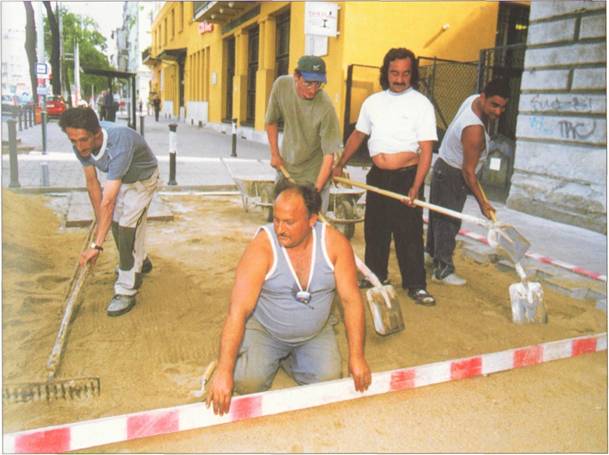
- Budapest, VII. kerület, Dózsa György út. — Útburkolók
- Budapeshta, VII. krujo Dozha Dyördy vulyica - dromsharavara.
- Paving the Street on Dózsa György road in the 7th district of Pest.
- Les paveurs de l'avenue Dózsa György dans le 7éme arrond. de Pest.
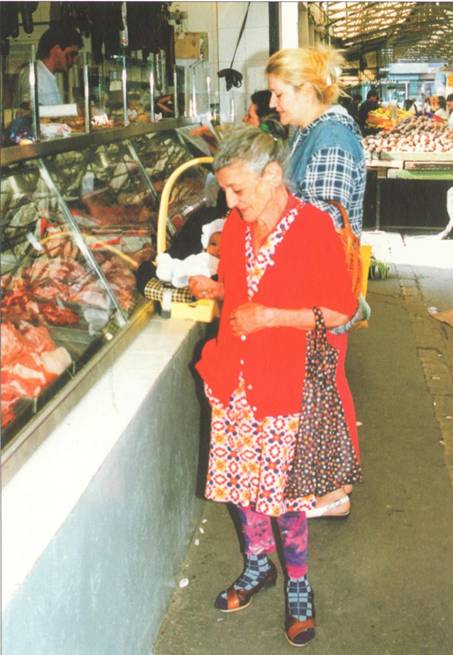
- Budapest, VIII. kerület, Teleki tér. — Filléres gondok.
- Budapeshta, VIII. krujo Teleki placco -Shovarenge gindura.
- Meager concerns on Teleki square in the 8th district in Pest.
- Futiles soucis sur la place Teleki du 8éme arrond. de Pest.
Nyári Gyula - Úton
Gyerekvilág
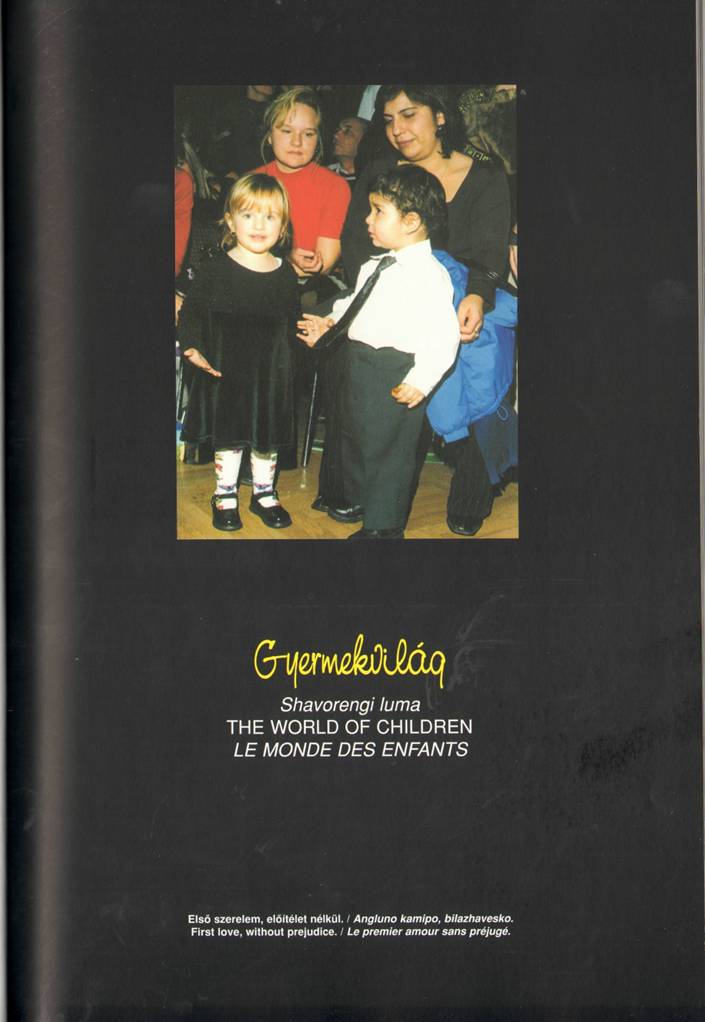
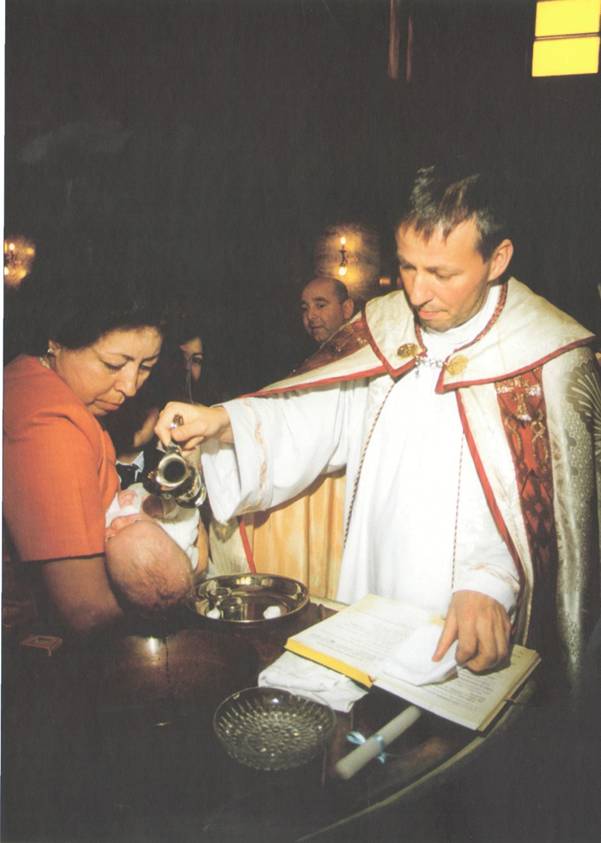
- Budapest, IX. kerület, Ecseri úti Szent Kereszt Templom. — Keresztelő.
- Budapeshta, IX. krujo le Svuntone Trushuleski khangeri po Echeri drom
- Baptism at the Holy Cross Church on Ecseri Road in the 9th district.
- Un baptême à l'église de la Sainte Croix sur l'avenue Ecseri dans le 9éme arrond.
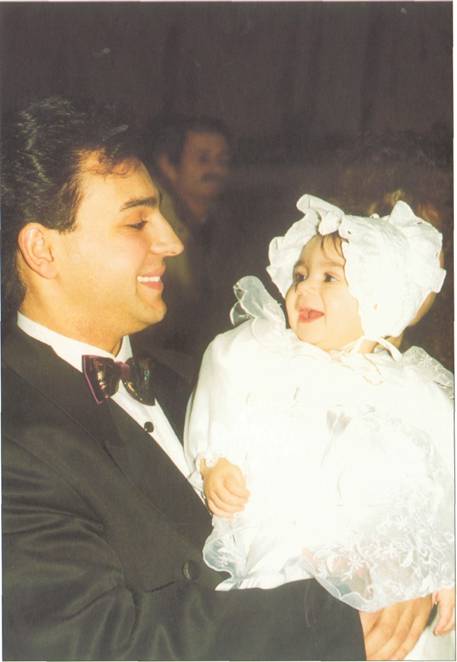
- Mága Zoltán hegedűművész Jennifer nevű lányának a keresztelője, 1996 decemberében, a Bazilikában.
- O Mága Zoltán lavutako baro zhanari pe peska shako, la Jeniferako bolajimo ande o 1996.bersh ando decemberi, ande e Bazilika.
- The christening of Mr. Zoltán Mága's daughter Jennifer in the Basilica. He is a Violinist. (1996)
- Le baptême de la fille de M. Mága, violoniste, qui a eu lieu dans la Basilique. (1996)
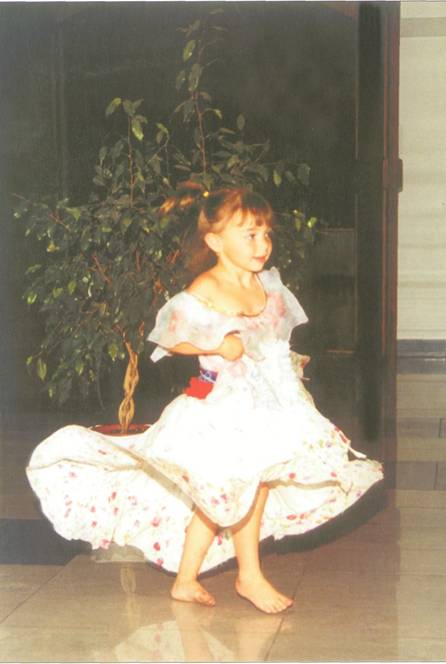
- Kovács Rebeka 3 éves. — Korán megmutatkozó vérmérséklet.
- E Kovács Rebeka 3-e bershengi - sigo sikadyilo ratesko tatyipe
- Miss Rebeka Kovács, 3 years old ... early signs of temperament.
- Mlle Rebeka Kovács, âgée de 3 ans . . . donnant signe d'un tempérament prématuré.
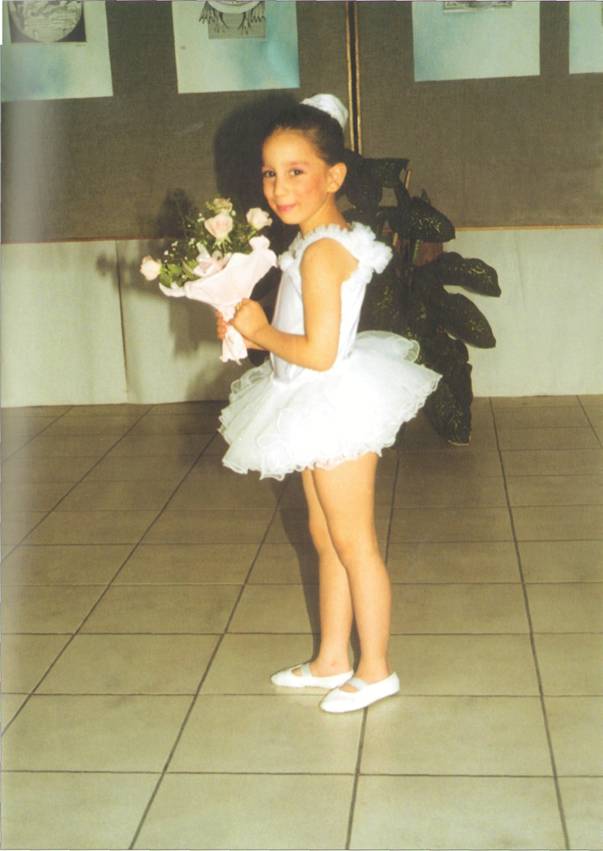
- Balettvizsga a Tháliában. — Bura Jennifer 5 évesen.
- Balatosko egzameno ande e Thalia - Bura Jennifer 5 bersheni
- Jennifer Bura's balett recital at the Thália Theatre.
- Répétition de ballet de Jennifer Bura au théâtre Thália.
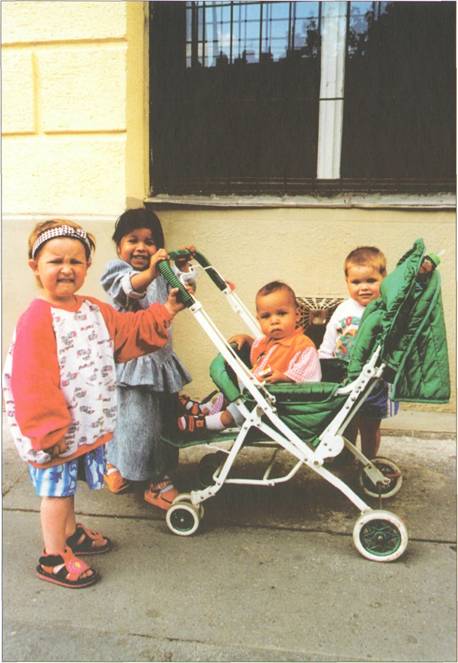
- Korai anyai ösztön. — Budapest, VIII. kerület, Baross utca.
- Sigutne vramke avile dake losha - Budapeshta, VIII. krujo.
- Baross vulyical Early motherly instinct on Baross street in the 8th district of Pest.
- L'instinct prématuré de jeune mére sur la rue Baross du 8éme arrond. de Pest.
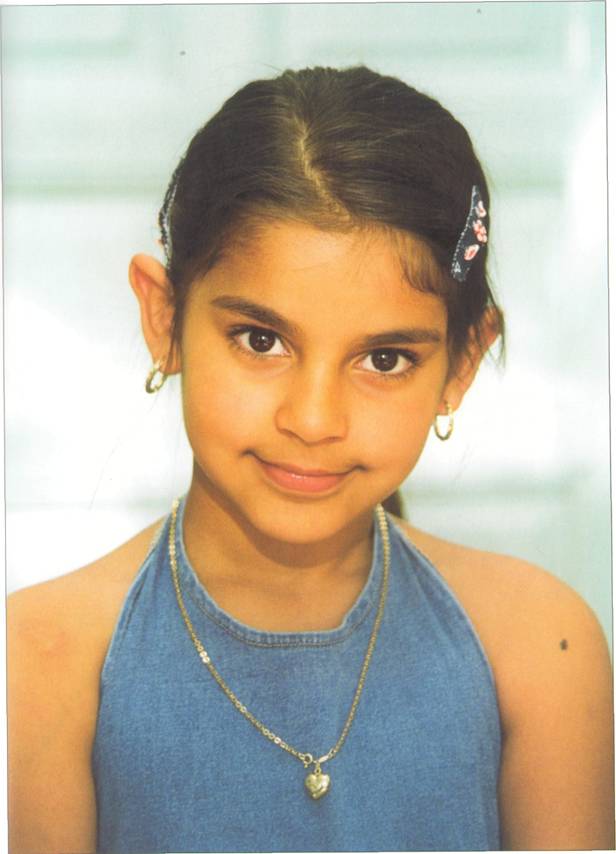
- A 6 éves Raffael Leila. (Choli Daróczi József unokája.)
- E Rafael Leila 6-e bershengi (le Choli Daróczi Józsefoski nyepotica)
- Leila Raffael at age 6 - Mr. József Choli Daróczi's grandchild.
- Leila Raffael á l'âge de 6 ans - la petite-fille de M. József Choli Daróczi.
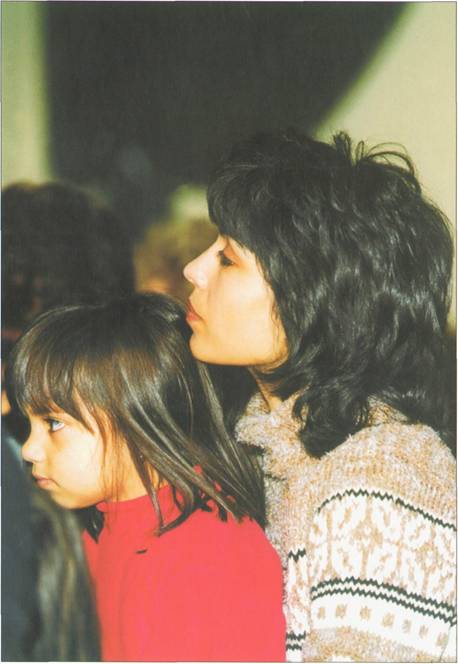
- Anya és lánya az OCIMK 2001. évi karácsonyi ünnepségén.
- E dej thaj laki shej /2001 OCIMK bersh krechune
- Mother and daughter at the OCIMK Christmas Celebration.
- Mère et fille célébrant la fête de Noël au sein de l'organisation OCIMK.
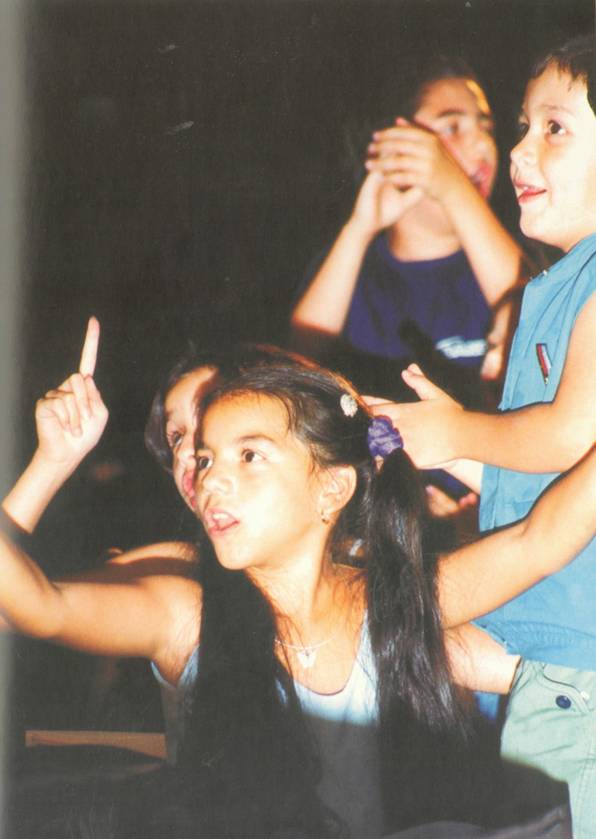
- A 11-ik Cigánykarnevál a Budai Parkszínpadon.
- O deshujekto romano karnevalo andej Buda pe le parkoske svunci phalya
- Eleventh Gipsy Carnival held at the Budai Parkstage.
- Le 11éme Carnaval Tzigane sur la scène du 'Budai Park'.
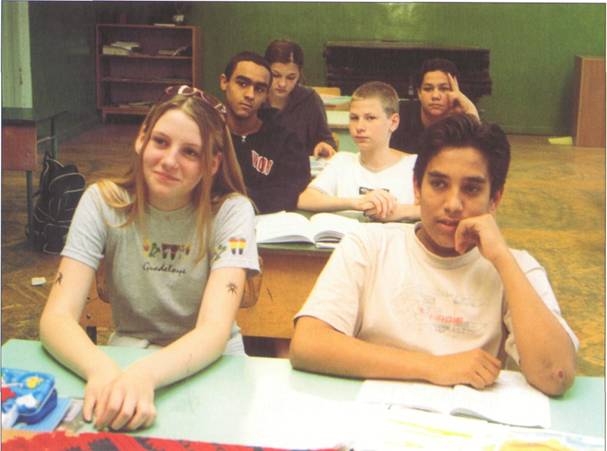
- Budapest, VII. kerület, Hernád utca 3. — Iskola, tanulóinak közel 80%-a roma gyerek.
- Budapeshta, VII. krujo, vulyica Hernad 3. Shkola, kaj sona 80%-a romane shavora phiren.
- School on Hernád street where the Gipsy students' ratio is 80% in the 7th district of Pest.
- Ecole sur la rue Hernád où les élèves tziganes sont en majorité dans le 7éme arrond. de Pest.
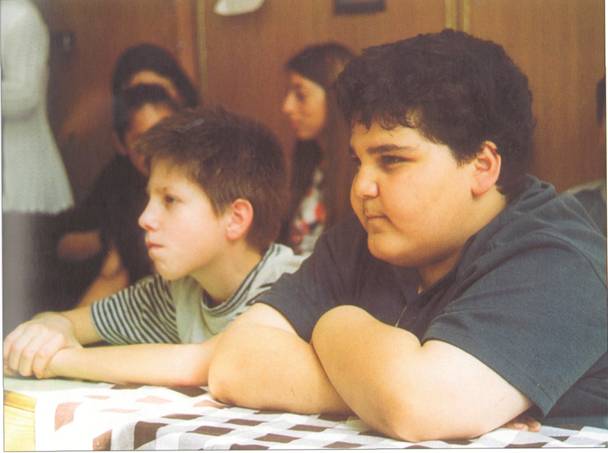
- Budapest, VII. kerület Hernád utca 3.— Az iskola.
- Budapeshta, VII. krujo, vulyiva Hernád 3. Shkola
- I School on Hernád street in the 7th district of Pest.
- Ecole de la rue Hernád dans le 7éme arrond. de Pest.
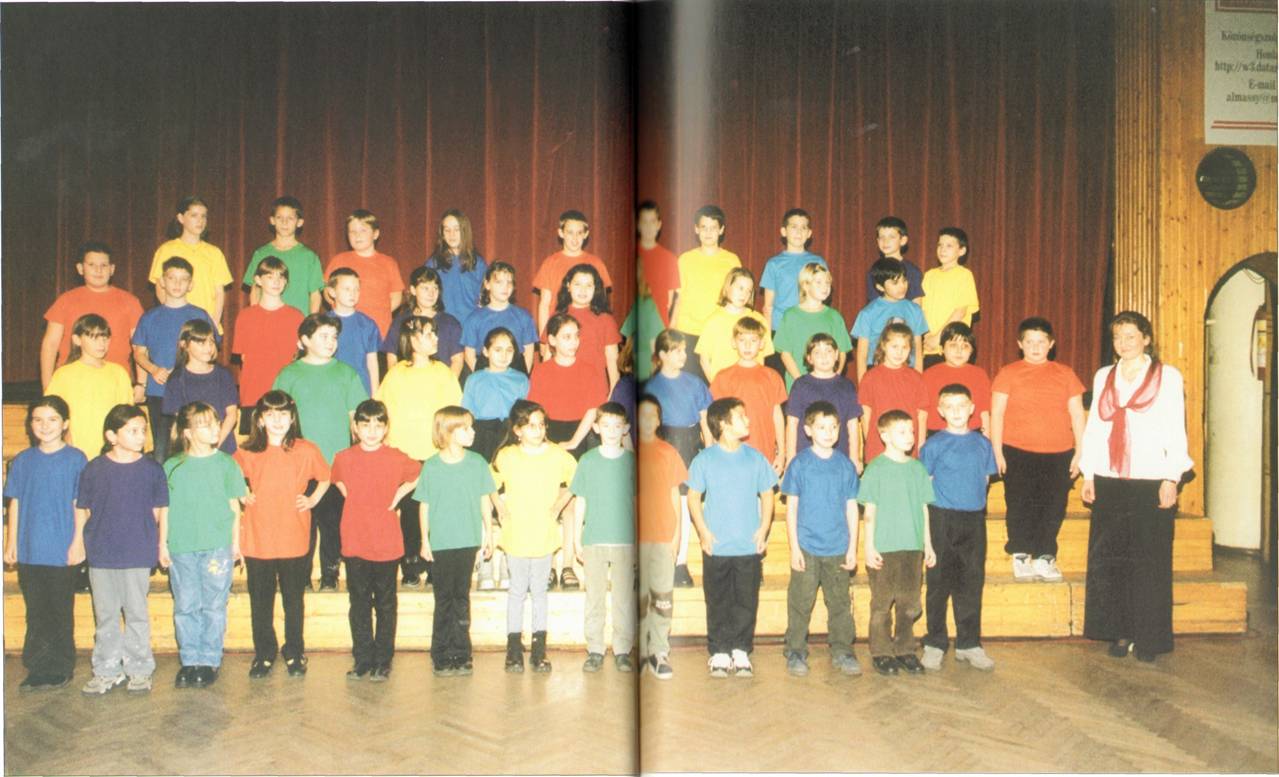
- Budapest, VII. kerület, Rottenbiller utca 41-45. — Előtér Általános és Művészeti Iskola énekkara vetélkedőn az Almássy téri Kulturális Központban. Az énekkar vezetője Tamási Kinga.
- Budapeshta, VII. krujo, Rottenbiller vulyica 41-45 Angle placco Telelutnyi thaj Zhanarimaski Shkolake gilyabimaski kuj pe ekh luptisaripe ande le Almássy placciosko Kulturalno Centro. La gilyaka kujako sheruno, e Tamási Kinga.
- Chorus competition of the 'Előtér' Elementary Artistic School at the Cultural Center on Almássy square with chorus director Ms. Kinga Tamási.
- Concours de choeurs de l'école artistique 'Előtér' au centre culturel de la place Almássy avec la directrice, Mme Kinga Tamási.
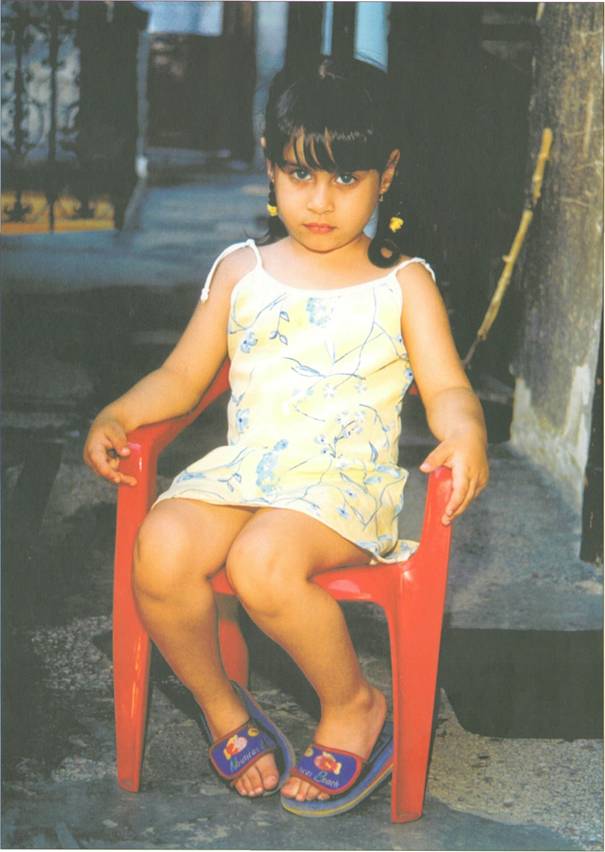
- Budapest, VIII. kerület, Dugonics utca. — Bérház második emelete.
- Budapeshta, VIII. krujo vulyica Dugonich -potyindo kher, po dujto etazho
- Second floor of an appartment building on Dugonics Street in the 8th district of Pest.
- Le deuxième étage d'un immeuble sur la rue Dugonics au 8éme arrond. de Pest.
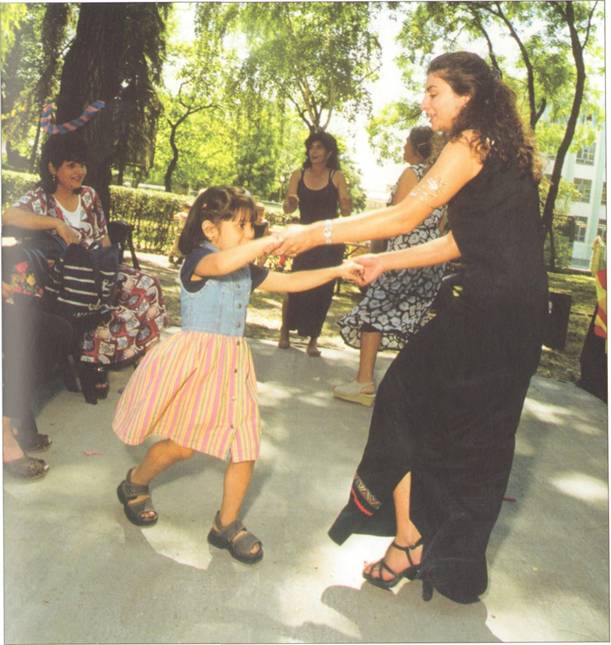
- Gyermeknap az OCIMK-ban. (Országos Cigány Információs és Művelődési Központ.)
- Shavorengo dyes ande o OCIMK
- I Children's Day at the OCIMK (National Gipsy Communications and Cultural Center).
- La Journée de l'Enfant au Centre National de Communication et de Culture Tzigane.
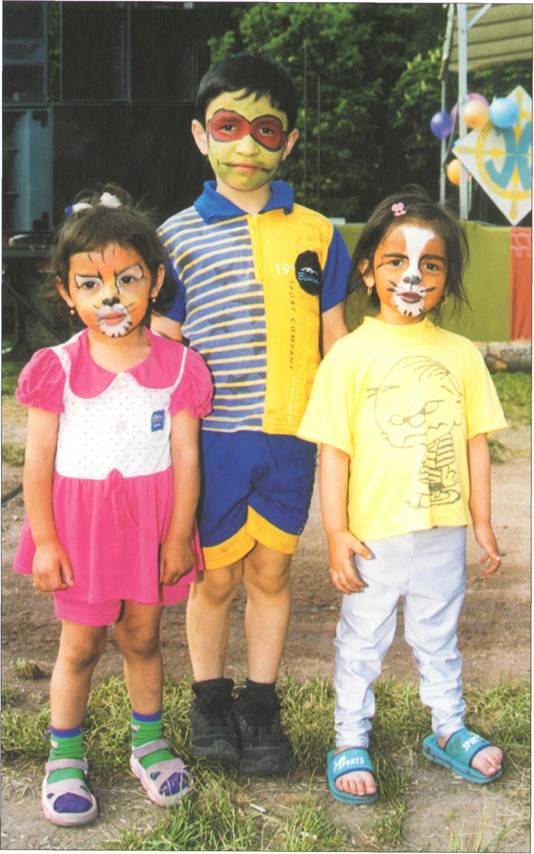
- Gyermeknap az Orczy-kertben.
- Shavorengo dyes ande e Orczy-bar.
- Children's Day at the Orczy Garden.
- La Journée de l'Enfant au jardin d'Orczy.
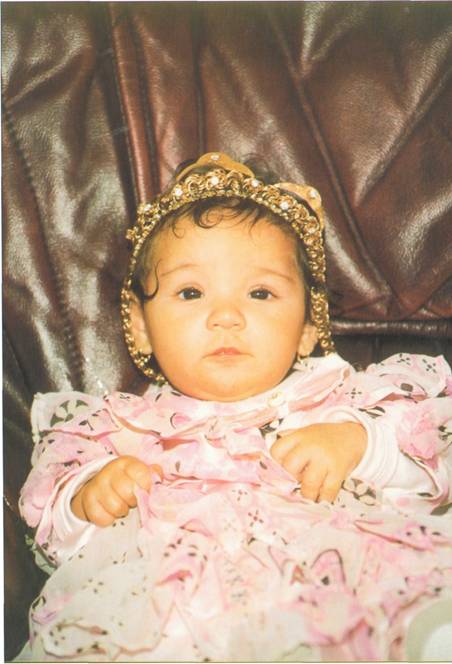
- A hathónapos Balázs Patricia Margit, keresztelője előtt.
- E Balazh Patricia Margit. 6 shonengi... Pala o bolajimol Miss Patrícia Margit Balázs, age 6 months... prior to her christening.
- Mlle Patrícia Margit Balázs, âgée de 6 mois... avant son baptême.
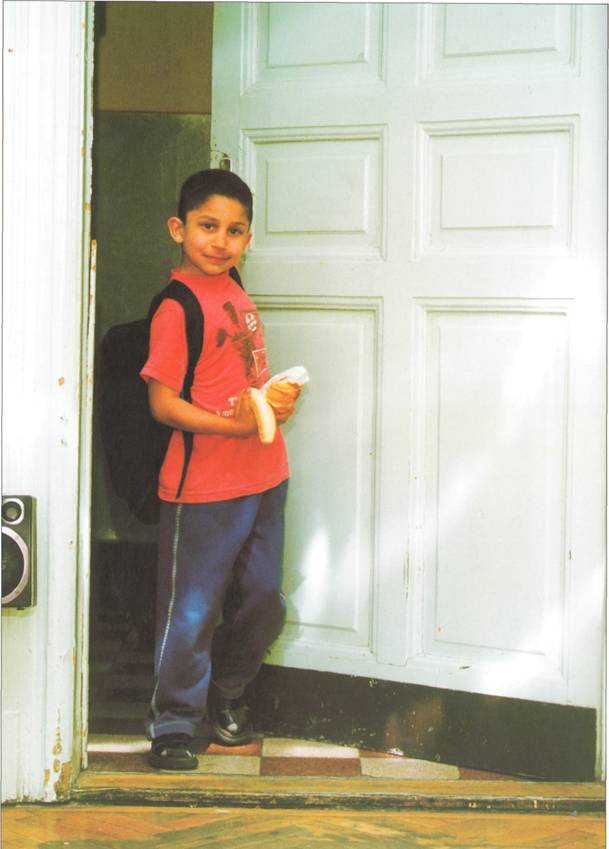
- Budapest, VII. kerület, Hernád utcai Általános Iskola. — A későn jövő.
- Budapeshta, VII. krujo, kon palal avel ande-j vulyica Hernád Telunyi Shkola.
- The late arriver at the Elementary School on Hernád Street in the 7th district of Pest.
- L'enfant arrivant en retard à l'école primaire de la rue Hernád du 7éme arrond. de Pest.
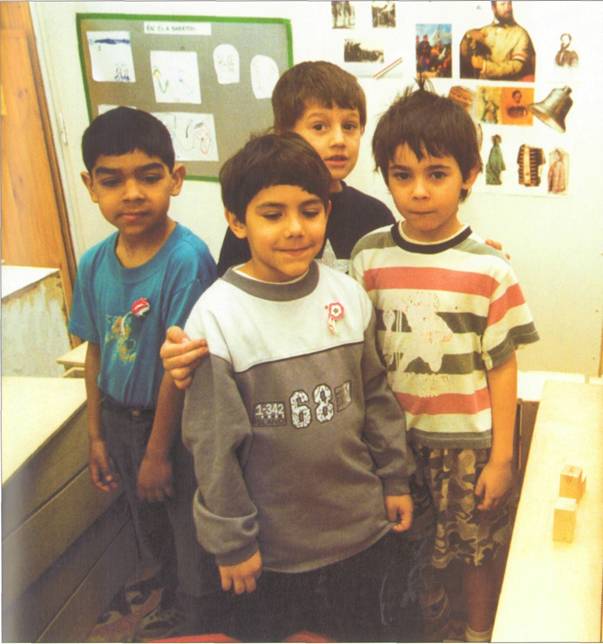
- Budapest, VII. kerület, Murányi utcai Óvoda. — Kiváló pedagógusok foglalkoznak itt fele-fele arányban roma és magyar gyerekekkel.
- Budapeshta, VII. krujo Grizharija ande e vulyica Murányi kaj 50-50% si le romane thaj le gazhikani shavora. Le majlas-hi sittyara sittyarenle.
- Integrated kindergarten with half Gipsy and half Hungarian children taught by excellent teachers on Murányi street in the 7th district of Pest.
- Ecole maternelle intégrée, enfants tziganes et hongrois enseignés par d'excellents instituteurs dans la rue Murányi du 7éme arrond. de Pest.
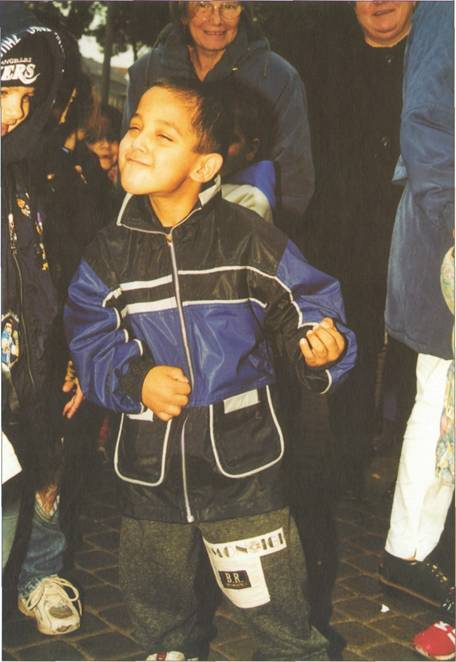
- Budapest, VIII. kerület, az átépített Kálvária tér ünnepi átadása. „Ha a zene megszólal, a vér megmozdul."
- Budapeshta, VIII. krujo la Kalvarijako placco kana pherdal kerdeles, thaj pherdal dine les sar oprenyevardo: „Kana a muzhika bashadyol,o rat mishkilpes.
- 'The blood stirs at the sound of music'... at the opening of the newly built Kálvária square in the 8th district of Pest.
- 'Le son de la musique fait bouillir le sang'... à l'ouverture de la place Kálvária récemment reconstruite dans le 8éme arrond. de Pest.
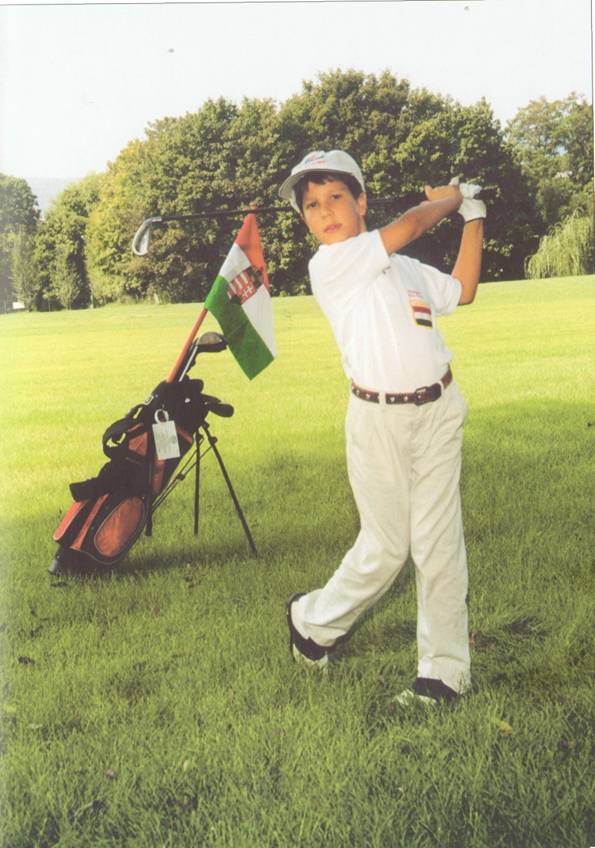
- Tata - golfpálya. - A tízéves Kővári Dániel. Sorra győzi le a 21 éves ifjúsági válogatottakat.
- Golfoski than ande e Tata. O Kővári Dániel 10-e bershengo, kon mashkar le 21-e bershebge ternengo ulavipee po rindo sa marelle.
- Dániel Kővári at age 10 successfully beats his 21-year old opponents on the golf course in Tata.
- Le jeune Dániel Kővári à l'âge de 10 ans a réussi à battre ses adversaires âgés de 21 ans sur le terrain de golf àTata.
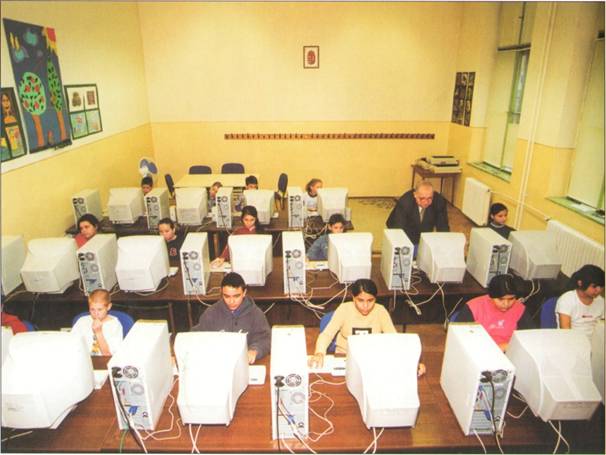
- Budapest, VIII. kerület, Erdélyi utcai Általános Iskola. - Számítástechnikai óra.
- Budapeshta, VIII. krujo vulyica Erdélyi Telunyi Shkola - celo-technikengo chaso.
- Computer Science lesson at the Elementary School on Erdélyi street in the 8th district of Pest.
- Classe d'informatique à l'école primaire de la rue Erdélyi dans le 8émearrond. de Pest.
Nyári Gyula - Úton
Csodálatos női világ
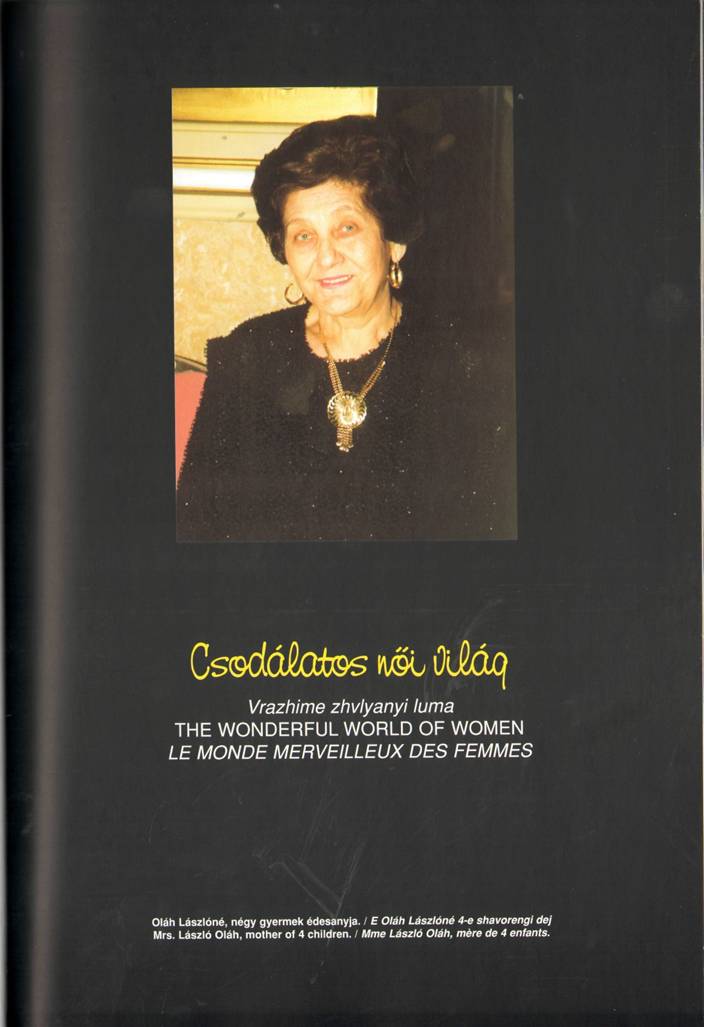
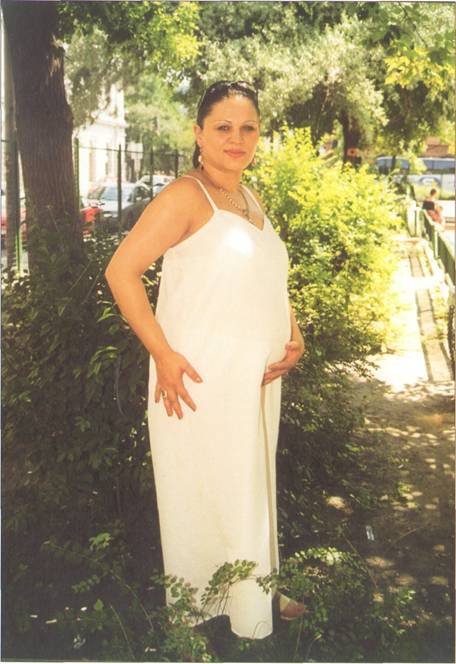
- Kovács Erzsébet, áldott állapotban.
- E Kovács Erzsébet ande Svuntome vrama
- Mrs. Erzsébet Kovács, awaiting her baby.
- Mme Erzsébet Kovács, en état de grossesse.
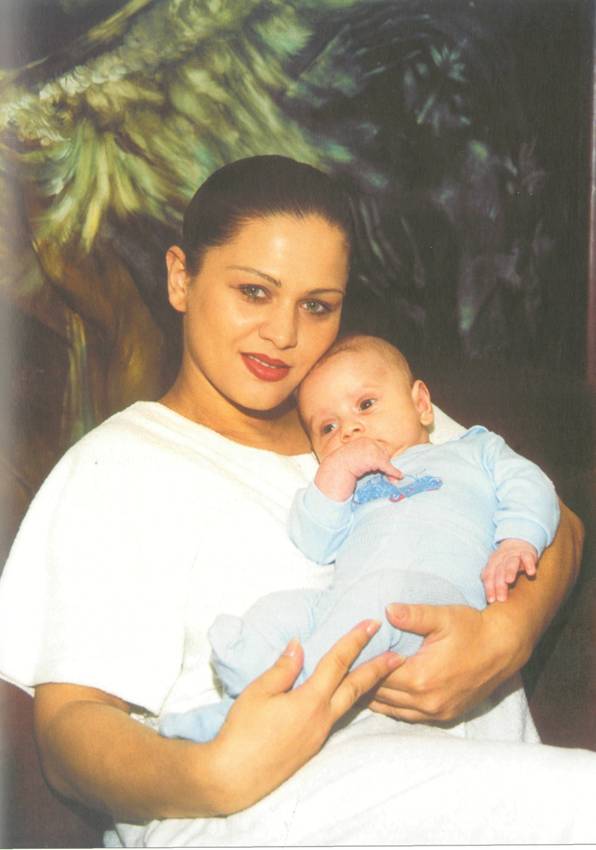
- Anyai örömök. (Kovács Erzsébet)
- Dake losha/Kovács Erzsébet
- Mrs. Erzsébet Kovács... motherly joys.
- Mme Erzsébet Kovács... la joie maternelle.
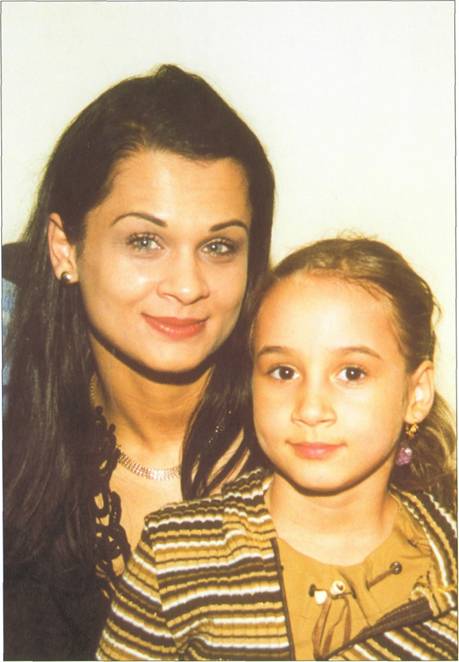
- Kovács Anikó és lánya, Gréta.
- E Kovács Anikó thaj laki shej, e Greta.
- Mrs. Anikó Kovács and daughter Gréta.
- Mme Anikó Kovács et sa fille Gréta.
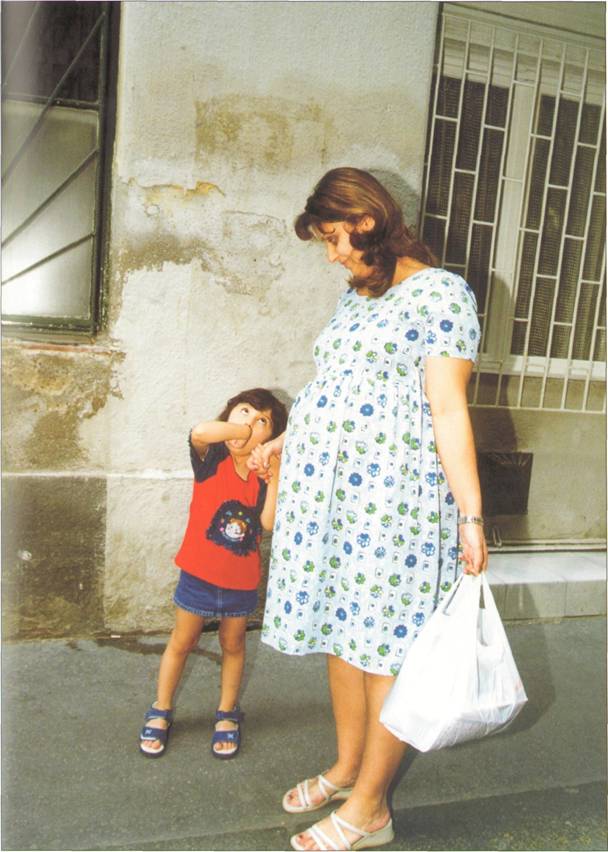
- "Várom a kistestvérem."
- "Azhutyarav mure cine phrales."
- "I'm looking forward to greeting my sibling".
- "J'attends l'arrivée de mon petit frère ou de ma petite soeur".
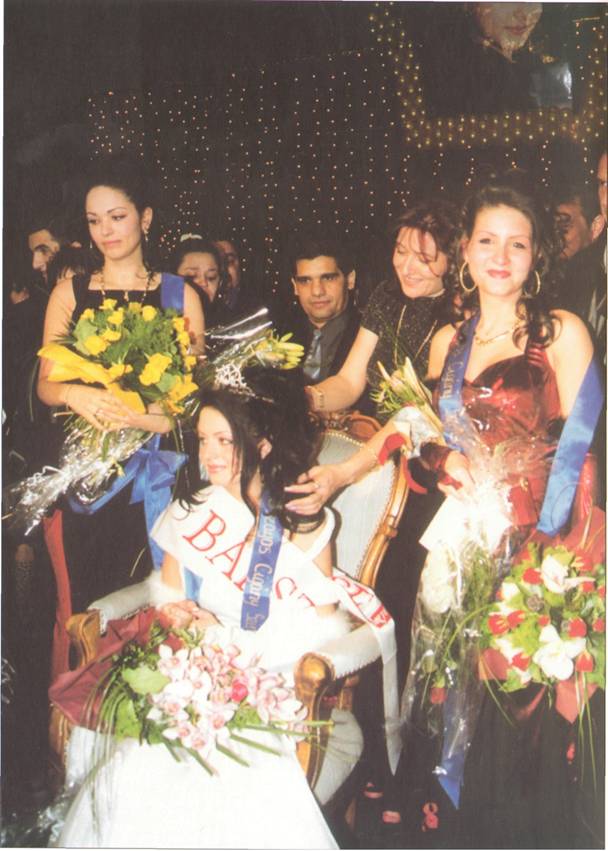
- Bellovicz Bernadett; az Országos Cigány Szépségkirálynő.
- Bellovicz Bernadett; le Themeske Romengi Shukar-krajaskinya.
- Ms. Bernadett Bellovicz, National Gipsy Beauty Queen.
- Mlle Bernadett Bellovicz, Miss Hongrie Tzigane.
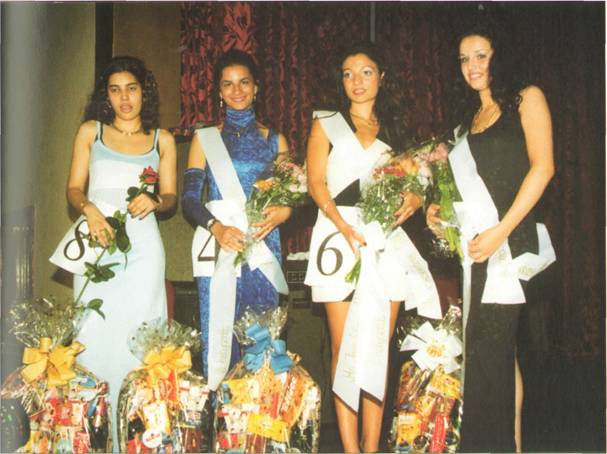
- A Józsefvárosi Roma Önkormányzat rendezésében zajlott Anna-bál győztesei.
- La Annake baldoske majlashe József forosko Autonomijako Keripe.
- Beauty Contest winners at the 'Anna' Ball in the Józsefváros district organized by the Gipsy City Council.
- Les lauréates du concours de beauté au bal 'Anna'dans le quartier de 'Józsefváros' organisé par le Conseil Municipal Tzigane.
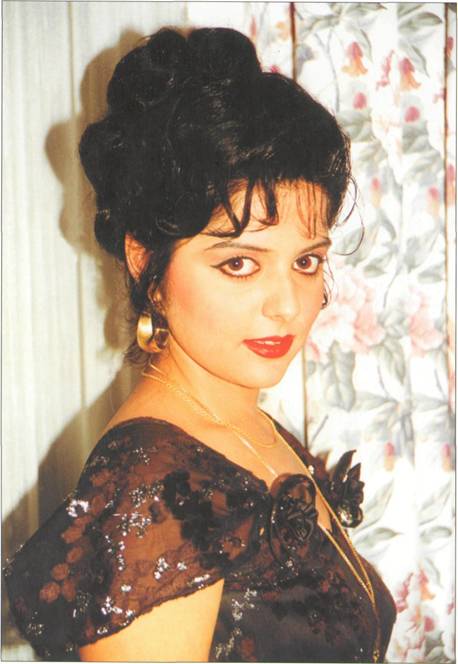
- Balázs Lilian, zongorista.
- E Balázs Lilian (pianisto)
- Ms. Lilian Balázs, pianist.
- Mlle Lilian Balázs, pianiste.
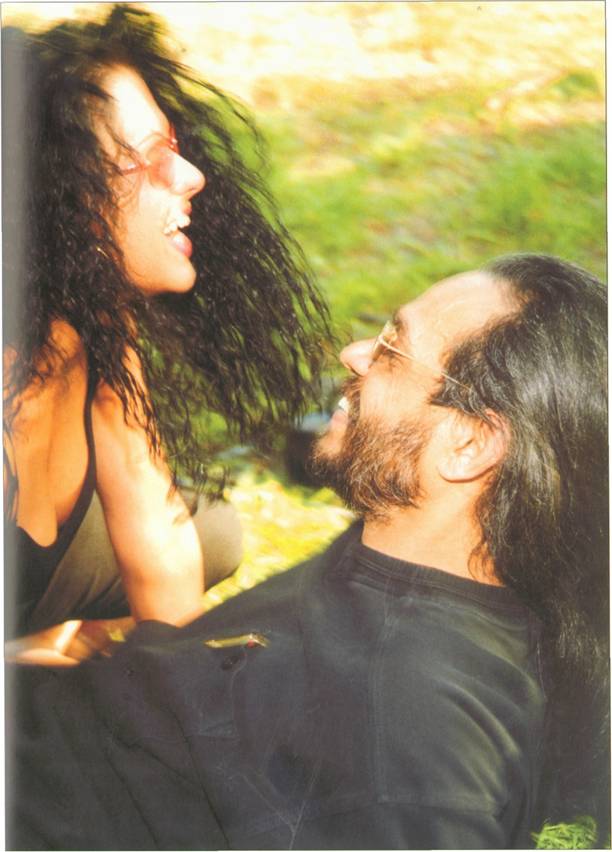
- A Boldogság pillanata.
- La baxtyako minuto
- The great moment of happiness
- Le grand moment de joie
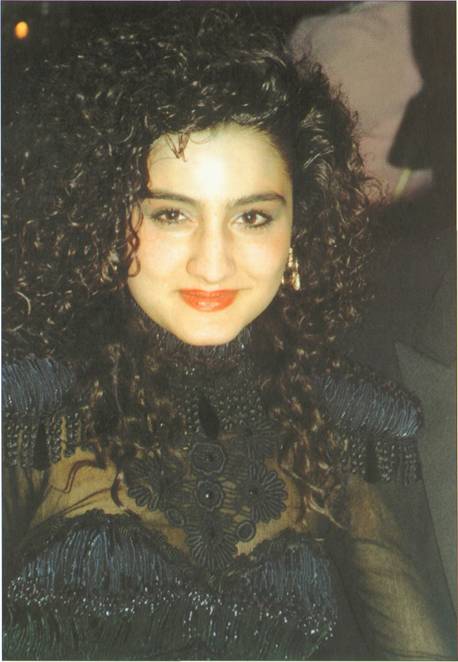
- Torma Mónika.
- E Torma Mónika
- Ms. Mónika Torma.
- Mlle Mónika Torma.
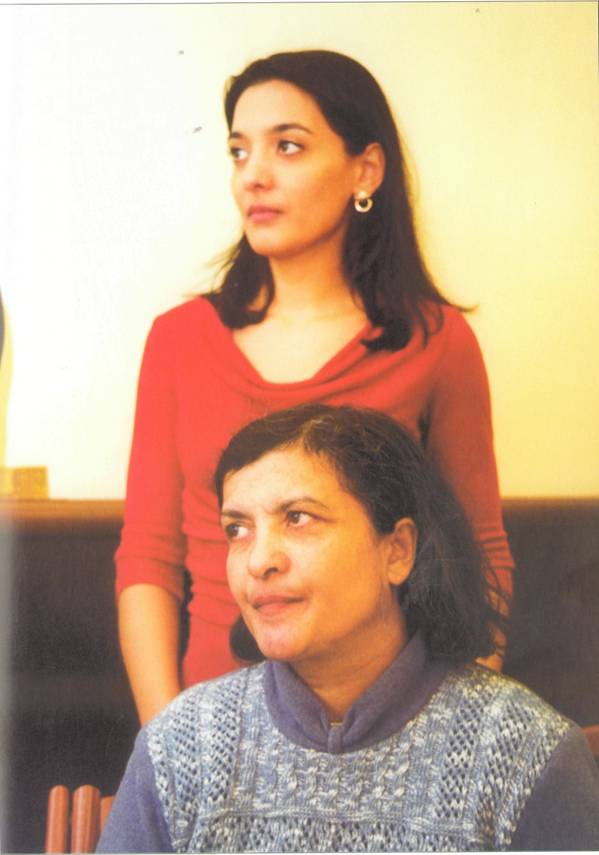
- Miczura Andrea joghallgató és édesanyja.
- E Miczura Andrea Jurisistoski sittyardyi thaj laki dej
- Ms. Andrea Miczura, law student and her mother.
- Mlle Andrea Miczura, étudiante en droit et sa mère.

- Nyári Rezsőné, édesanyám.
- E Nyári Rezhévkinya muri chachi dej
- Mrs. Rezső Nyári, my mother.
- Nyári Rezső Nyári, ma mère.
Nyári Gyula - Úton
Mesterség és hivatás
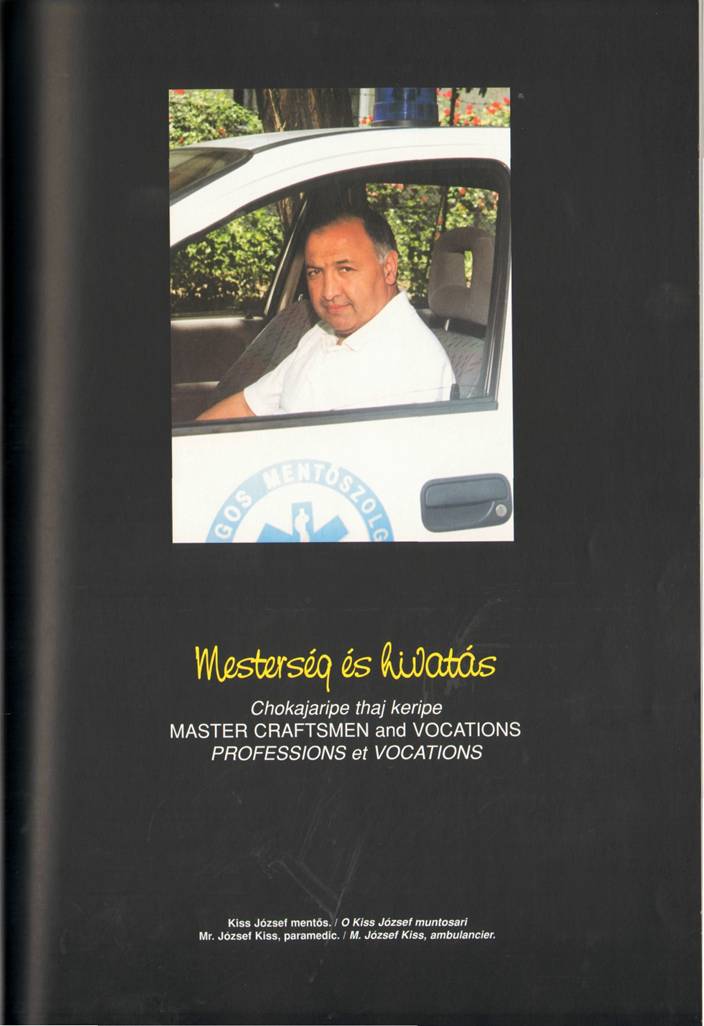
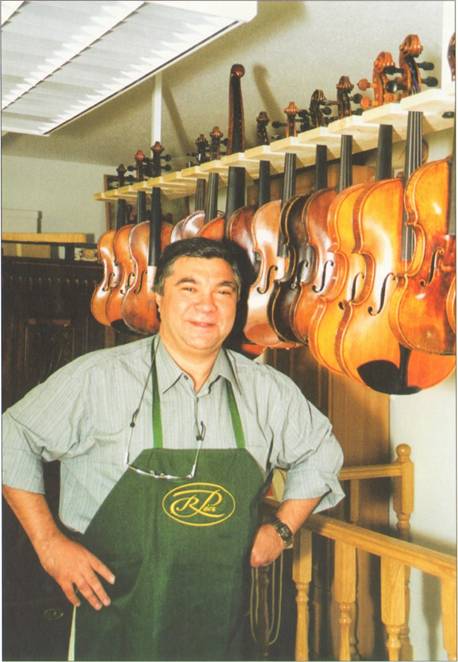
- Rácz Pál hegedűkészítő, aki egy nemzetközi kópiaversenyen első díjat nyert.
- O Rácz Pali lavutengo kerari
- Mr. Pál Rácz, violin maker, won first place in a violin-making competition.
- M. Pál Rácz, fabricant de violon qui a gagné la première place dans un tel concours.
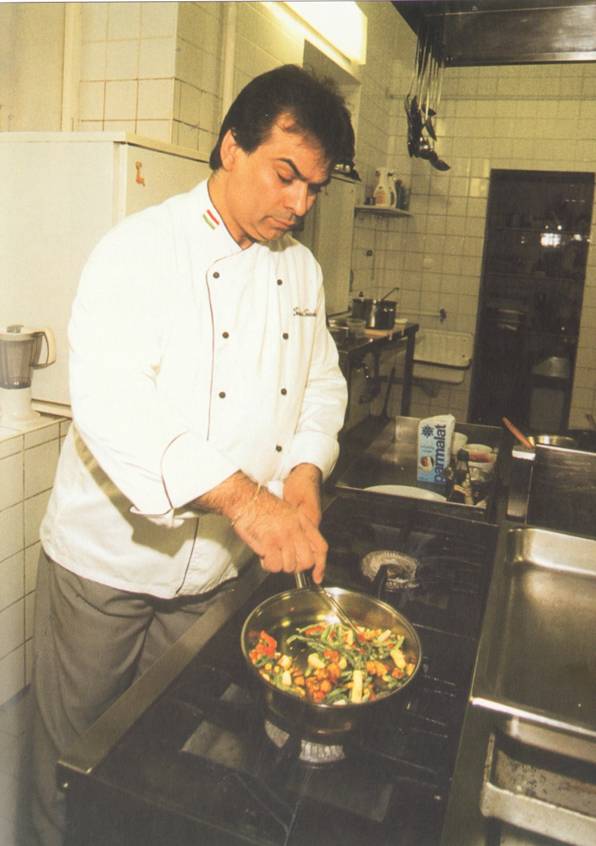
- Sárközi Sándor mesterszakács. Több nemzetközi versenyen kapott elismerést.
- O Sárközi Sándor majstruno kiravari. Majbut nacionalna sikajipe xutyeldas anda pesko baripoe.
- Mr. Sándor Sárközi, maşter chef, has won recognition in several international competitions.
- M. Sándor Sárközi, chef de cuisine, qui a été reconnu lors de plusieurs concours internationaux.
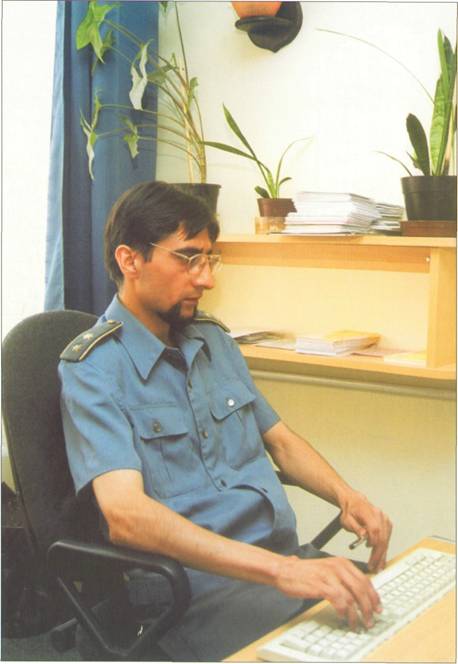
- Felföldi László BV főhadnagy (Nevelőtiszt a börtönben.)
- O Felföldi Laslo robijake postongo opruna prokurari.
- Lieutenant László Felföldi, reformatory officer in a prison.
- Lieutenant László Felföldi, éducateur de prisonniers.
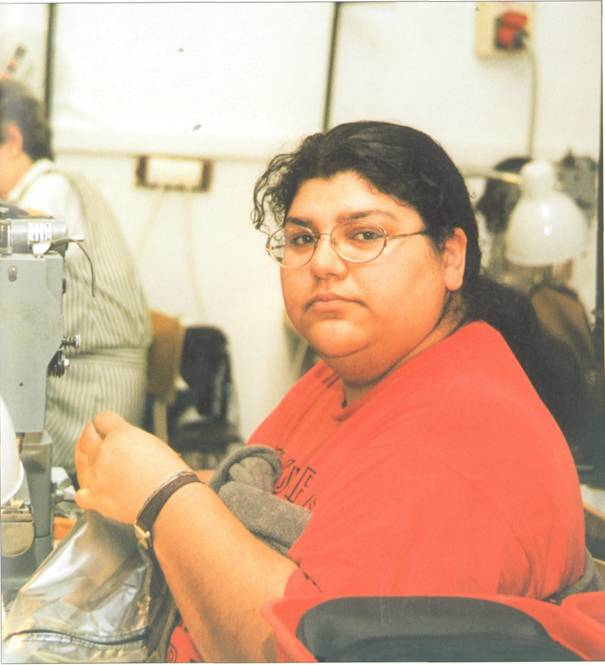
- Császár Julianna bőrdíszműves.
- Morchangi shukar-butyarica, e Chasar Julianna
- Ms. Julianna Császár, leather craftswoman
- Mme Julianna Császár, artiste en maroquinerie.
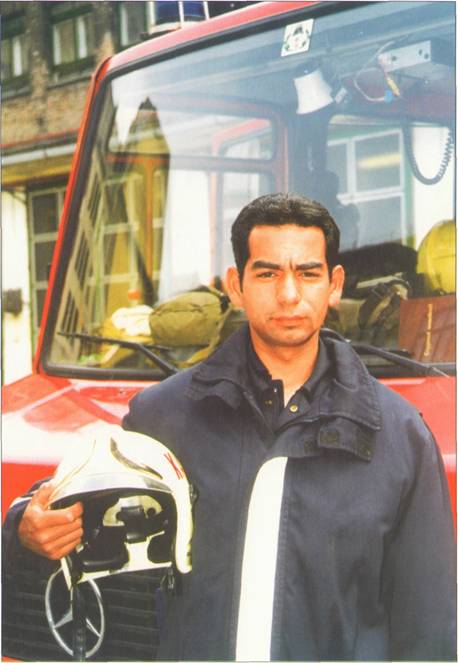
- Csámpai Attila tűzoltó.
- O Champai Attila jagmudarari
- Mr. Attila Csámpai, firefighter.
- M. Attila Csámpai, pompier.
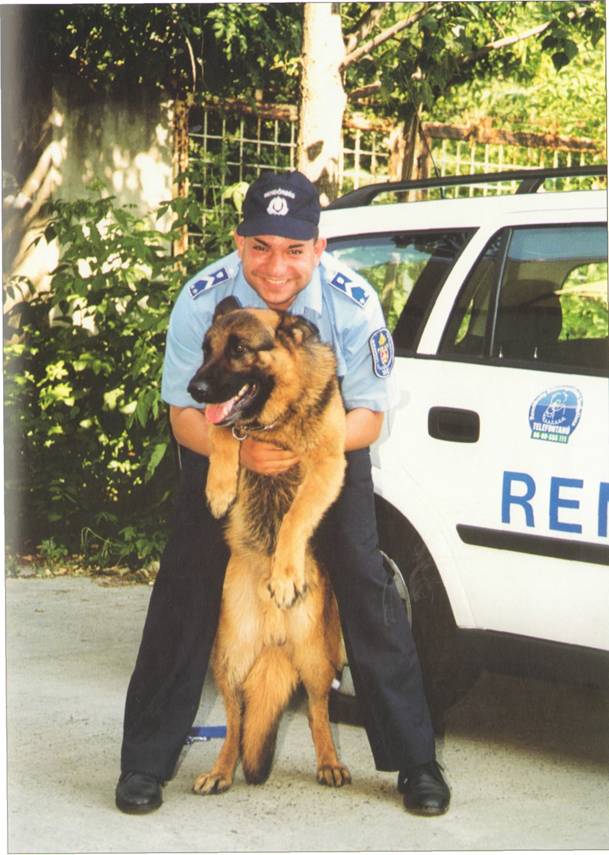
- Gargya László rendőrtörzsőrmester.
- O Dyardya Laslo, xanralengo opruno majsteri.
- Police Sargent László Gargya.
- M. László Gargya, sergent de police.
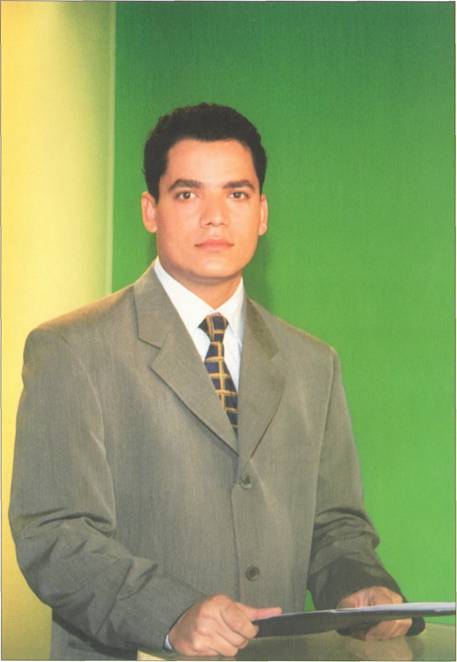
- Horváth Kálmán színész, tévébemondó, sőt: kiváló festő.
- O Horváth Kálmán andrephenari ande o tevevo, aktori thaj baro kipongo makhari silo.
- Mr. Kálmán Horváth, actor and television announcer as well as outstanding paínter.
- M. Kálmán Horváth, acteur et présentateur à la télévision ainsi que peintre émérite.
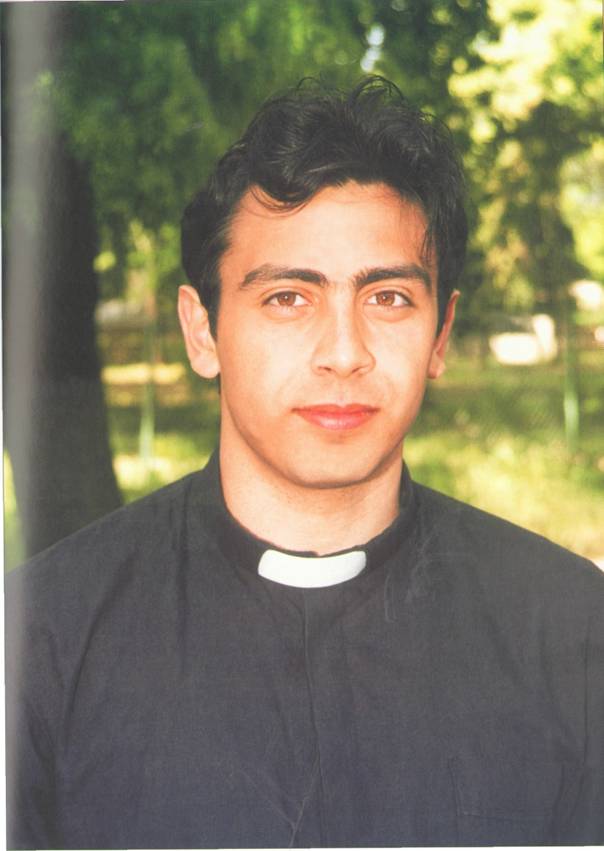
- Lakatos Péter görögkatolikus pap.
- Grek-katolikicko rashaj, O Lakatos Péter
- Mr. Péter Lakatos, Greek Catholic priest.
- M. Péter Lakatos, prètre de l'église grecque catholique.
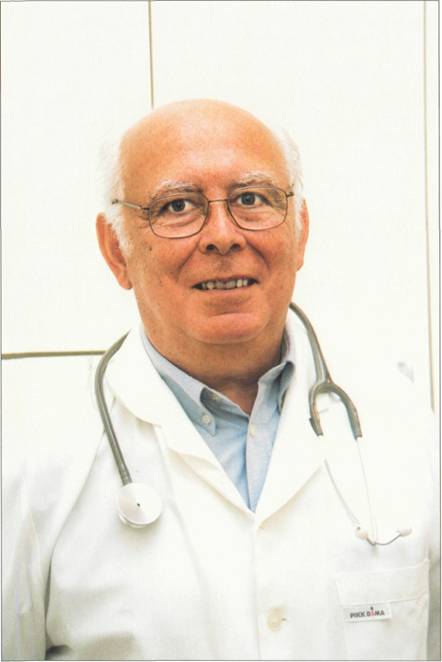
- Kóczé Antal körzeti orvos.
- O Kocze Antal krujalutno sastyari.
- Dr. Antal Kóczé, district medical doctor.
- Dr. Antal Kóczé, médecin de quartier.
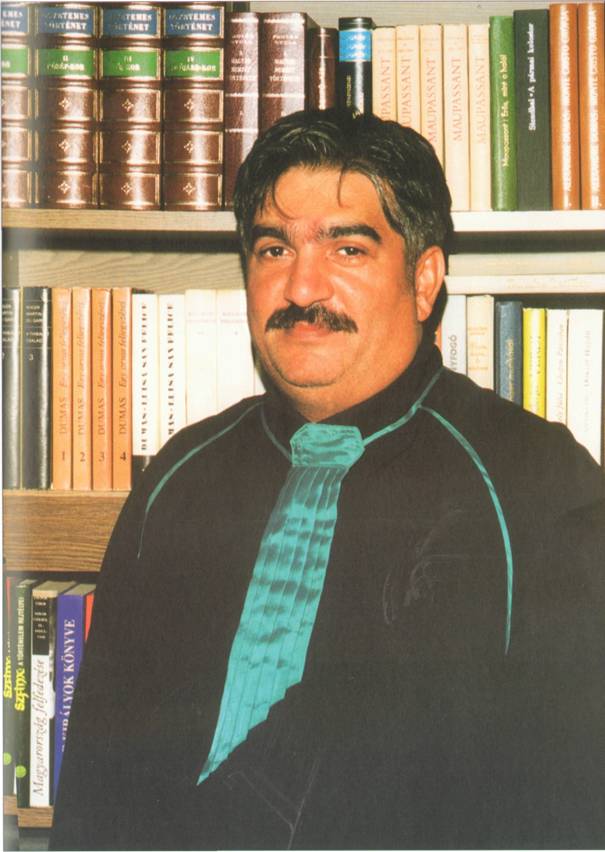
- Dr. Lázók Tibor ügyvéd.
- O Lazok Tibor drabari
- Dr. Tibor Lázók, attorney.
- Maître Dr. Tibor Lázók, avocat.
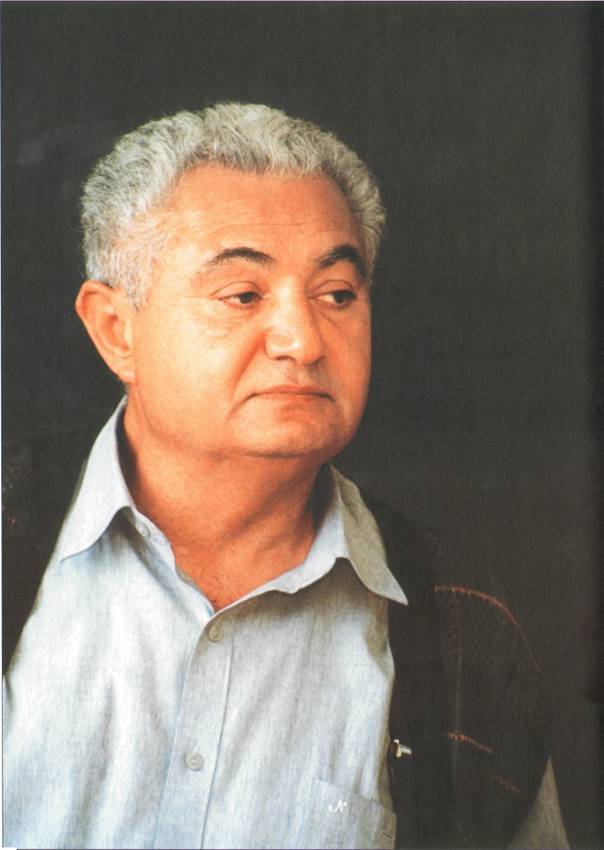
- Romanó Rácz Sándor egyetemi tanár.
- O Romano Rácz Sándor univerzitetosko sittyari.
- Mr. Sándor Romano Rácz, university professor.
- M. Sándor Romano Rácz, professeur d'université.
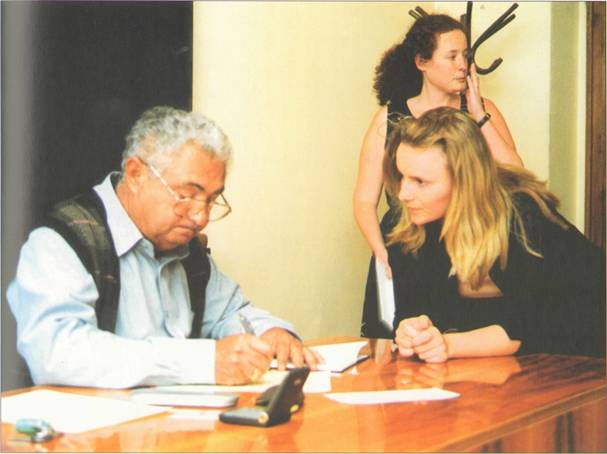
- Romanó Rácz Sándor leckekönyvet ír alá.
- O Romano Rácz Sándor le bershesko lil iskiril telal
- Mr. Sándor Romano Rácz signing the end-of-the-year certificates.
- M. Sándor Romano Rácz signe les certificats de fin d'année.
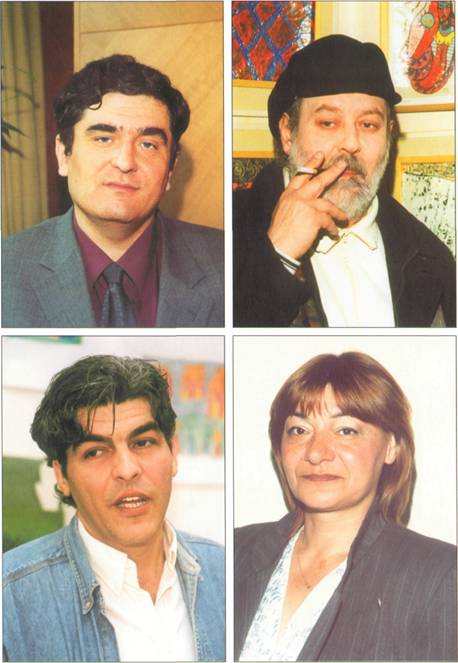
- Kállai Ernő kisebbségkutató. | O Kállai Ernő cinutnyimatongo rodari. | Mr. Ernő Kállai, researcher of ethnic minorities. | M. Ernő Kállai, chercheur des minorités ethniques.
- Fátyol Tivadar zeneszerző. | O Fatyol Tivadari muzikantno poeto | Mr. Tivadar Fátyol, musical composer. | M. Tivadar Fátyol, compositeur.
- Szolnoki Csanya Zsolt költő. | O Solnoki Chanya Zholt, poeto | Mr. Zsolt Szolnoki Csanya, poet. | M. Zsolt Szolnoki Csanya, poète.
- Varga Ilona rádióriporter. | E Varga Ilona riportantkinya ande rádiovo. | Ms. Ilona Varga, radio reporter. | Mme Ilona Varga, présentateur de radio.
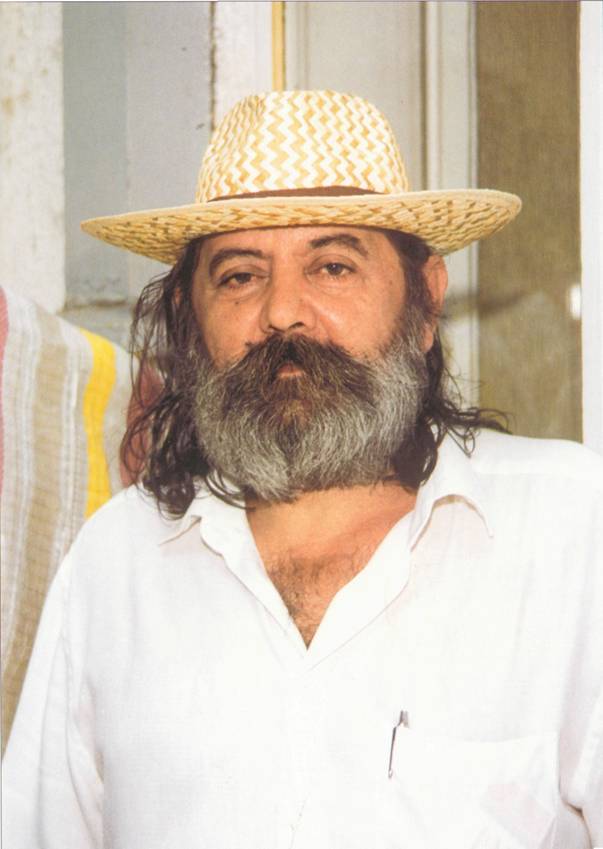
- Kovács József Hontalan, költő.
- O Kovach Józhef Bithemesko poeto.
- Mr. József Kovács Hontalan, poet.
- M. József Kovács Hontalan, poète.

- Raduly József, a Száztagú Cigányzenekar elnöke. | O Raduly József, le shelzhene lavutarengo prezidento. | Mr. József Raduly, president of the 100 Gipsy Musicians' Orchestra. | M. József Raduly, président de l'orchestre des 100 Musiciens Tziganes.
- Joka Daróczi József, a Roma magazin tévéműsor főszerkesztője. | O Joka Daróczi János, le romane magazinesko serutno, ande o tevevo. | Mr. József Joka Daróczi, chief editor of the 'Roma Magazin' television program. | M. József Joka Daróczi, rédacteur en chef du programme de télévision nommé'Roma Magazin'.
- Szénási Ferenc zenetanár. | O Szénási Ferenc gilyango sittyari. | Mr. Ferenc Szénási, music teacher. | M. Ferenc Szénasi, professeur de musique.
- Nagy Gusztáv költő, műfordító. | Amaro baro Gusti shibako boldinari. | Mr. Gusztáv Nagy, poet and translator of literary works. | M. Gusztáv Nagy, poète et traducteur d'oeuvres littéraires.
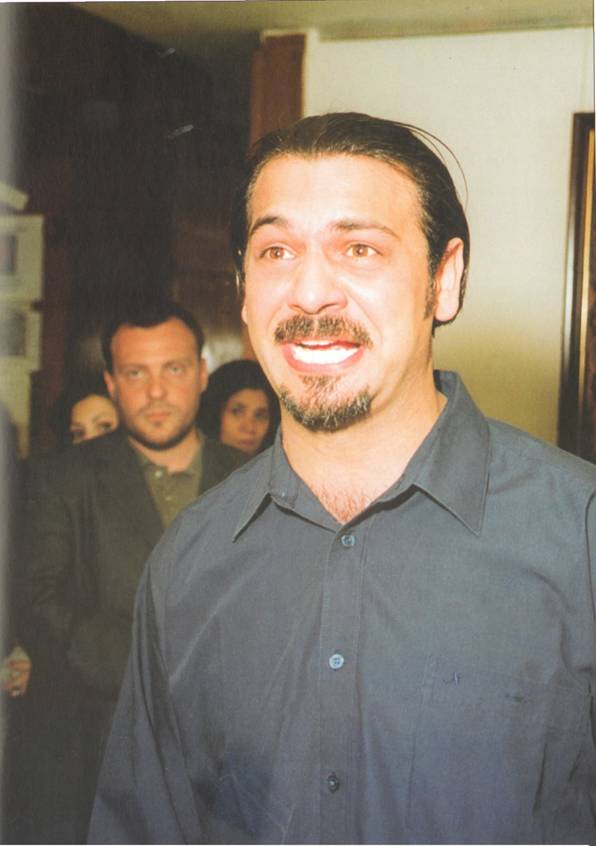
- Nyári Oszkár színész.
- O Nyári Oszkár aktori.
- Mr. Oszkár Nyári, actor.
- M. Oszkár Nyári, acteur.
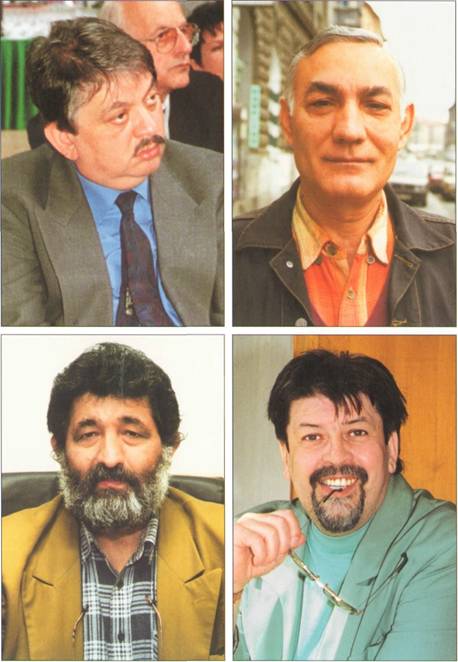
- Csemer Géza író, rendező. | O Chemer Géza iskiritori, le aktorono lasharari. | Mr. Géza Csemer, writer and director. | M. Géza Csemer, écrivain et directeur.
- † Szepesi József költő. | O Sepeshi Józhef poeto (mulas aba). | The late Mr. József Szepesi, poet. | Le décédé M. József Szepesi, poète.
- Bogdán Béla tanár. | O Bogdan Bela sittyari. | Mr. Béla Bogdán, teacher. | M. Béla Bogdán, professeur.
- Hollai Kálmán színész. | O Hollai Kálmán aktori. | Mr. Kálmán Hollai, actor. | M. Kálmán Hollai, acteur.
Nyári Gyula - Úton
Közélet és művészet
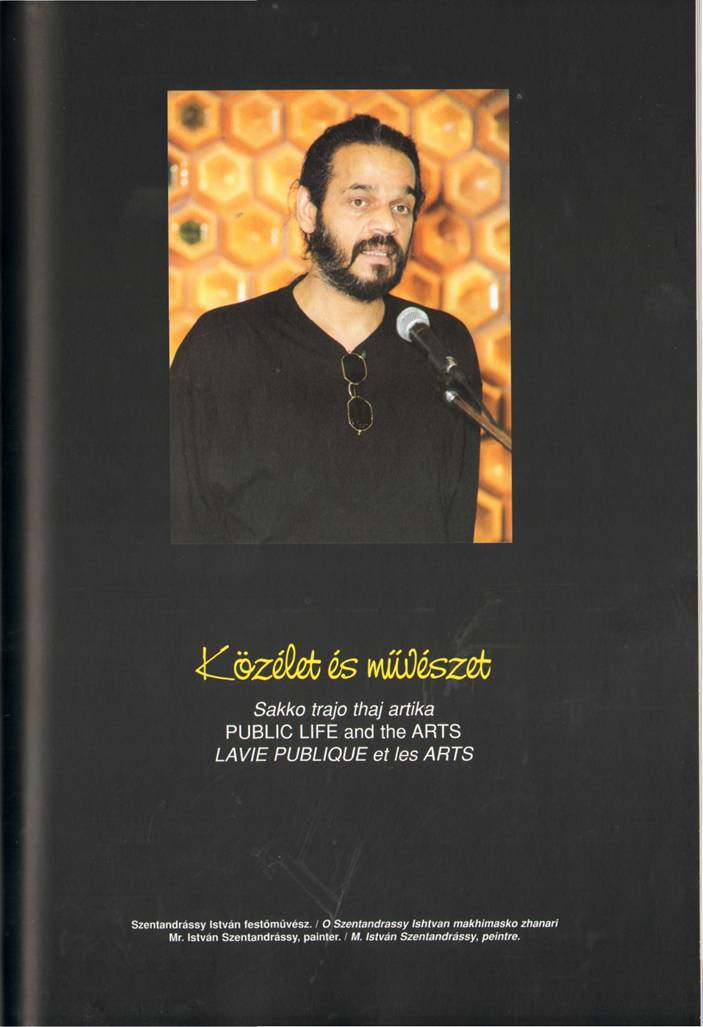
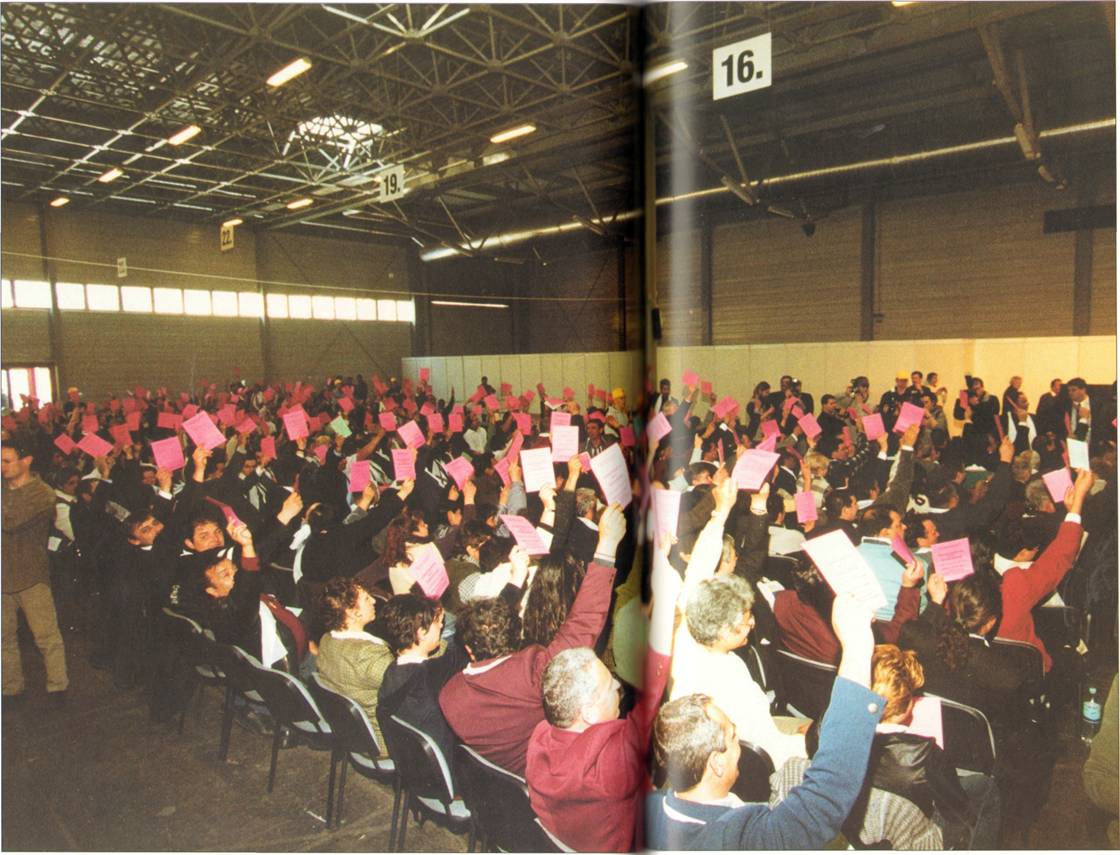
- Országos cigányvezetők választása.
- Themutne romengo ulavipe
- Elections - voting for National Gipsy leaders.
- Les élections - votant pour les dirigeants tziganes nationales.
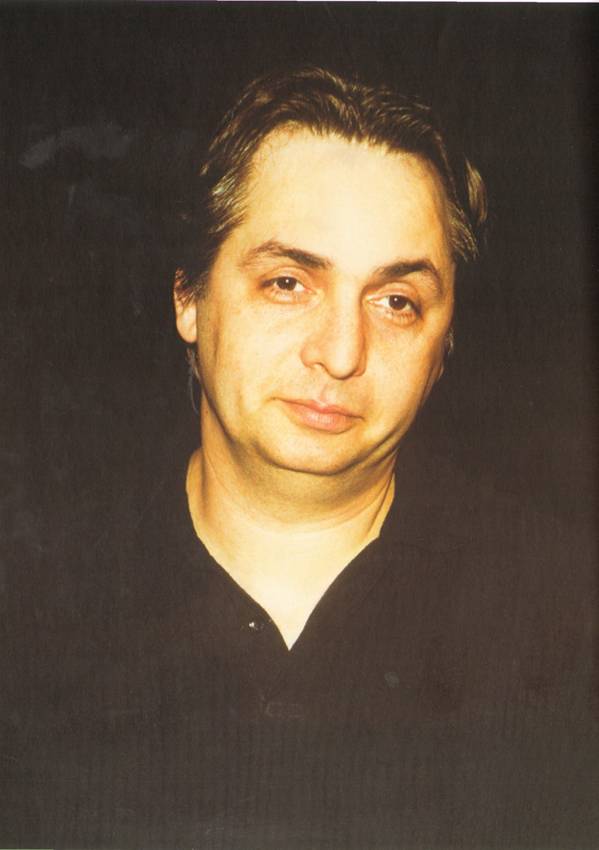
- Sárközi Gyula táncművész, koreográfus (Harangozó Gyula-díjas)
- O Sárközi Gyula klelyimasko zhamnari, koreografo (Harangozó Gyulasko vazdipari)
- Mr. Gyula Sárközi, artistic dancer and choreographer - winner of the 'Harangozó Gyula' prize.
- M. Gyula Sárközi 1, danseur artistique et chorégraphe - lauréat du Prix 'Harangozó Gyula'.
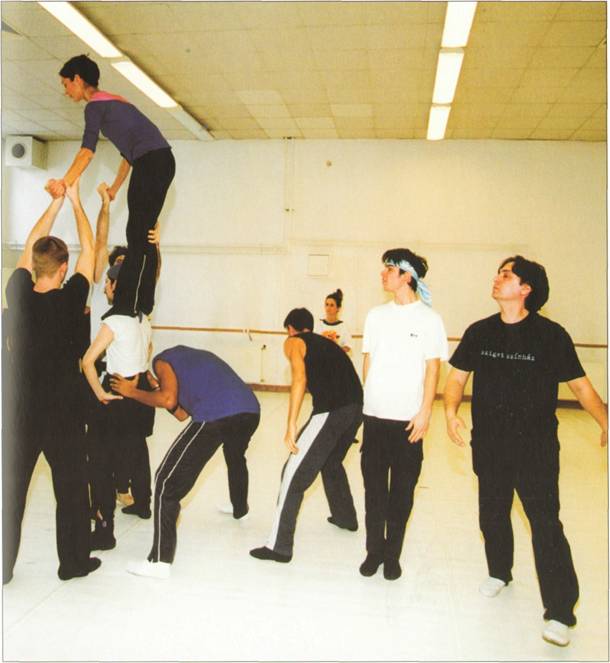
- Sárközi Gyula tanítás közben.
- O Sárközi Gyula sarso sittyarel
- Mr. Gyula Sárközi with his students.
- M. Gyula Sárközi avec ses élèves.
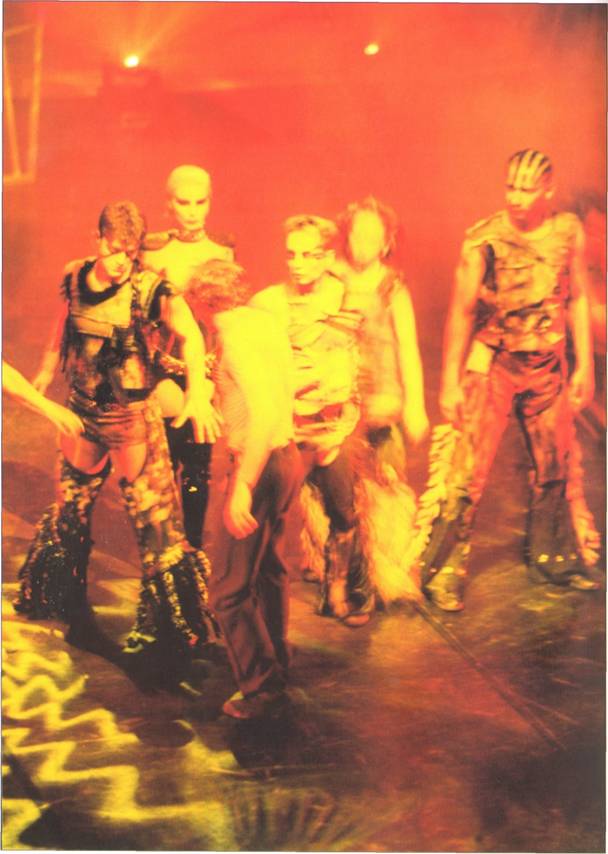
- A XXI. Századi Macbeth, Sárközi Gyula rendezésében, a Thália Színházban.
- Le XXI-to shel bershengo Machbet sarso o Sárközi Gyula kerdasles ande o Thalia teatro.
- 21st Century 'Macbeth' at the Thália Theatre, directed by Mr. Gyula Sárközi.
- Une présentation de 'Macbeth' du 21éme siècle au théâtre Thália, dirigée par Mr. Gyula Sárközi.
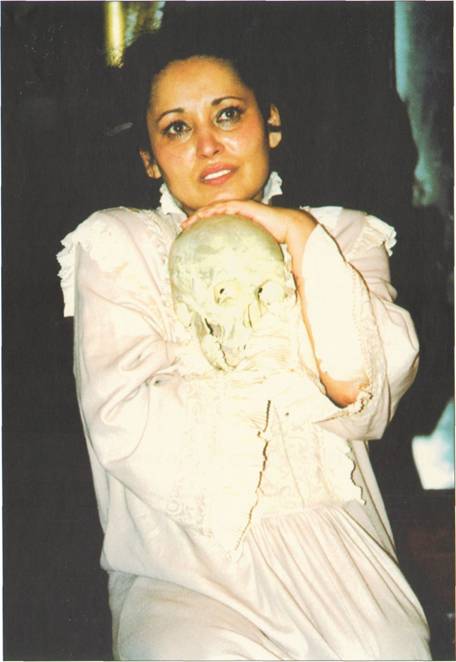
- Jónás Judit Domján Edit-díjas színművész.
- E Jónás Judit Domján Editaki avri vazdadyi aktorica.
- Ms. Judit Jónás, celebrated actress, winner of the 'Domján Edit' prize.
- Mme Judit Jónás, actrice célèbre, lauréate du Prix 'Domján Edit'.
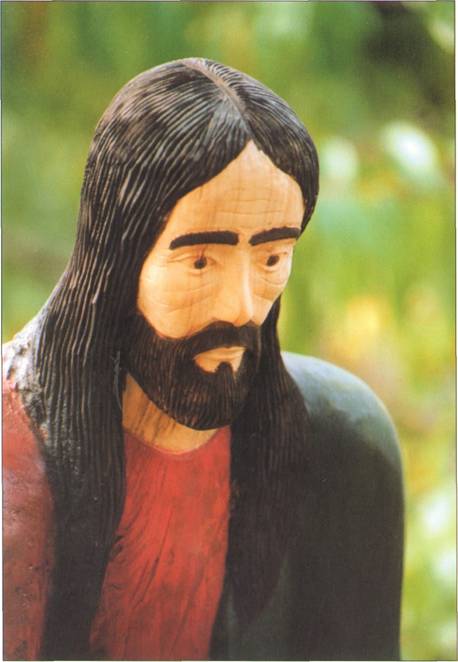
- Kosztics László műve: a „Jézus".
- Le Kosztics Lászlóvéski butyi: o Jézush
- 'Jesus' sculpted in wood by Mr. László Kosztics.
- 'Jésus' sculpté en bois par M. László Kosztics.
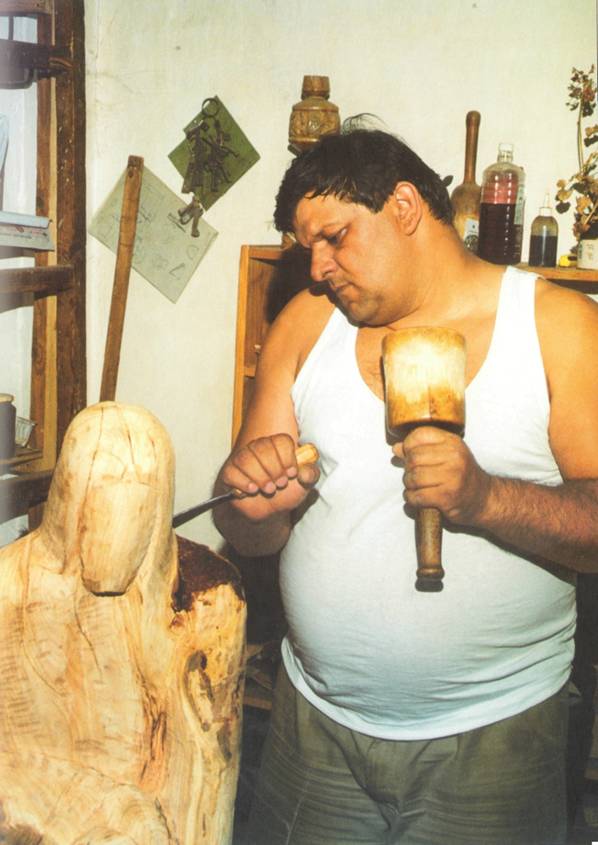
- Kosztics László faszobrász.
- O Kosztics László kashtengo manushari.
- Mr. László Kosztics, wood-sculptor.
- M. László Kosztics, sculpteur en bois.
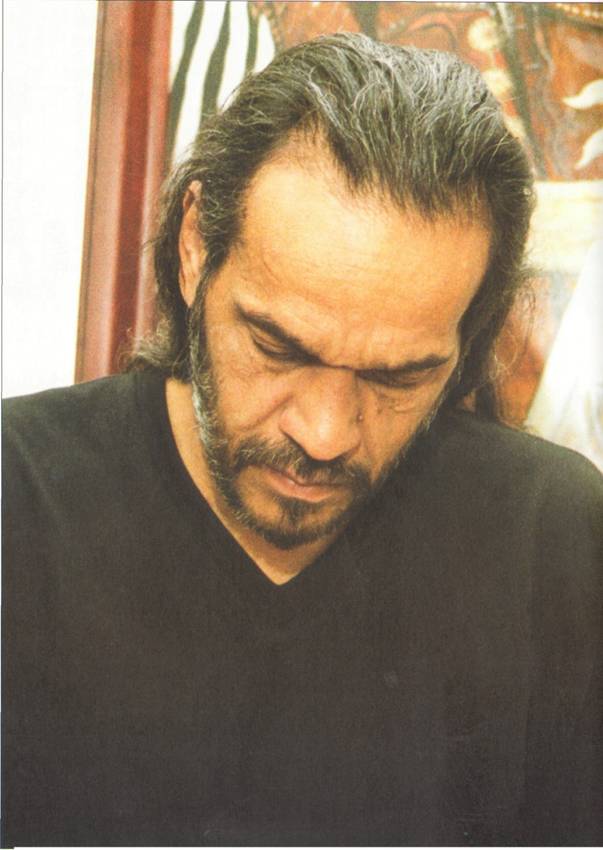
- Szentandrássy István festőművész (Pro Urbe-díjas).
- O Szentandrassy István (Pro Urbe-sa avri vazdino)
- Mr. István Szentandrássy, painter - winner of the 'Proube' prize.
- M. István Szentandrássy, peintre qui a gagné le Prix 'Proube'.
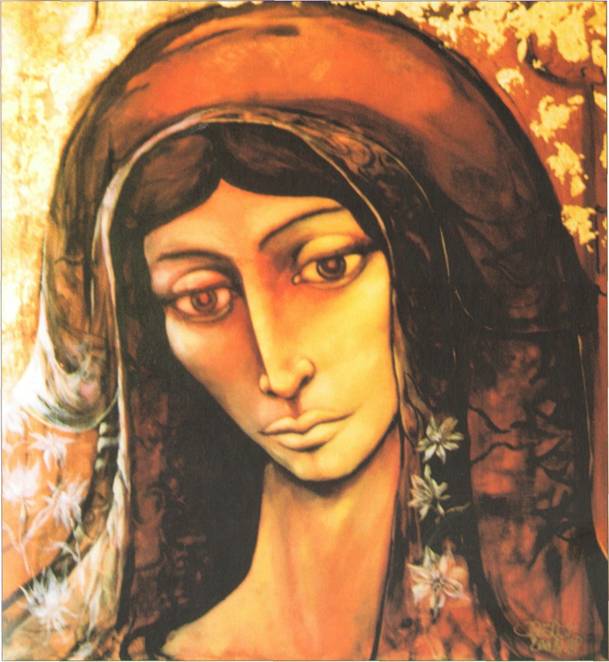
- Cigány Madonna, Szentandrássy István műve. (Az Osztrák Nagykövet tulajdona.)
- E Romanyi Madona ( Le Oszterajkoske Ambasadosko si ) kerdasles o Szentandrássy István.
- 'Gipsy Madonna' painted by Mr. István Szentandrássy - owned by the Ambassador of Austria.
- 'La Madonne Tzigane'peinture de M. István Szentandrássy - propriété de l'Ambassadeur d'Autriche.
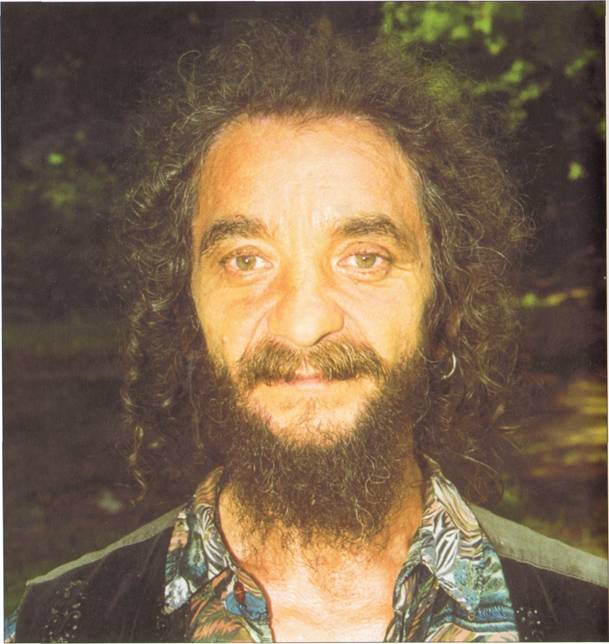
- Bari Janó naiv festő.
- O Bari Janó nasittyilo makhari
- Mr. Janó Bari, naif-style painter.
- M. Janó Bari, peintre de style naïf.
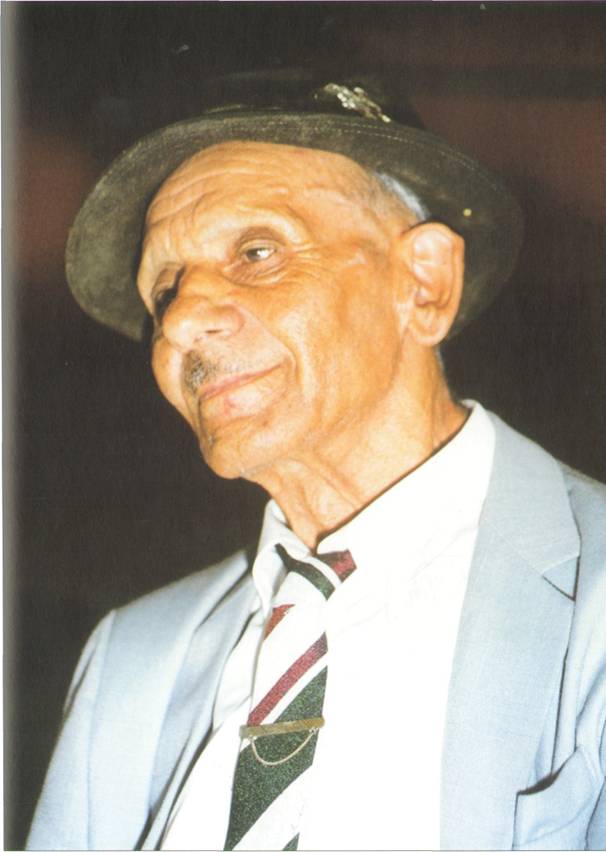
- Fenyvesi József naiv festő.
- O Fenyvesi József nasittyilo mnakhari
- The late naif-style painter, Mr. József Fenyvesi.
- Le décédé M. József Fenyvesi, peintre de style naïf.
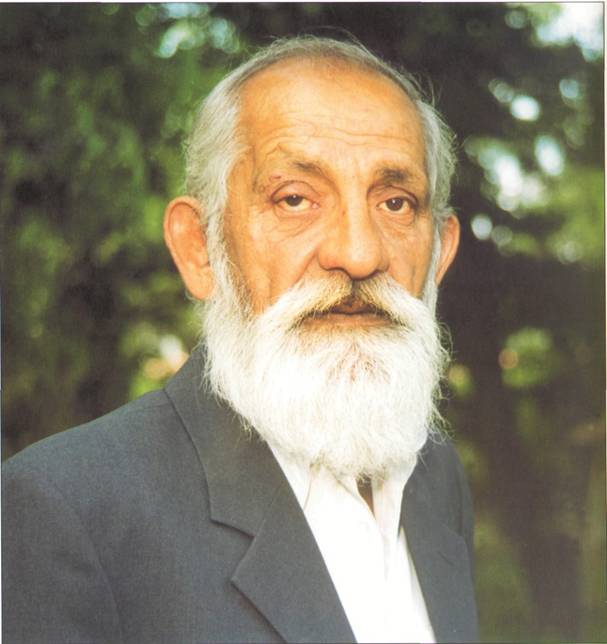
- Choli Daróczi József író, költő, műfordító.
- O Choli Daróczi József poeto-boldari
- Mr. József Choli Daróczi, writer, poet and translator of literary works.
- M. József Choli Daróczi, écrivain, poète et traducteur d'oeuvres littéraires.
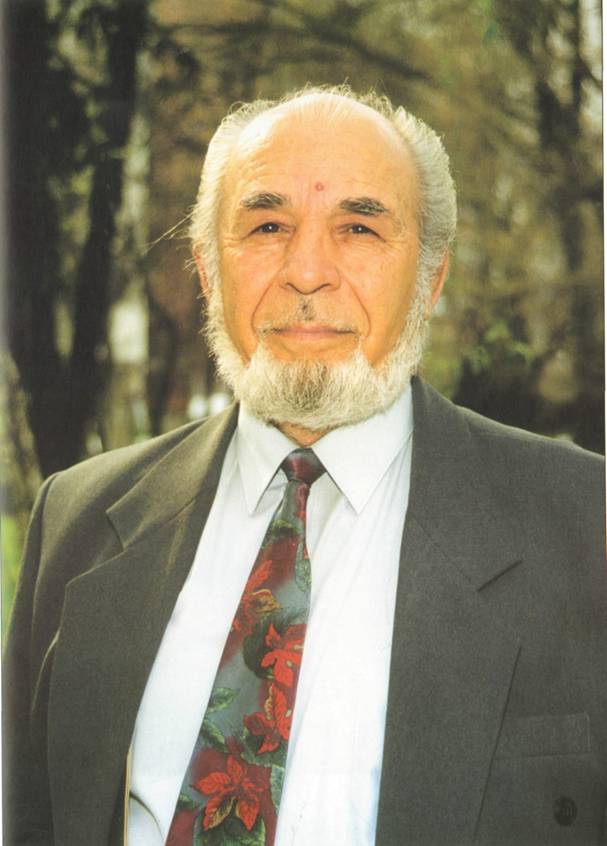
- Lakatos Menyhért író.
- O Lakatos Menyhért iskiritori
- Mr. Menyhért Lakatos, writer.
- M. Menyhért Lakatos, écrivain.
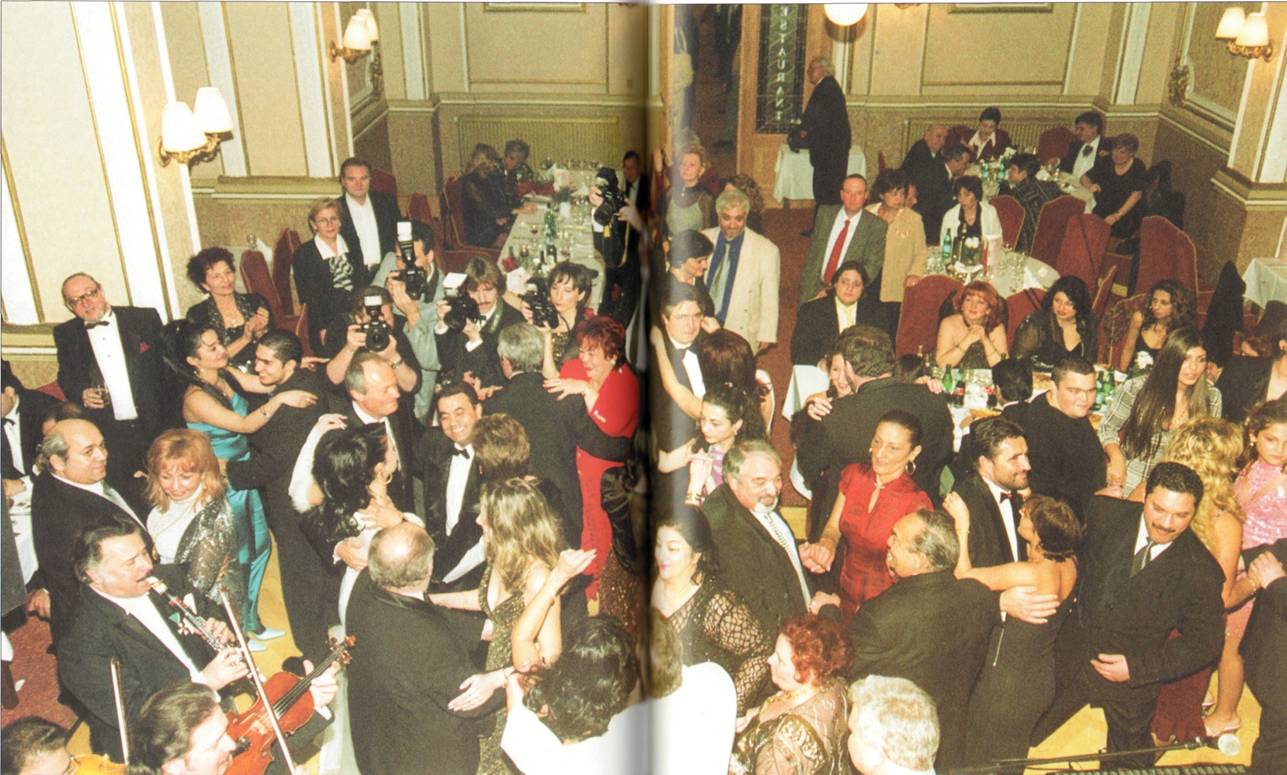
- Cigánybál a Nemzeti Szállóban.
- Romano Baldo ande o Hotel Nemzeti.
- Gipsy Ball in the 'Nemzeti' Hotel.
- Le bal tzigane a l'hőtel Nemzeti.
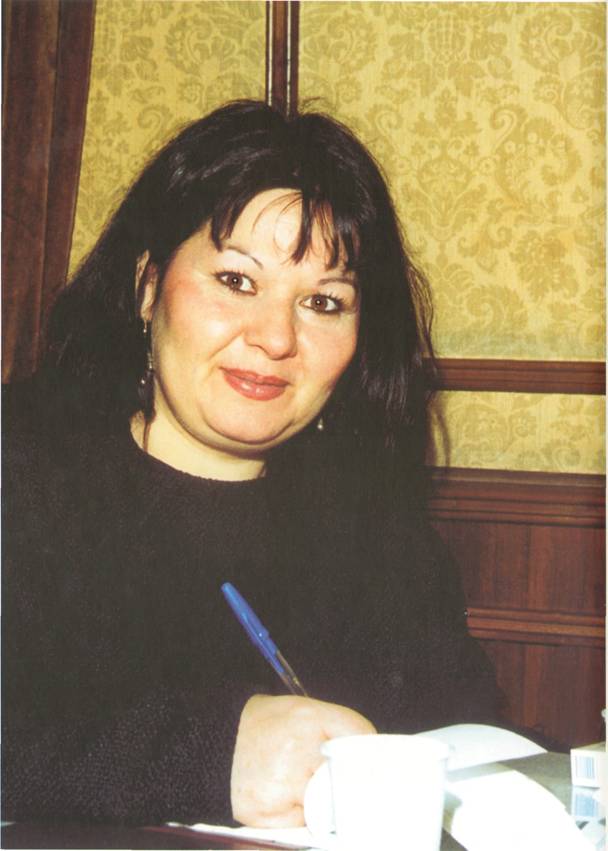
- Szécsi Magda író, költő, festőművész. (Ferenczi Noémi-díjas.)
- E Szecsi Magda iszkiritorica, poetica, makhinarica(Ferenczi Noemi vazdimasaski)
- Ms. Magda Szécsi, writer, poet and painter - winner of the 'Ferenczi Noémi' prize.
- Mme Magda Szécsi, écrivain, poétesse and peintre - lauréate du Prix 'Ferenczi Noémi'.
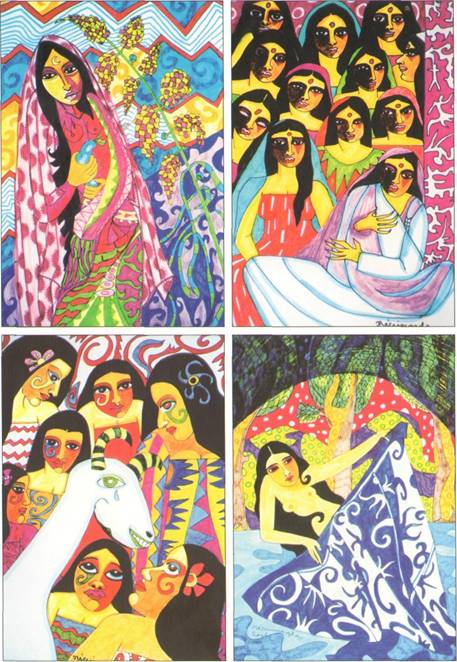
- Szécsi Magda: az „Asszonyok szigete"-sorozat részei.
- Kathar e Szecsi Magda:„Zhuvlyango ladadyi phuv"ekh rig.
- Details from the work named 'Women's Island'.
- Détails d'une oeuvre nommée 'L'île des Femmes'.
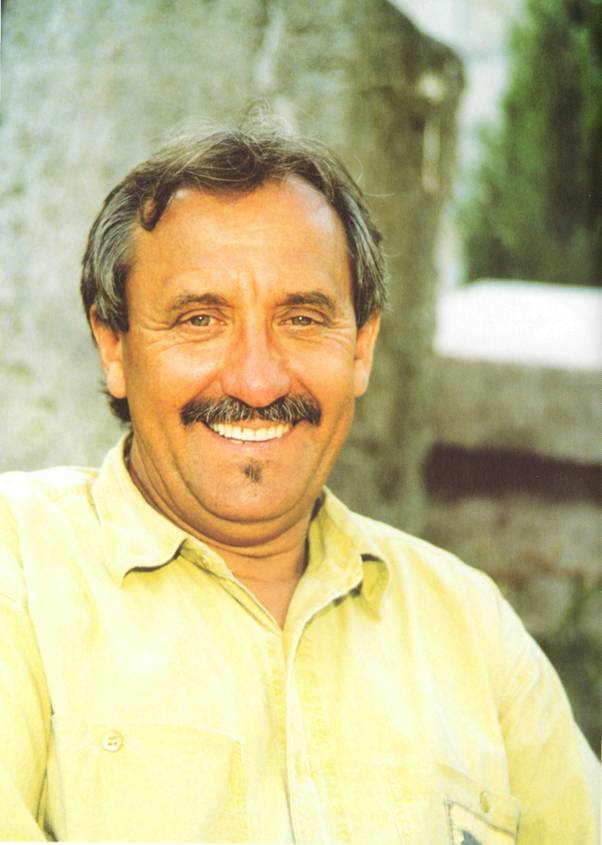
- Sándor Antal szobrászművész (Zsámbék).
- O Sándor Antal szobrongo zhanari (andej Zhambeka
- Mr. Antal Sándor, sculptor from Zsámbék.
- M. Antal Sándor, sculpteur de Zsámbék.
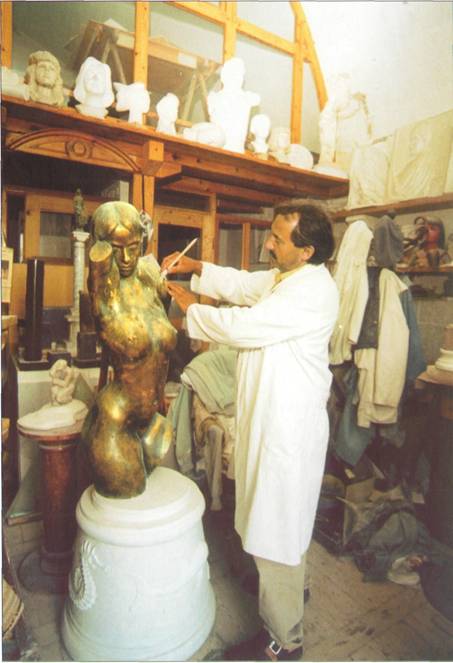
- Sándor Antal a szobrászműhelyben.
- O Sándor Antal ande le sobrongo kerimasko kher.
- Mr. Antal Sándor in his sculpting workshop.
- M. Antal Sándor dans son atelier.
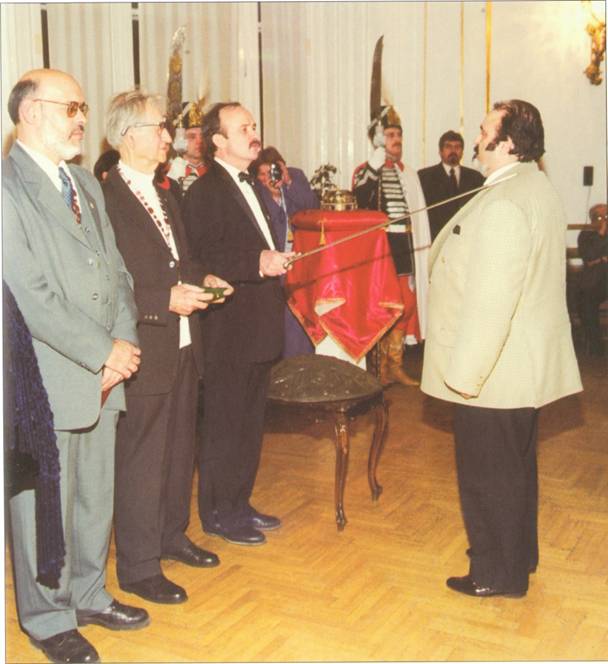
- Roma küldöttség utazott Rómába, pápai áldásra.
- Romano delegato gelas ande e Roma, kaj o sherutno rashaj te svuncille.
- A Gipsy delegation travelled to Rome to receive the Papal blessing.
- Une délégation tzigane s'est rendue à Rome pour recevoir la bénédiction du Pape.
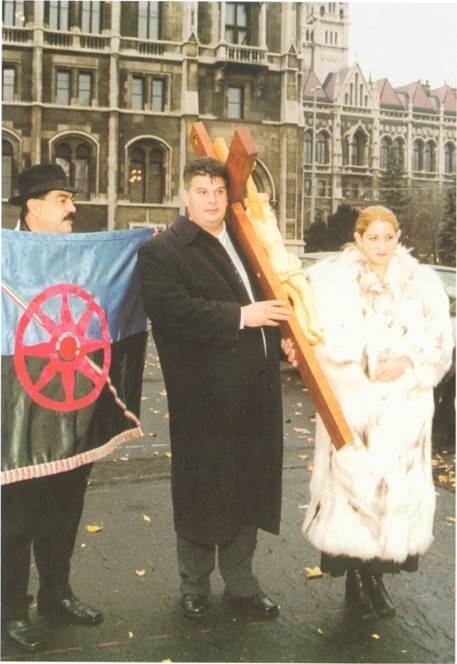
- A Kultúra lovagjává avatják Raduly Józsefet.
- La kulturake grastareske malaven le Raduly Józsefos.
- Mr. József Raduly receives the honor of becoming a Knight of Culture, as the president of the 100 Gipsy Musicians' Orchestra.
- M. József Raduly décoré Chevalier de la Culture comme le président de l'orchestre des 100 Musiciens Tziganes.

- Péli Tamás és felesége.
- O Péli Tamás thaj leski romnyi.
- Mr. and Mrs. Tamás Péli.
- M. et Mme Tamás Péli.
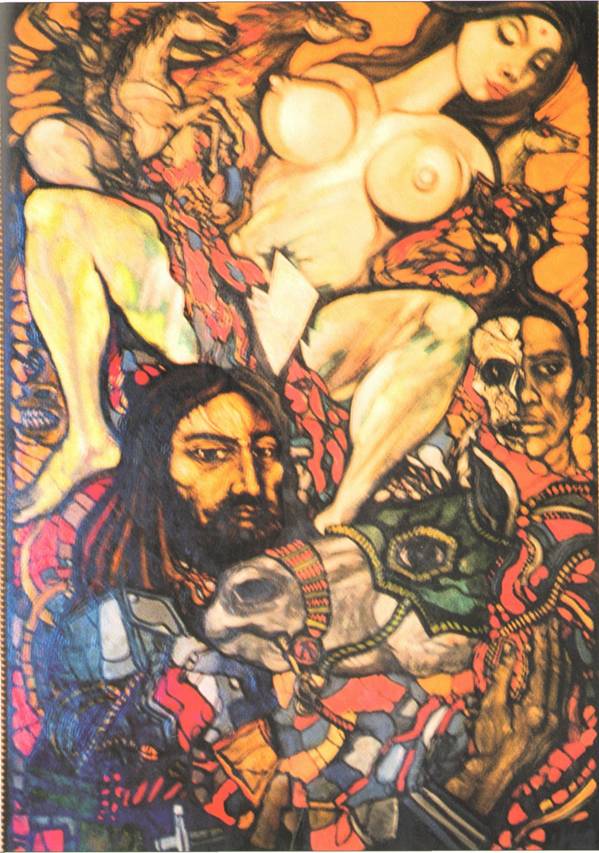
- Péli Tamás festménye.
- Le Péli Tamaseski butyi.
- Painting by Mr. Tamás Péli.
- Peinture de M. Tamás Péli
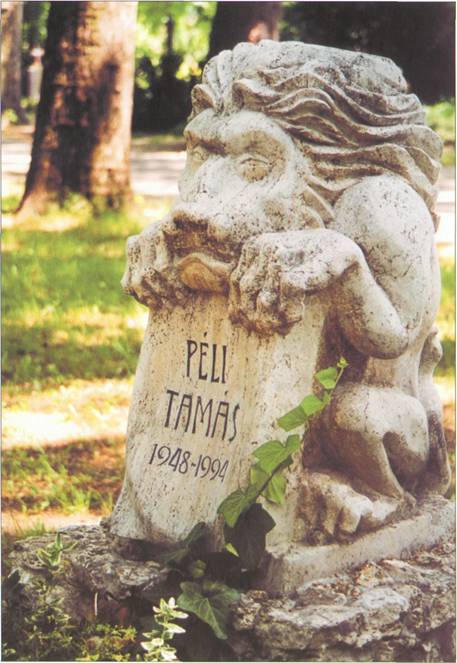
- Péli Tamás síremléke. (Perger László Gyula műve.)
- Le Peli Tamashesko murmunto (kerdasles o Perger Laslo Gyula)
- Mr. Tamás Péli's tomb - the work of Mr. László Gyula Perger.
- Le monument funéraire de M. Tamás Péli. l'oeuvre de M. László Gyula Perger.
Nyári Gyula - Úton
Zene, zene, zene
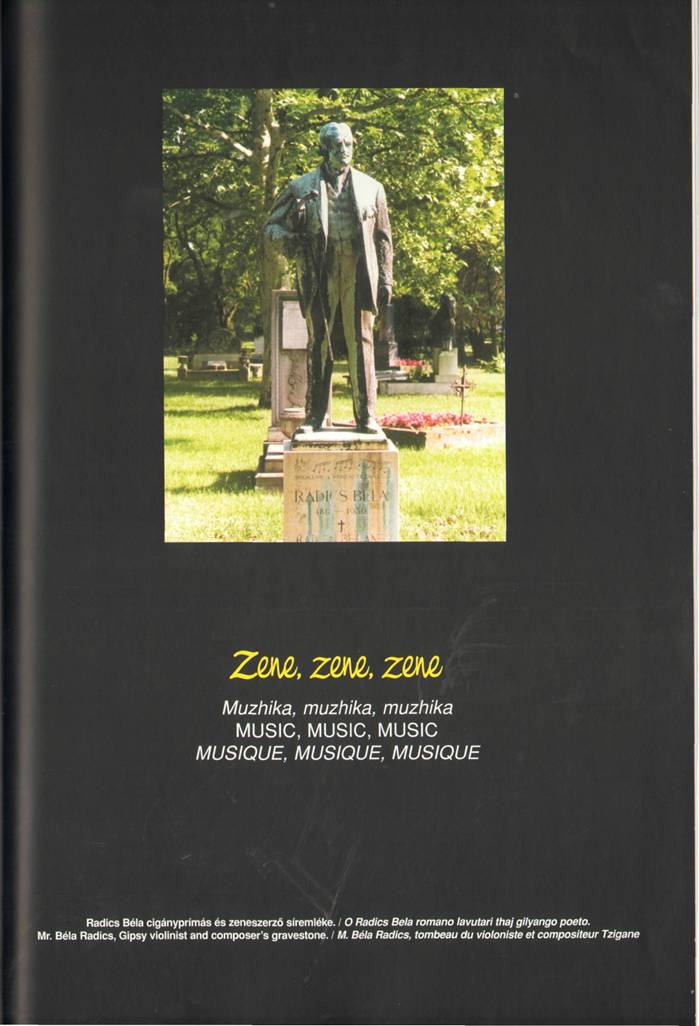
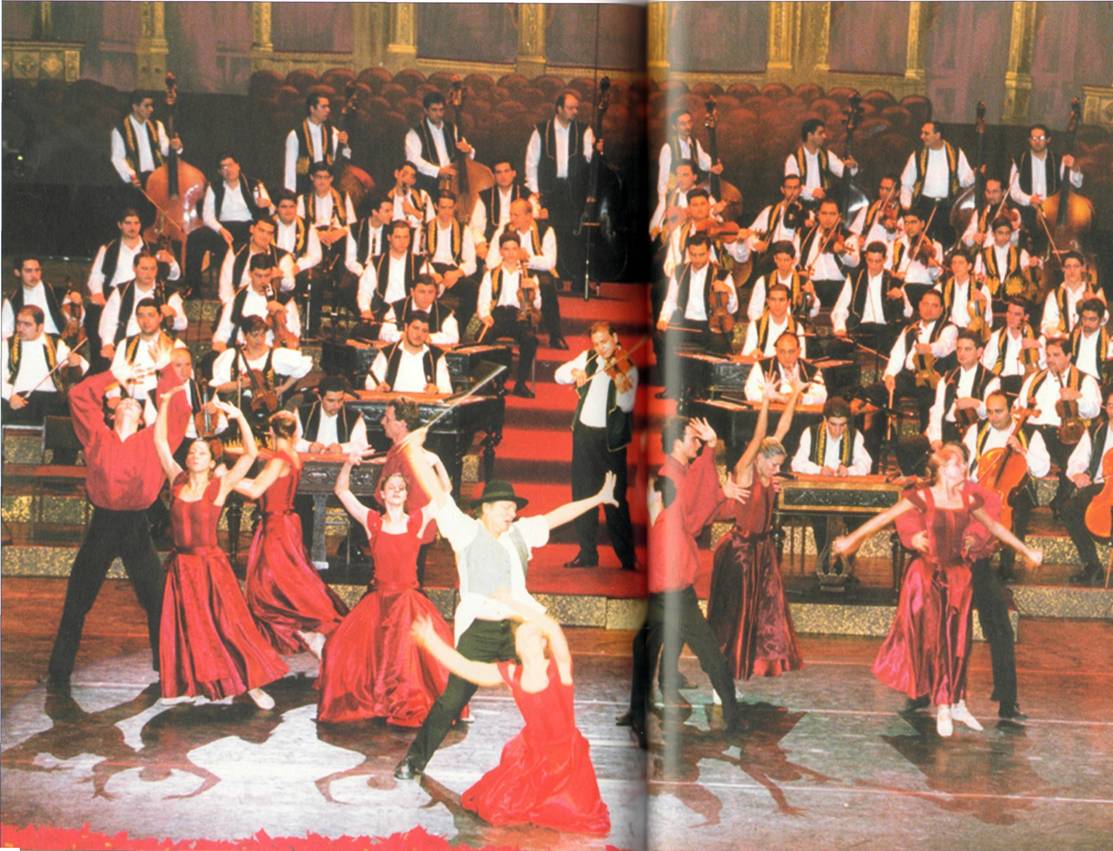
- A Talentum Rajkózenekar Markó Iván balettkarával a Romániáde díszelőadásán, 2002 karácsonyán az Operaházban.
- O Talentum Romane Ternengi Grupa le Markó Iváneska balet-kujasa: Romaniada angluno andre sikajipe, 2002. Bershesko krechuno, anda la Operako kher.
- 'Romániáde' gala Christmas performance of the ballet Company of Mr. Iván Markó accompanied by the 'Talentum' Youth Gipsy Band at the State Opera House. (2002)
- 'Romániáde' grand spectacle de ballet à l'occasion de Noël par la troupe de M. Iván Markó accompagné par 'Talentum', l'orchestre des Jeunes Musiciens Tziganes à l'Opéra National. (2002)
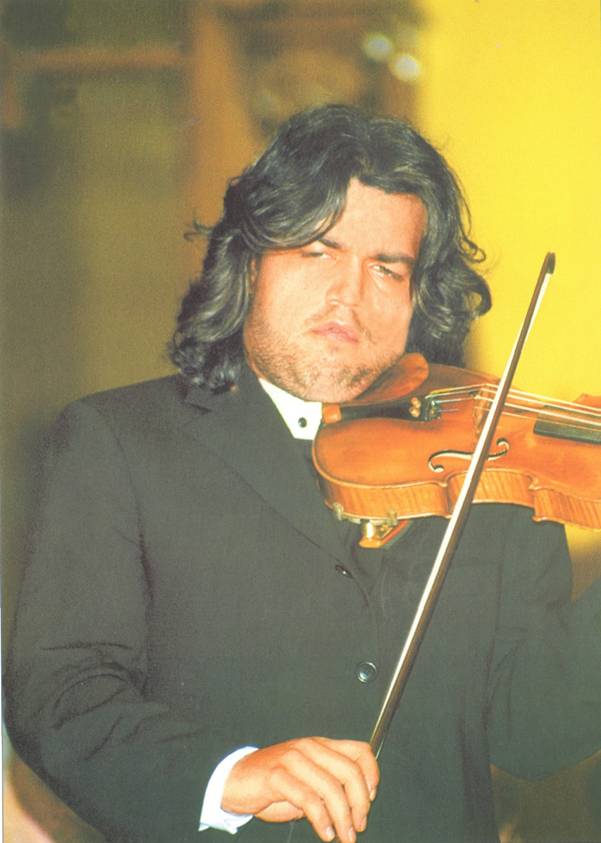
- Sánta Ferenc Liszt díjas hegedűművész.
- O Bango Ferenc Liszt-lovengo bashadyako baro.
- Mr. Ferenc Sánta, violon artist - winner of the 'Liszt' prize.
- M. Ferenc Sánta, violoniste - lauréat du Prix 'Liszt'.
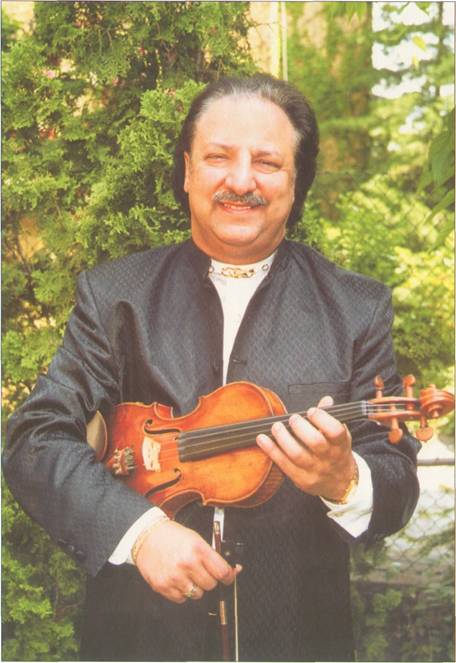
- Ifj. Lendvai Csócsi József Liszt díjas hegedűművész.
- O terno Lendvai Chochi József Liszt lovengo bashadyako zanari.
- Mr. József Lendvai Csócsi Jr., violin artist and winner of the 'Liszt' prize.
- M. József Lendvai Csócsi fils, violoniste, lauréat du Prix 'Liszt'.
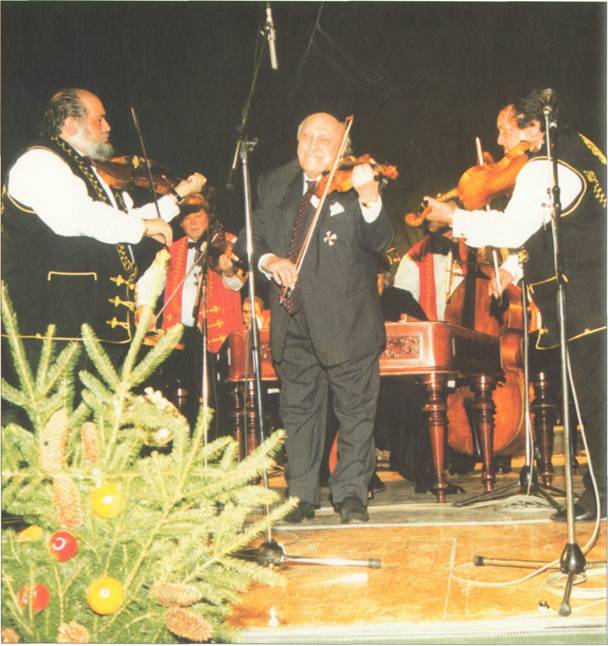
- Bufó Rigó Sándor, Boros Lajos megkoronázott prímáskirály és Lendvai Csócsi József.
- O Bufo Rigó Sándor, o Boros Lajos kununisardo bashadyako kraj, thaj o Lendvai Csócsi József.
- Mr. Sándor Bufó Rigó, the crowned first violinist Mr. Lajos Boros and Mr. József Lendvai Csócsi.
- M. Sándor Bufó Rigó, M. Lajos Boros - le violoniste/soliste couronné et M. József Lendvai Csócsi.
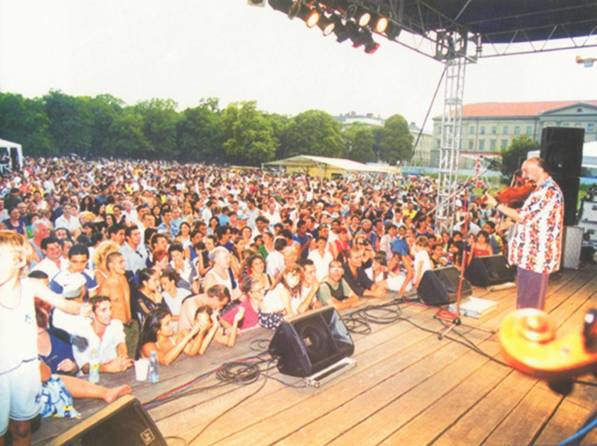
- Járóka Sándor cigányprímás az Orczy-kertben.
- O Járóka Sándor romano lavutari ande e Orczi-bar.
- Mr. Sándor Járóka, Gipsy violinist at the Orczy Garden.
- M. Sándor Járóka, violoniste au Jardin Orczy.
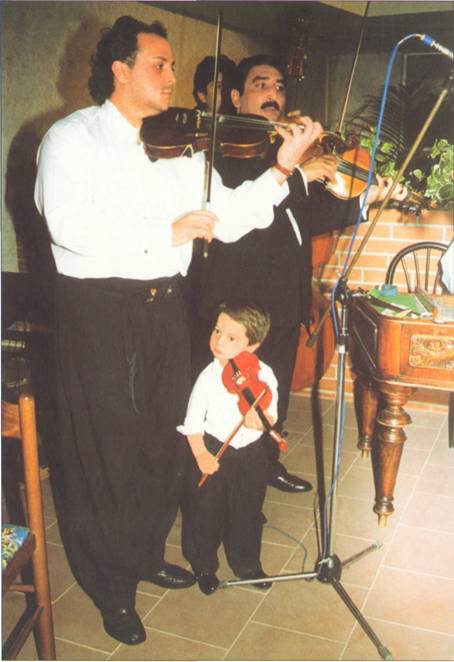
- Sárközi Lajoska és édesapja (1994). Azóta több hegedűverseny győztese.
- O Sárközi Lajoska thaj lesko dad (1994) datunchara majbut bashadyaka luptako linari.
- Lajoska Sárközi Jr. with his father, winner of several violin competitions since 1994.
- Le jeune Lajos Sárközi avec son père, lauréat de plusieurs concours de violon depuis 1994.
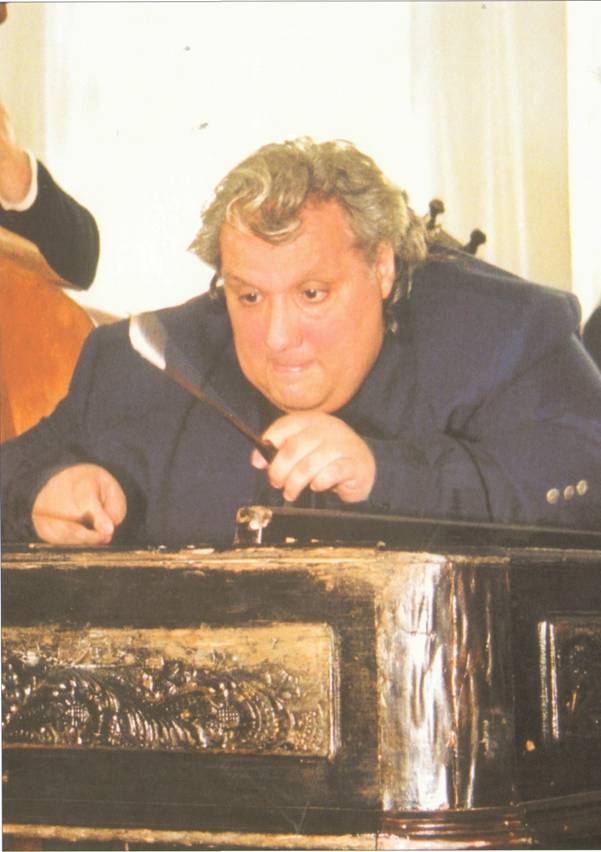
- Ökrös Oszkár cimbalomművész.
- O Ökrös Oszkár la combalmako zhanari.
- Mr. Oszkár Ökrös, cymbalo artist.
- M. Oszkár Ökrös, joueur de cymbalum.
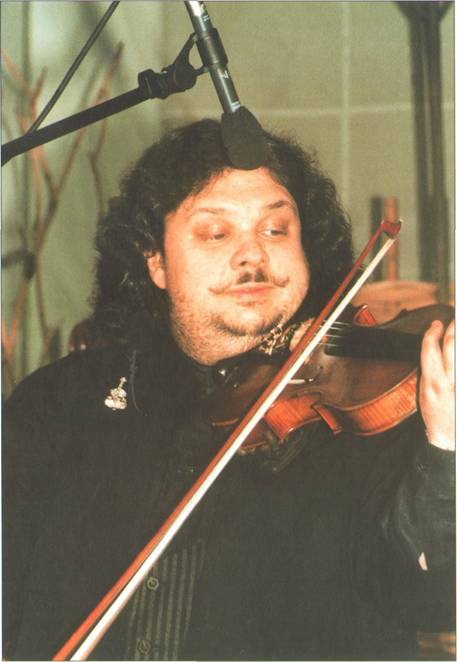
- Robi Lakatos világhírű jazz hegedűművész.
- O Robi Lakatos pa kaste vi e luma zhanel jazz bashadyako zhanari
- Mr. Robi Lakatos, world-famed jazz violin artist.
- M. Robi Lakatos, célébrité de violon 'jazz'.
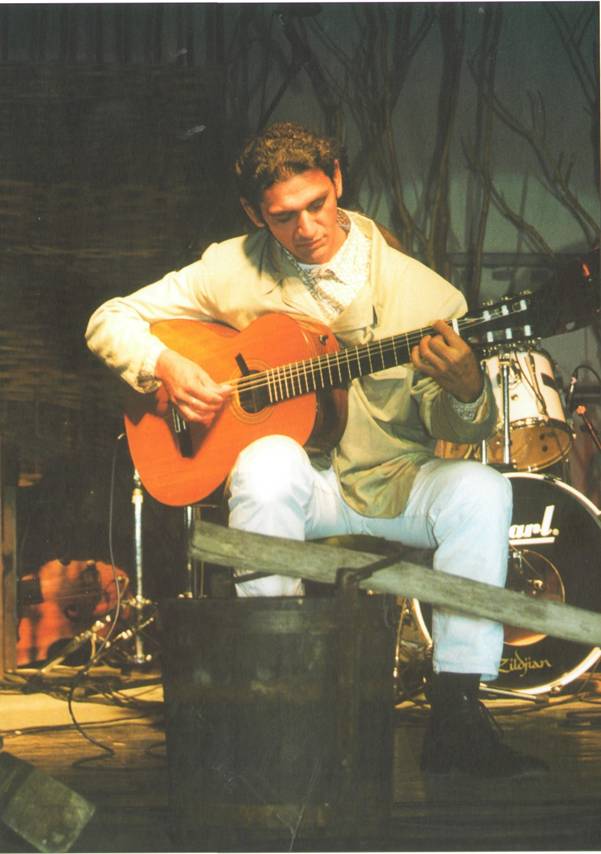
- Snétberger Ferenc gitárművész.
- O Snétberger Ferenc gitarako zhanari
- Mr. Ferenc Snétberger, gitar artist.
- M. Ferenc Snétberger, joueur de guitare.
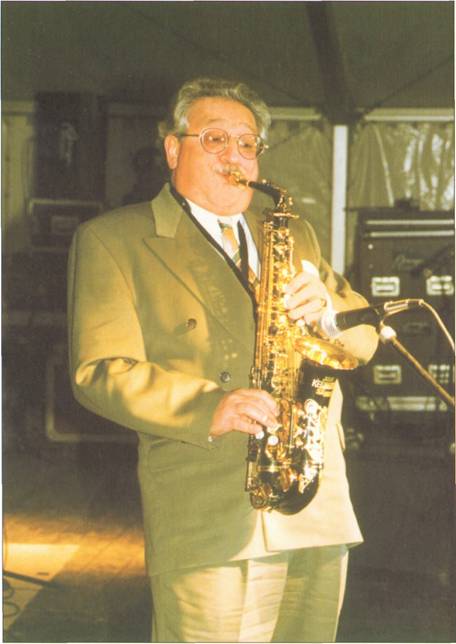
- † Lakatos Dezső világhírű szakszofonos.
- O Lakatos Dezső pa kaste intrego luma zhanel, saksofari.
- The late Mr. Dezső Lakatos, world renowned Saxophonist.
- Le décédé M. Dezső Lakatos, célébrité du saxophone.
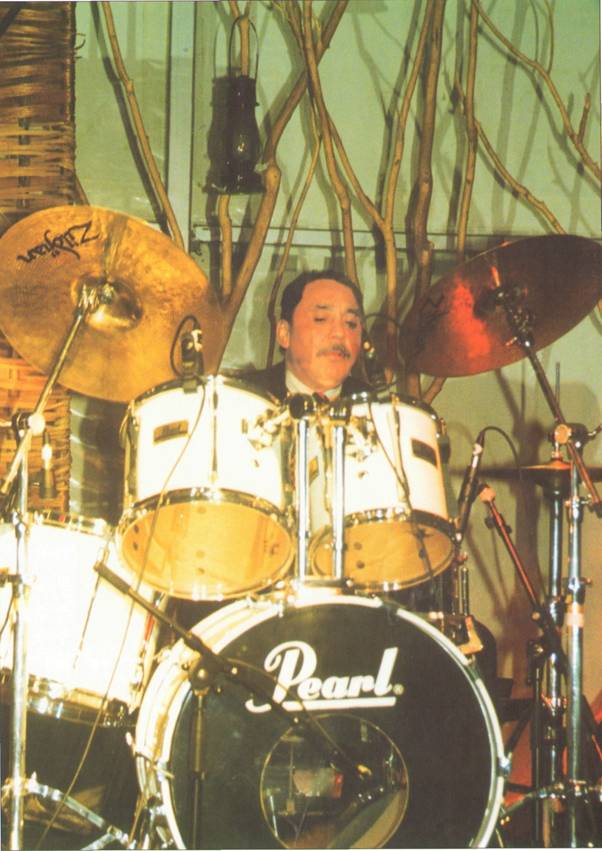
- Pecek Lakatos Géza dobvirtuóz.
- O Pecek Lakatos Géza dubako virtuozo
- Mr. Géza Pecek Lakatos, drum virtuoso.
- M. Géza Pecek Lakatos, joueur de tambour virtuose.
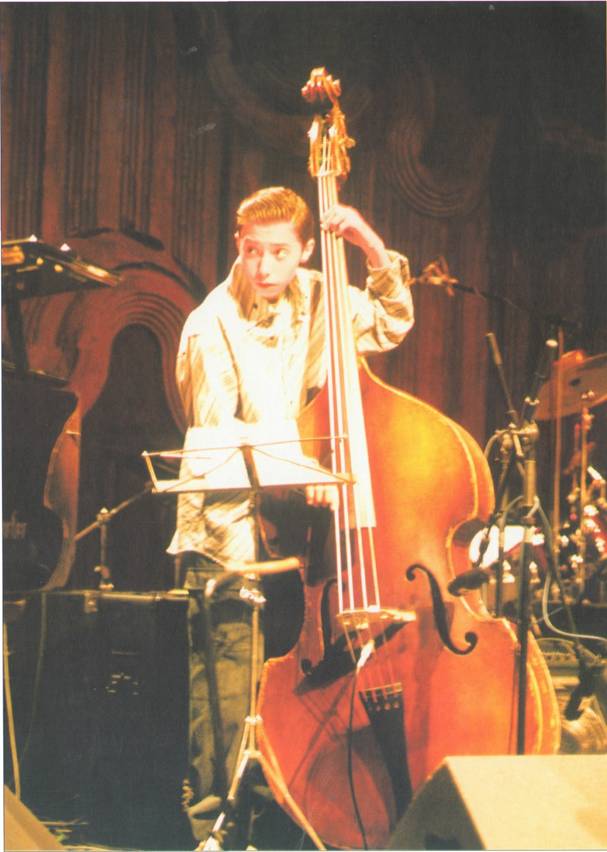
- Hegedűóra a Talentum Zeneművészeti Iskolában, hegedűtanár Horváth Jenő.
- Bashadyako chaso ande o Talentum Romane shave, bashadyako sittyari o Horváth Jenő
- Violin lesson at the Talentum' Youth Gipsy Band with their teacher, Mr. Jenő Horváth.
- Leçon de violon au 'Talentum', l'orchestre des Jeunes Musiciens Tziganes avec leur instructeur, M. Jenő Horváth.
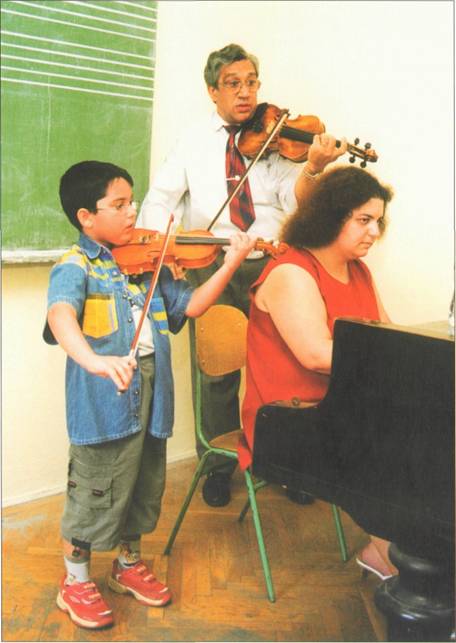
- Pecek Lakatos Krisztián, a Rádió által meghirdetett jazz bőgőverseny első helyezettje.
- O Pecek Lakatos Krisztián o angluno pe kodo luptipe, la bara bashadyakom, savo Rádiovo akhardas kethane.
- Mr. Krisztián Pecek Lakatos, jazz bass player who won first place in the competition organized by the National Hungarian Radio.
- M. Krisztián Pecek Lakatos, joueur de contrebasse de jazz qui a gagné la 1ère place dans un concours organisé par la Radio Nationale Hongroise.
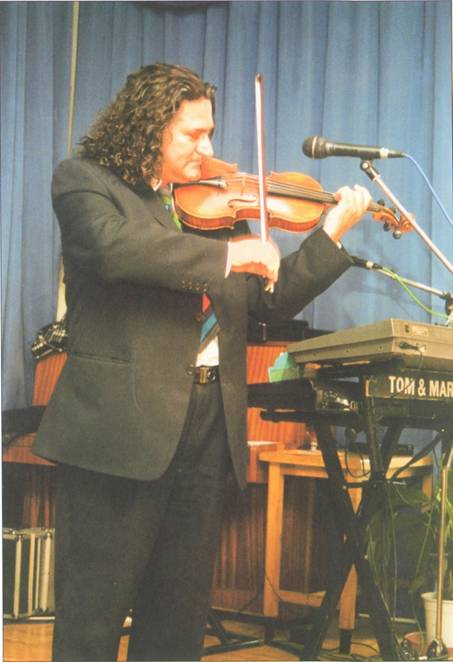
- Kathy Horváth Lajos Jehudin Menuhin-díjas hegedűművész.
- O Kathy Horváth Lajos Jehudi Mnuhin loveng bashadyako zhanari.
- Mr. Lajos Kathy Horváth, violin artist and winner of the 'Jehudi Menuhin' prize.
- M. Lajos Kathy Horváth, violoniste et lauréat du Prix 'Jehudi Menuhin'.
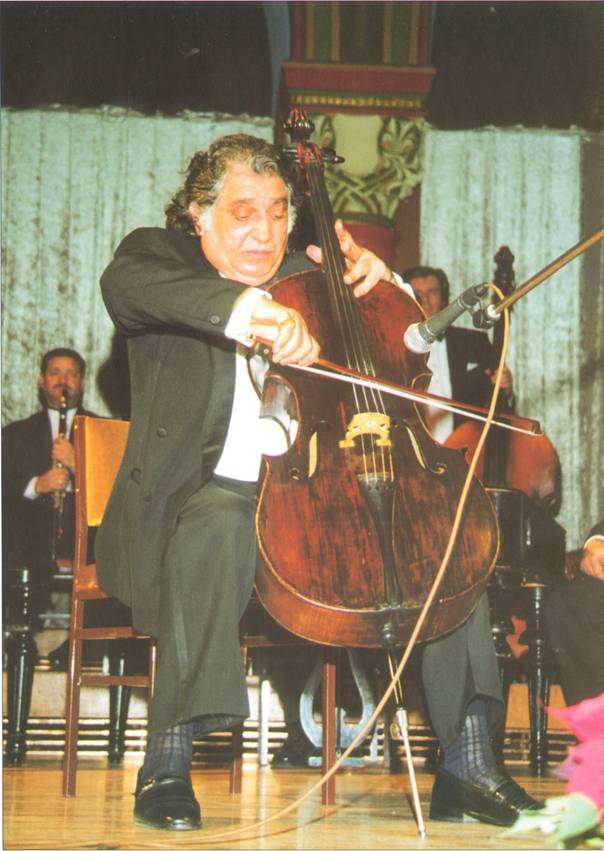
- Oláh Ernő csellóművész (a Magyar Rádió szólistája).
- O Oláh Ernő cinya bungalyako zhanari (le Ungrikone Radiovosko korkorari)
- Mr. Ernő Oláh, cello artist, solo cellist at the National Hungarian Radio.
- M. Ernő Oláh, joueur de violoncelle à la Radio Nationale Hongroise.
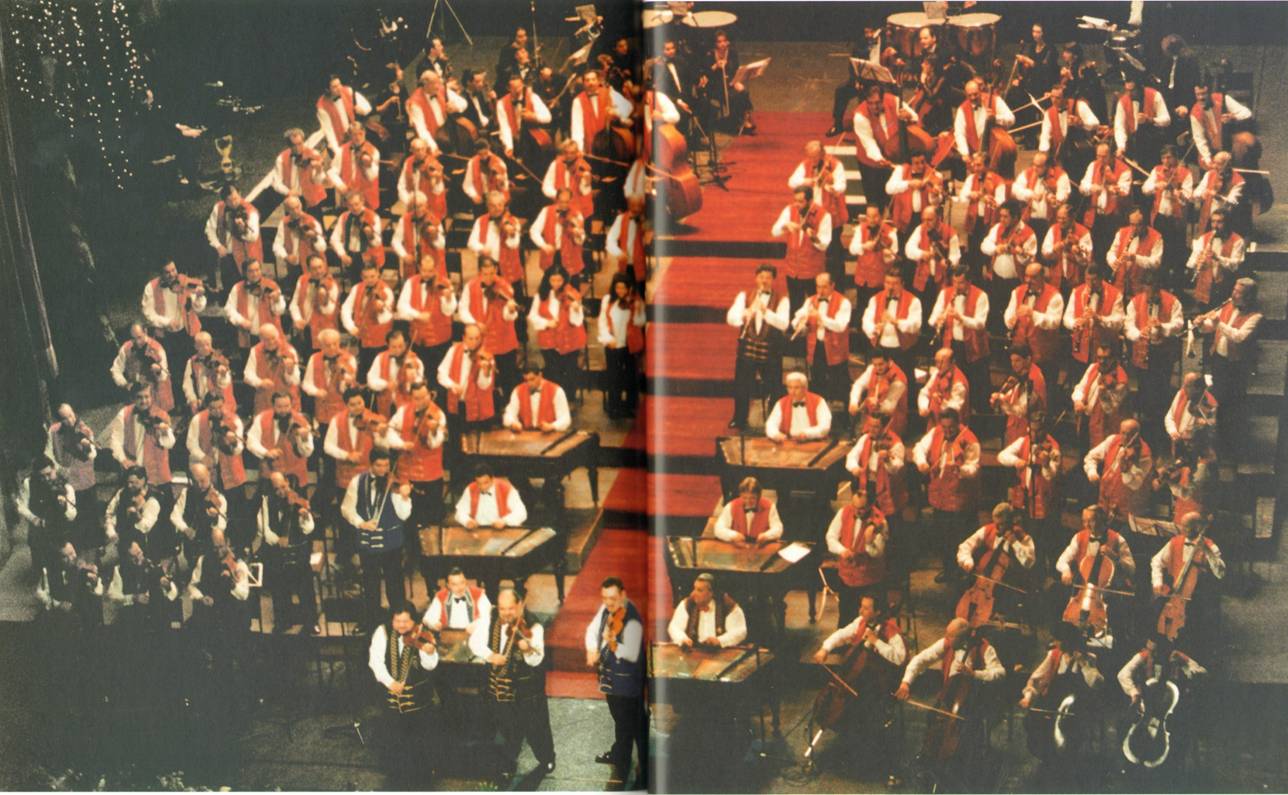
- 100 Tagú Cigányzenekar az Operaházban.
- Le shel zhene bashadyange gruposke zhene ande la Operako kher
- The 100 Gipsy Musicians Orchestra's performance at the State Opera House.
- Les 100 Musiciens Tziganes participant au grand spectacle de l'Opéra National.
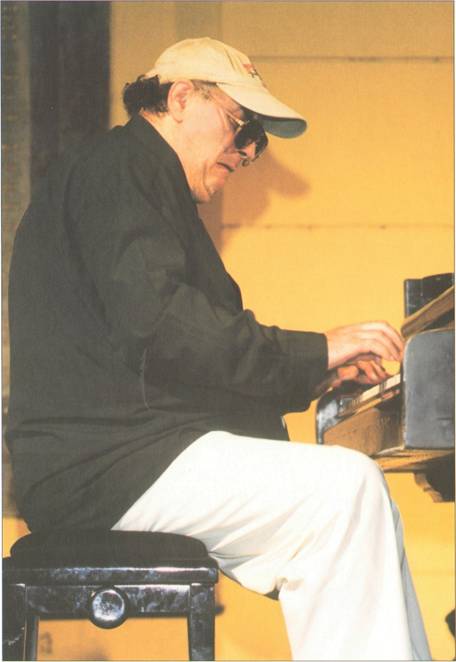
- Szakcsi Lakatos Béla, a Liszt-díjas zeneszerző és zongoraművész.
- O Szakcsi Lakatos Béla Liszt lovengo gilyango poeto thaj pianisto
- Mr. Béla Szakcsi Lakatos, composer and pianist as well as winner of the 'Liszt' prize.
- M. Béla Szakcsi Lakatos, compositeur et pianiste ainsi que lauréat du Prix 'Liszt'.
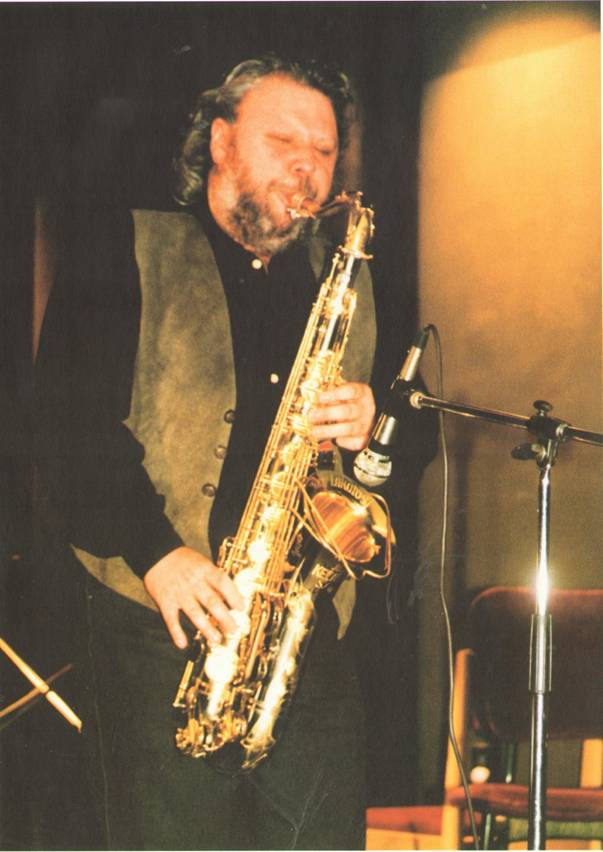
- Tony Lakatos világhírű jazz szakszofonos.
- O Tony Lakatos pa kaste intrego luma zhanel, jazzutno saksofari.
- Mr. Tony Lakatos, world renowned jazz Saxophonist.
- M. Tony Lakatos, célébrité du saxophone 'jazz'.
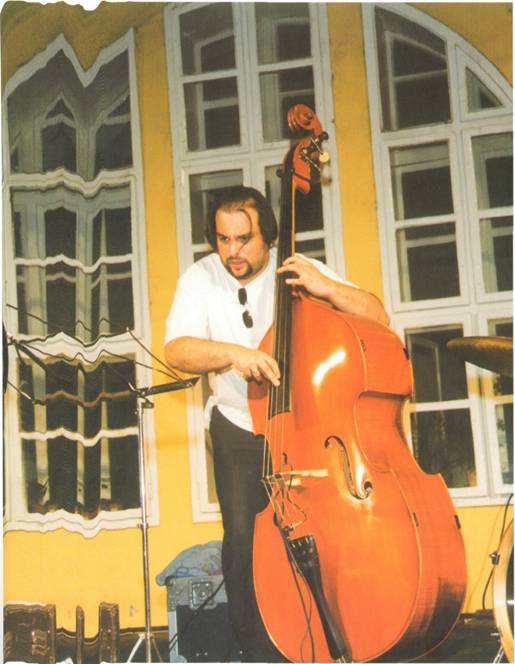
- Barcza Horváth József bőgőművész-tanár
- O Barcza-Horváth József bara lavutako zhanari-sittyari
- Mr. József Barcza Horváth, bass artist and professor.
- M. József Barcza Horváth, joueur et professeur de contrebasse.
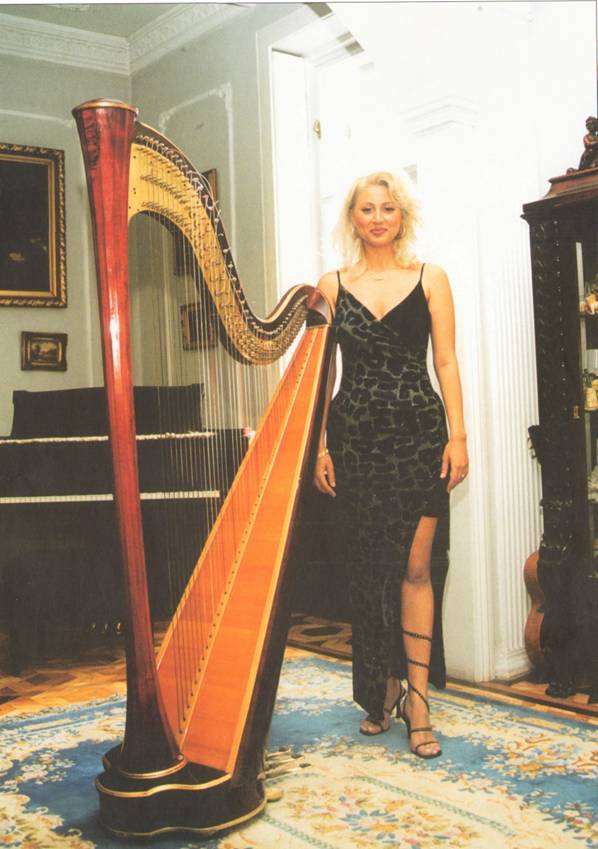
- Horváth Ildikó hárfaművész.
- E Horváth Ildikó harfaki zhanarica.
- Ms. Ildikó Horváth, harpist.
- Mlle Ildikó Horváth harpiste.
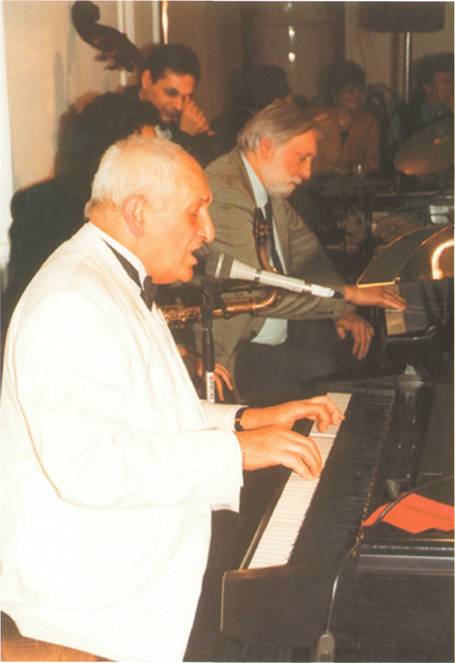
- Balogh Tibor Jazz zongorista.
- O Balogh Tibor Jazzako pianista.
- Mr. Tibor Balogh, piano player.
- M. Tibor Balogh, pianiste.
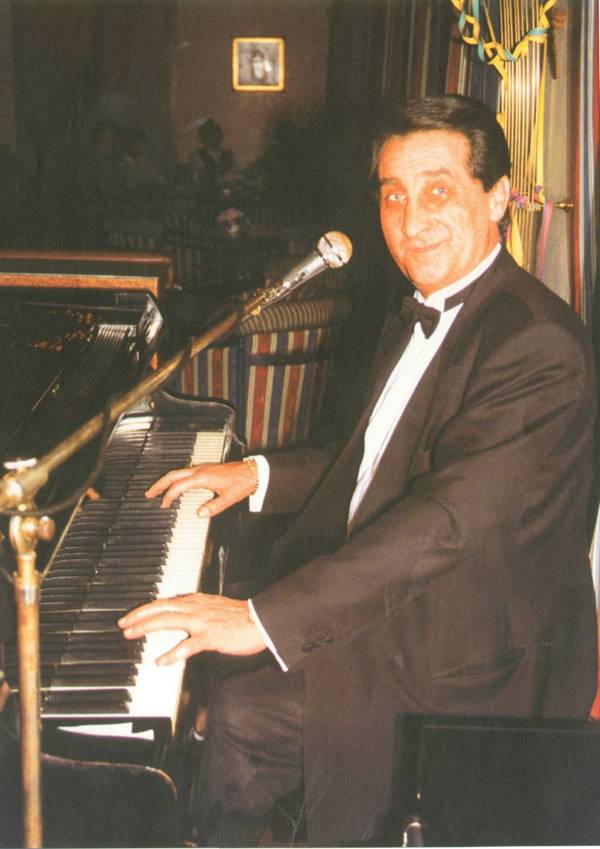
- † Torma Rudolf, a közkedvelt zongorista.
- O Torma Rudolf sakkonestar kamlo pianisto.
- The late Mr. Rudolf Torma, celebrated pianist.
- Feu M. Rudolf Torma, pianiste célèbre.
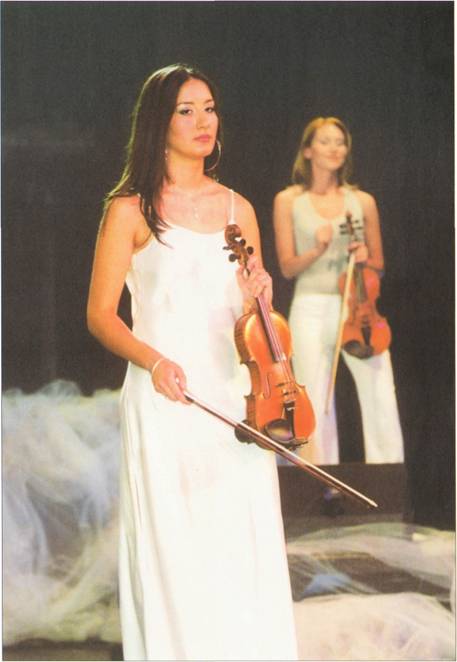
- Nyári Bernadett, a Bartók Béla Zeneművészeti Szakközépiskola és Gimnázium első éves hallgatója.
- E Nyári Bernadett le Bartok Béla muzikake Mashkarunya shkolaki thaj gimnaziumaki anglune bersheski sittyardyica.
- Miss Bernadett Nyári, first year student at the Béla Bartók Music School.
- Mlle Bernadett Nyári, en premiere année à l'École de Musique 'Béla Bartók'.
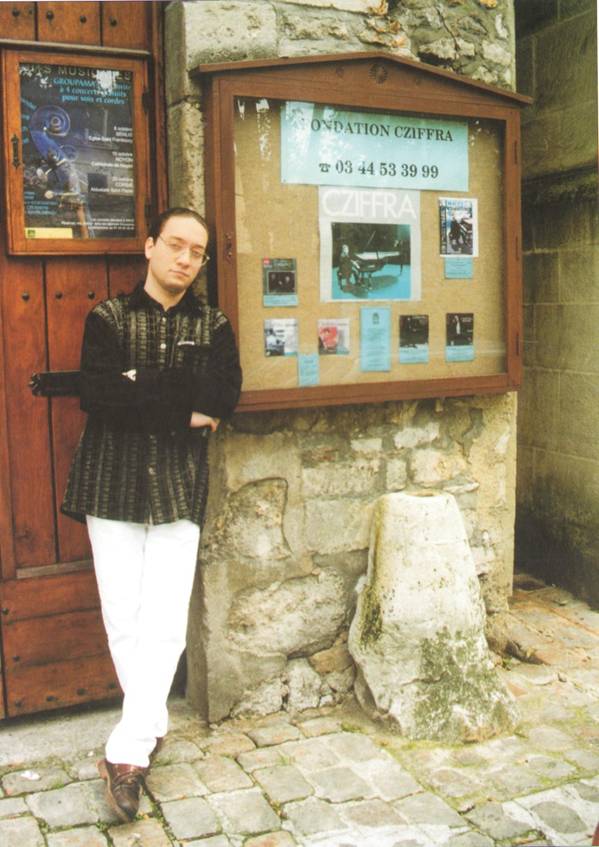
- Nyári Gyula László zongoraművész (a Cziffra Alapítvány kitüntetettje)
- O Nyári Gyula László pianisto (le Cziffra Fundacijako avri phuttyarari)
- Mr. Gyula László Nyári, classical pianist honored with distinction by the Cziffra Foundation.
- M. Gyula László Nyári, pianiste ayant reçu la distinction d'honneur de la Fondation Cziffra.
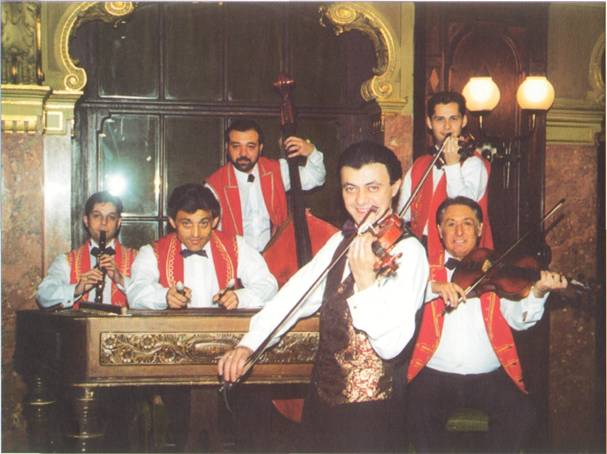
- Puka Károly és zenekara a Hungária kávéházban.
- O Puka Károly thaj leski orchestra ande e Hungaria kafaterija.
- Mr. Károly Puka and his orchestra at the 'Hungária' Café.
- M. Károly Puka et son orchestre au café'Hungária'.
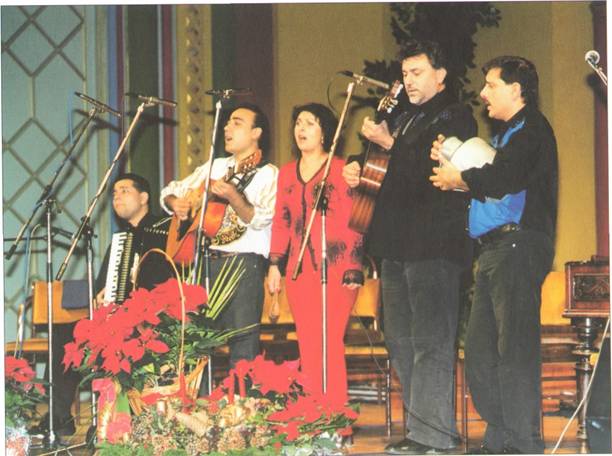
- Az Ando Drom együttes a Vigadóban.
- E Ando Drom grupa ande o Vigadóvo
- The 'Ando Drom' band at the 'Vígadó' concert hall.
- Le groupe 'Ando-Drom' dans la salle de concert 'Vígadó'.
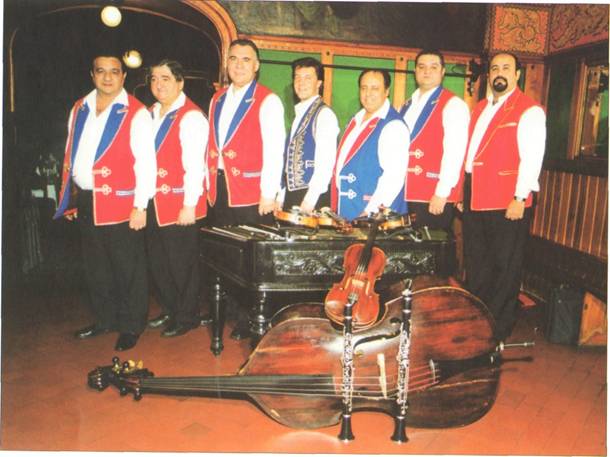
- Déki Lakatos Sándor zenekara a „Mátyás Pince"- étteremben.
- O Déki Lakatos Sándor thaj leski bashadyaki grupa ande e Matyash Pevnyica Xabenaria.
- Mr. Sándor Déki Lakatos' orchestra at the 'Mátyás Pince' restaurant.
- M. Sándor Déki Lakatos et son orchestre au restaurant 'Mátyás Pince'.
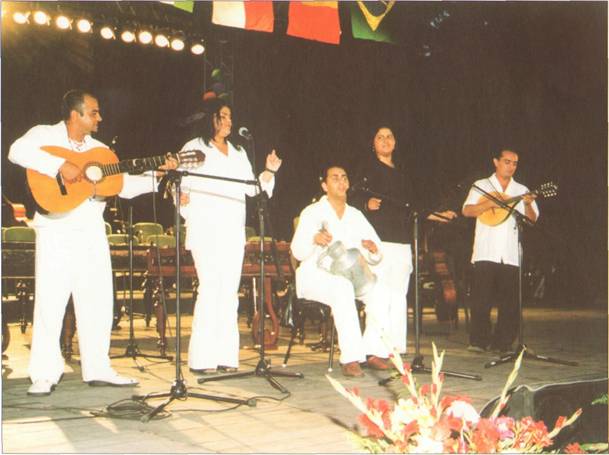
- A Ternipe együttes.
- E Ternyipe grupa.
- The 'Ternipe' band.
- Le groupe 'Ternipe'.
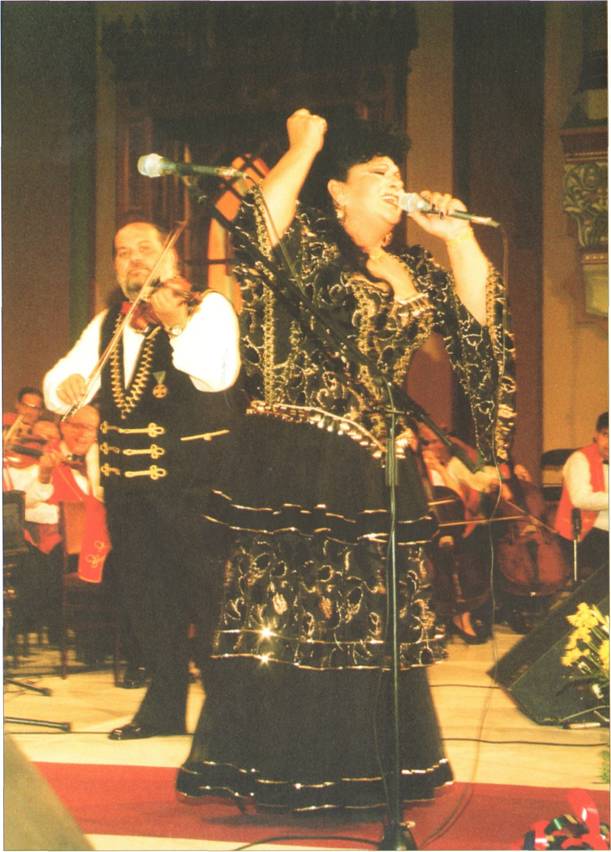
- Bangó Margit cigánynóta énekes a Vigadóban.
- E Bangó Margit romane gilyangi gilyabarica ando Vigadovo.
- Ms. Margit Bangó, Gipsy singer performing at the 'Vígadó' concert hall.
- Mme Margit Bangó, chanteuse tzigane lors d'une soirée dans la salle de concert 'Vígadó'.
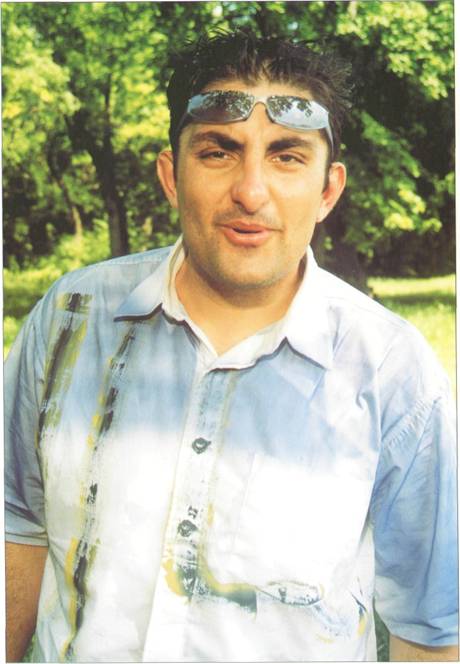
- Gáspár Győző a Romantik együttes vezetője.
- O Gáspár Győzike, le Romantik grupako sheruno.
- Mr. Győző Gáspár, leader of the Romantik group.
- M. Győző Gáspár, chef du groupe Romantik.
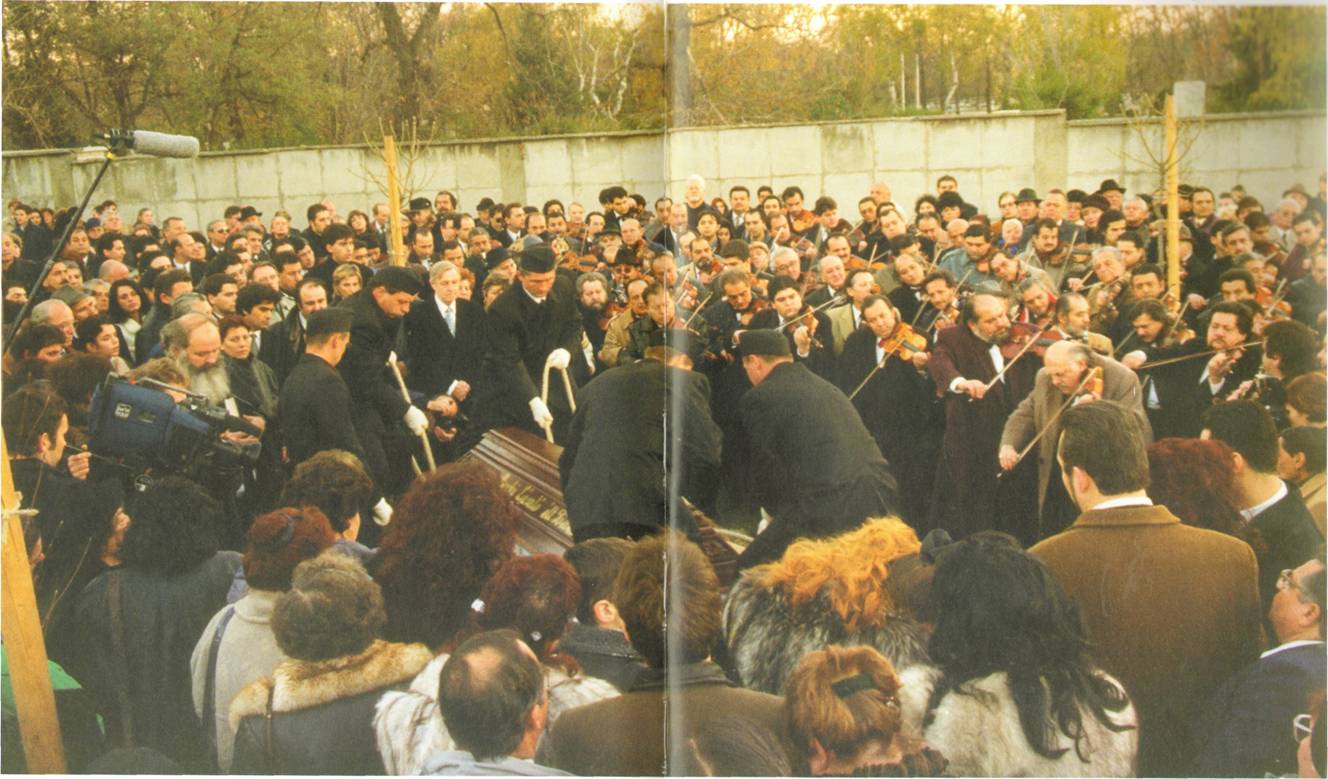
- Berki László világhírű cigányprímás temetése.
- Le Berki Lászlóvosko praxope, kas intrego luma pinzharlas.
- The late Mr. László Berki, world renowned Gipsy first violinist's burial.
- L'enterrement de feu M. László Berki, célèbre violoniste et chef d'orchestre.